The standout shows of Paris Fashion Week S/S 2026 – as they happened
Amid a season of seismic change, we pick the definitive shows of Paris Fashion Week S/S 2026 – including Matthieu Blazy’s Chanel debut and Jonathan Anderson’s first womenswear collection for Dior

- Kiko Kostadinov
- Chanel
- Thom Browne
- Miu Miu
- Sacai
- Chloé
- Jean Paul Gaultier
- Valentino
- Akris
- Celine
- Balenciaga
- Vivienne Westwood
- Junya Watanabe
- Maison Margiela
- Hermès
- Alaïa
- Givenchy
- Victoria Beckham
- Issey Miyake
- Loewe
- Schiaparelli
- Rick Owens
- Carven
- Rabanne
- Acne Studios
- Dior
- Louis Vuitton
- Lanvin
- Courrèges
- Dries Van Noten
- Stella McCartney
Orla Brennan
The fashion industry is in a moment of historic change: over the course of the S/S 2026 season of shows, no fewer than 14 creative directors have presented their debut collections at some of the world’s best-known brands, a seismic shake-up which will no doubt reshape the style landscape for several years to come (add to that a number of sophomore collections from designers who debuted last season and you really do have a new chapter in fashion).
And, while there were a handful of debuts in New York and Milan, Paris saw opening gambits from some major players: most notably that of Matthieu Blazy at Chanel, which took place yesterday evening, a debut that has had fervent anticipation since the former Bottega Veneta designer’s appointment was announced in December (he presented a joyous collection which looked towards Gabrielle ‘Coco’ Chanel’s ideas of ‘modernity and freedom’). Elsewhere, Jonathan Anderson presented his first womenswear collection for Dior on Wednesday, Jack McCollough and Lazaro Hernandez debuted their vision for Loewe on Friday, and Pierpaolo Piccioli and Duran Lantink also made high-profile debuts at Balenciaga and Jean Paul Gaultier respectively.
Here, in our round-up of the standout shows of Paris Fashion Week S/S 2026 – reported from the French capital – we unpack these debuts, alongside a slew of other runway shows that took place across the week, from the blockbuster (Louis Vuitton, Saint Laurent) to the avant-garde (Junya Watanabe, Rick Owens).
Kiko Kostadinov
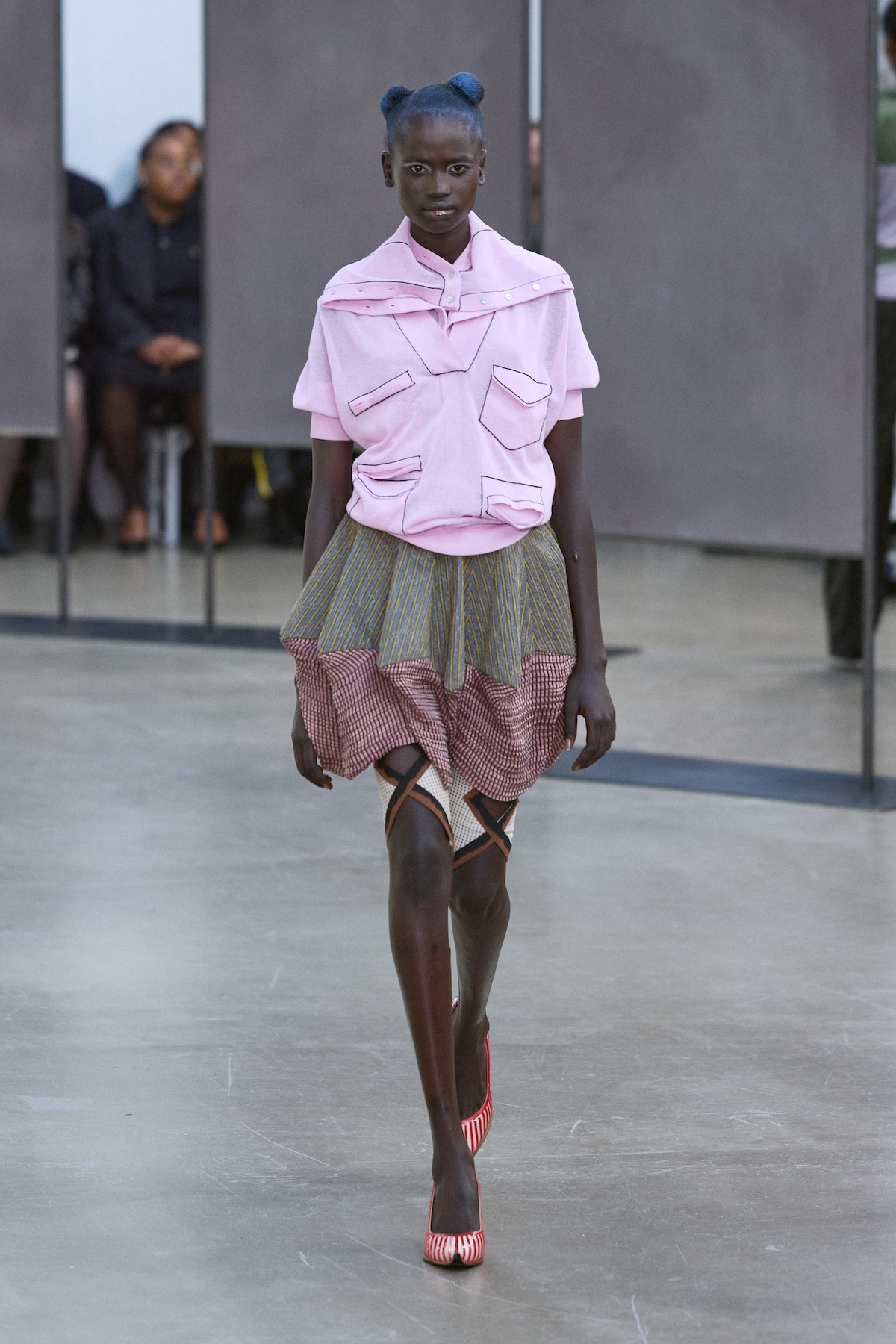
The closing Tuesday of Paris Fashion Week had just a handful of shows from designers who work on a smaller scale – a welcome gear-shift after the sensory overload of a week of blockbuster debuts and fervent online chatter. In an all-white gallery on the sunlit upper floor of the Palais de Tokyo, sisters Laura and Deanna Fanning presented their latest collection for Kiko Kostadinov, a London-based label which has established a close-knit community of followers (many were in attendance today). Known for an avant-garde approach to pattern-cutting and colour combinations – garments have an almost futurist feel – this season the Australian sisters, who helm the brand’s womens line said they wanted to ‘look inwards’.‘ ‘It is not just the clothes we made that matter, but how we made them,’ they said. ‘[We wanted to] return to the practices that defined our beginnings in fashion: [an] exploration of material, composition, proportion, and construction.’
As such, the collection took on a feeling of experimentation and collage, with elements that recalled traditional quilting, folk attire and workwear mixed up in the sisters’ typically offbeat style, while a series of bold three-dimensional chestpieces were more sculpture than clothing. One inspiration was the work of American artist Christina Ramberg and her female figures, ‘hulking bodies with stiff brassieres, jagged corsetry, and backcombed bangs,’ as they described, having been struck by her work on a recent trip to Berlin. ‘We push ourselves to design audaciously, think dynamically and abstractly,’ they said. ‘Even in the most uncertain times, we strive to find a silver lining: a freedom of body and mind.’
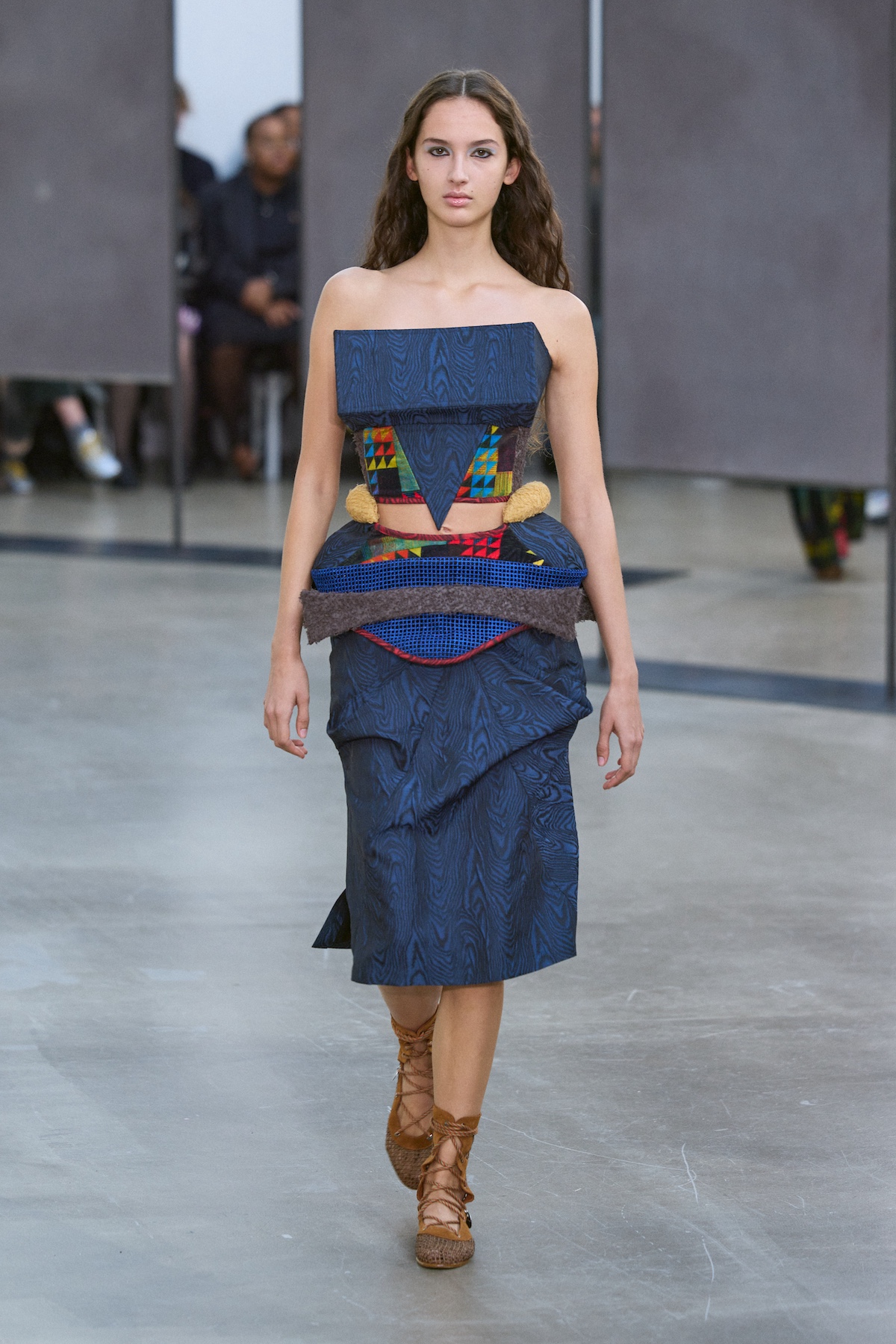
Chanel

It was the most anticipated moment of fashion month, the subject of fervent speculation and hearsay, a noise which was momentarily hushed yesterday evening as guests walked into the Grand Palais for Matthieu Blazy’s Chanel debut. Inside, the French-Belgian designer had conjured a solar system: a series of enormous glowing planets hung from the ceiling, while a black runway recalled the boundless stretch of the universe. In its scale, it recalled the show sets of Karl Lagerfeld, a statement from Blazy – who previously was at Bottega Veneta – that despite the weight of this debut, he wasn’t afraid of going big. In fact, as he told Business of Fashion prior to the show, he saw this as a one-time shot: how many times do you get to debut with Chanel? ‘We can go two ways. Either we do a clean, modern, by the codes, by the book Chanel show, and it’s a first step. Or we do this show as if it were our last,’ he said. ‘I took the last option. Let’s do a show as if it was the last one.’
Inspired by the feeling of ‘modernity and freedom’ which infused house founder Gabrielle ‘Coco’ Chanel’s designs, the show began with a men’s suit and shirt – the jacket a recreation of Blazy’s own blazer (‘I only changed the buttons and added a chain’), the shirt made by Parisian shirtmaker Charvet, in a rare collaboration. He had become fascinated with the couturier’s relationship with the English polo player Boy Capel, who Blazy called her ‘most significant other’ – here, he imagined Gabrielle Chanel wearing Capel’s clothing, something she purportedly did. The latter two chapters of the show were more expressive, and recalled the experimentations with materiality Blazy excelled at during his time at Bottega Veneta: tweed jackets were cleverly manipulated to appear as if they were frayed at their edges (’the worn familiarity of the truly chic, items feel passed down and utilised’), while gowns bloomed with appliqué flowers or dramatic flourishes of feathers, like that worn by the model Awar Odhiang.
Receive our daily digest of inspiration, escapism and design stories from around the world direct to your inbox.
Indeed, the Ethiopia-born, Canadian model seemed to encapsulate the collection’s joyous mood: at the end of the show, she twirled across the runway as the sounds Snap’s ‘Rhythm is a Dancer’ boomed over the speakers. A grinning Blazy joined her for his final bow. ‘I just wanted to have fun,’ he said backstage. ‘Something beautiful and enjoyable – [that’s] what we have to propose in fashion.’ Jack Moss
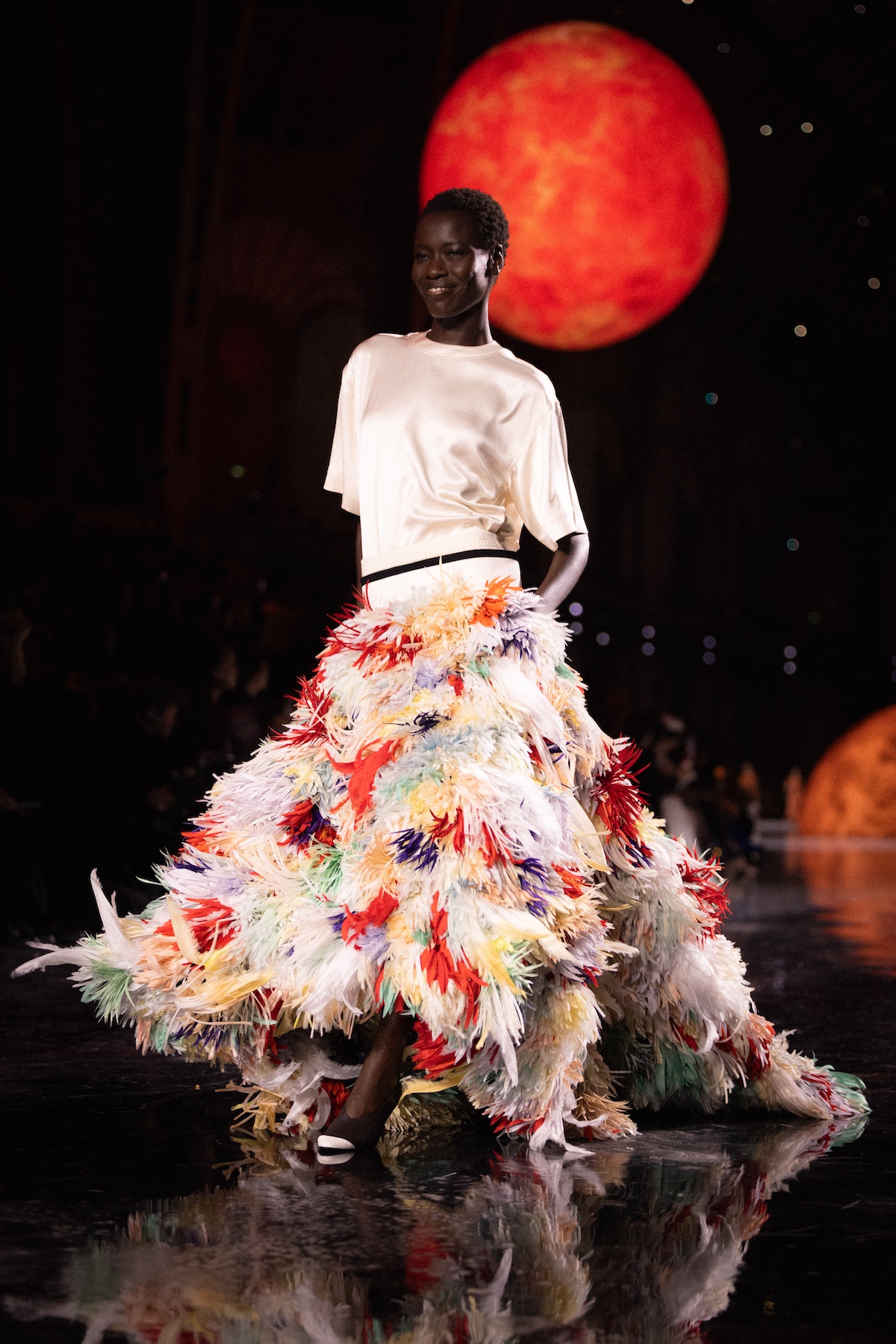
Thom Browne
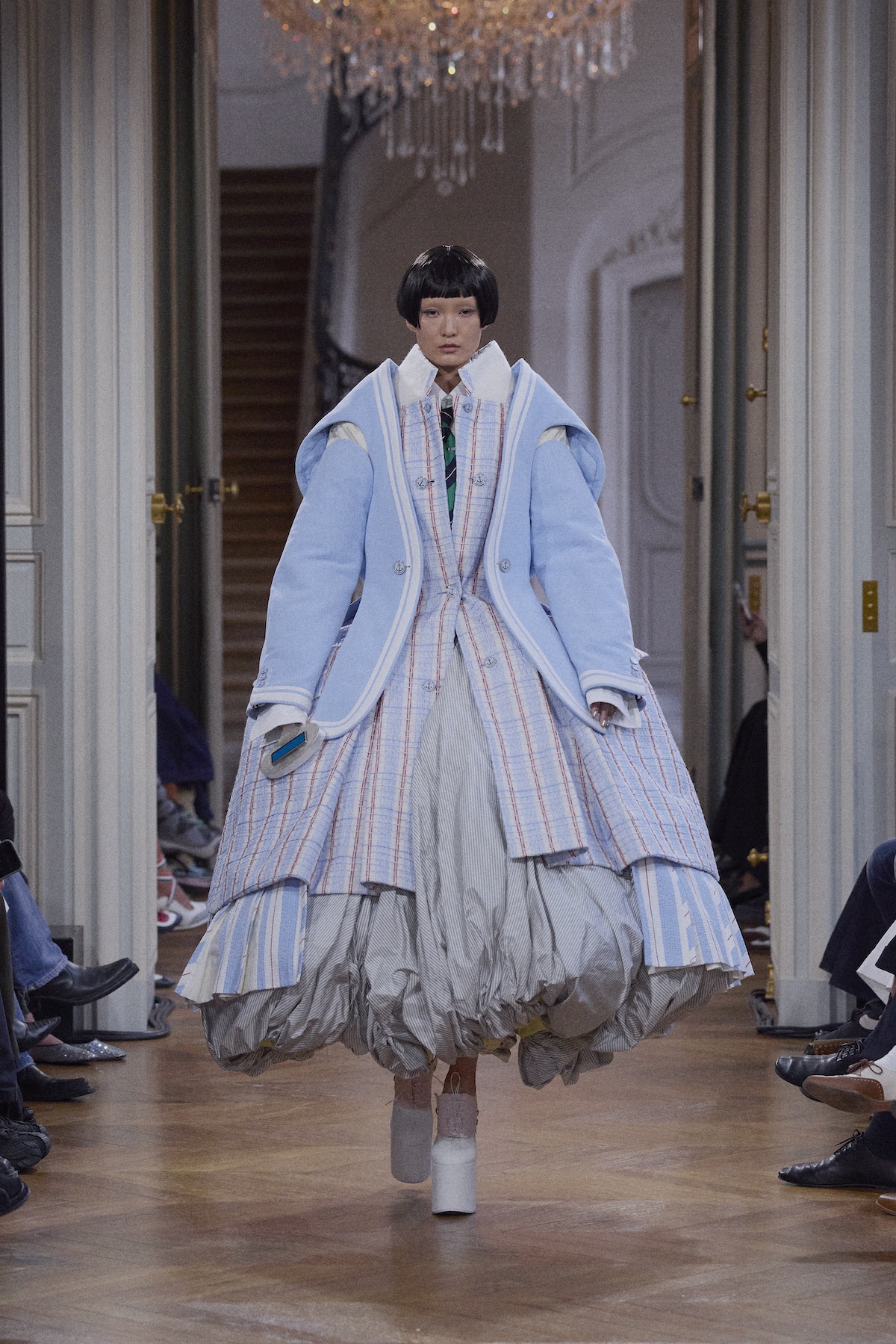
You’ve probably wondered what aliens might be like if they arrived on earth. If you asked Thom Browne, he’d say they’d wear 7-inch platform heels and have glittering green heads. Presented yesterday on the final day of the S/S 2026 season, the designer’s playful show offered a much-needed injection of fun to tired editors, staging a campy alien invasion in the centre of Paris. Starting off with silver extraterrestrial characters who handed out cards that read ‘We come in peace’, the collection that followed was soundtracked by ‘Calling Occupants of Interplanetary Craft’ by The Carpenters.
The clothes themselves saw an over-the-top layering of Thom Browne signatures: assertive sport coats with shoulders twisted forward into sculptural shapes, drop-waist pleated skirts, and shrunken cricket sweaters cropped high on the torso. Bright, preppy palettes and stripes collided with sequinned tulle, while patchwork tweeds and flashes of metallic hardware shimmered ‘like signals from another planet’. It was both surreal and expertly tailored – as Browne’s wardrobe always is – a cosmic collision of classic Americana and otherworldly fantasy. As our fashion features editor Jack Moss noted, ‘it was impossible not to raise a smile.’ Orla Brennan
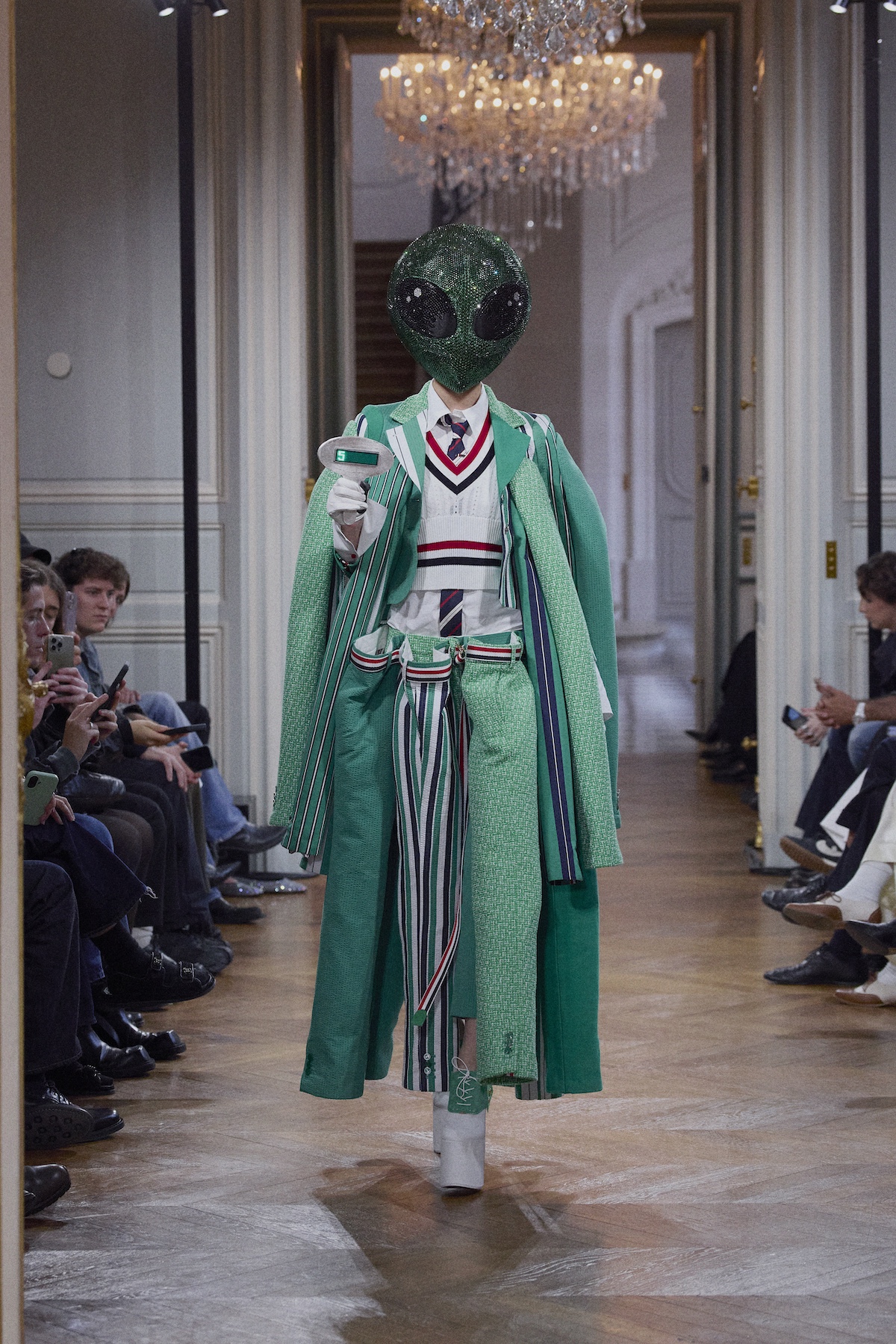
Miu Miu
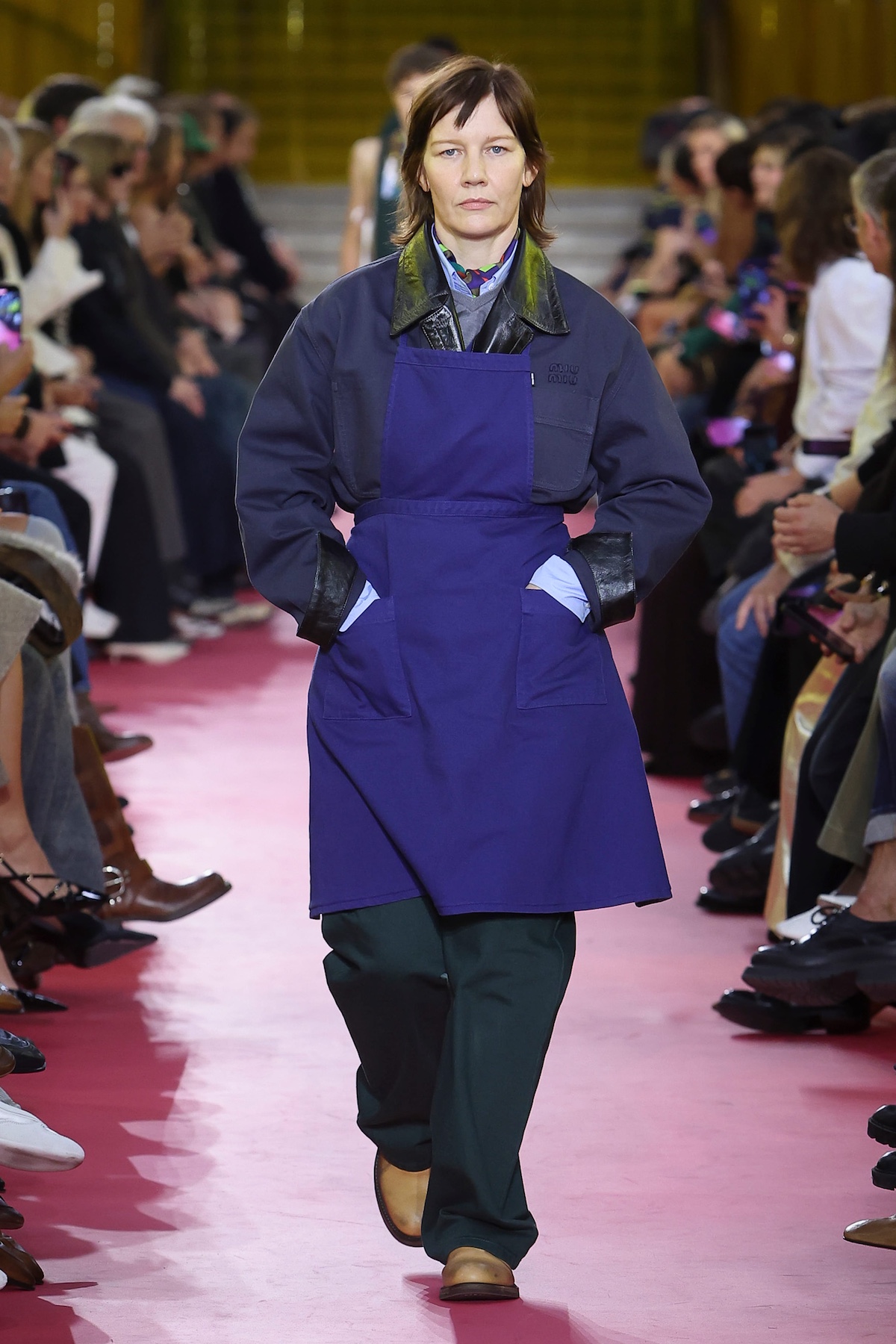
In the mid-1980s, the German photographer Helga Paris spent time at a clothing factory in East Berlin, documenting its female workers in a series of black-and-white portraits. In the images, almost every woman wears an apron, or tabard; despite their function, they remain decorated with markers of femininity, from flowers and polka dots to ruffle trims. Paris’ photographs – as well as those of Dorothea Lange of women at work – provided the starting point of Miu Miu’s latest collection. Miuccia Prada said she had been thinking about ‘the importance of work. Its significance, its relevance and meaning.’ ‘We in fashion always talk about glamour or rich people, but we have to recognise that life is also very difficult,’ she said backstage. ‘And to me the apron contains the real difficult life and pain women in history, from factories to the home.’
Watched on by guests perched on rows of Formica tables in place of chairs or benches – they suggested the kitchen, or perhaps a worker’s canteen – this consideration of a woman at work led her to the apron, a garment writ with connotations. Versions spanned the resolutely utilitarian (like that in canvas, worn by actress Sandra Hüller to open the show), to the vaguely fetishistic (iterations came in leather or black taffeta, with French Maid-like ruffles), to those featuring floral prints, recalling cleaners and kitchen staff. A series of bejewelled versions, meanwhile, exalted and transformed the garment. ‘The apron is my favourite piece of clothing in general,’ said Mrs Prada backstage, which is no surprise. The uniform has always been a fascination for this designer: here, in this latest study, it was valorised – a recognition, said the designer, of the oftentimes invisible weight of women’s work. Jack Moss
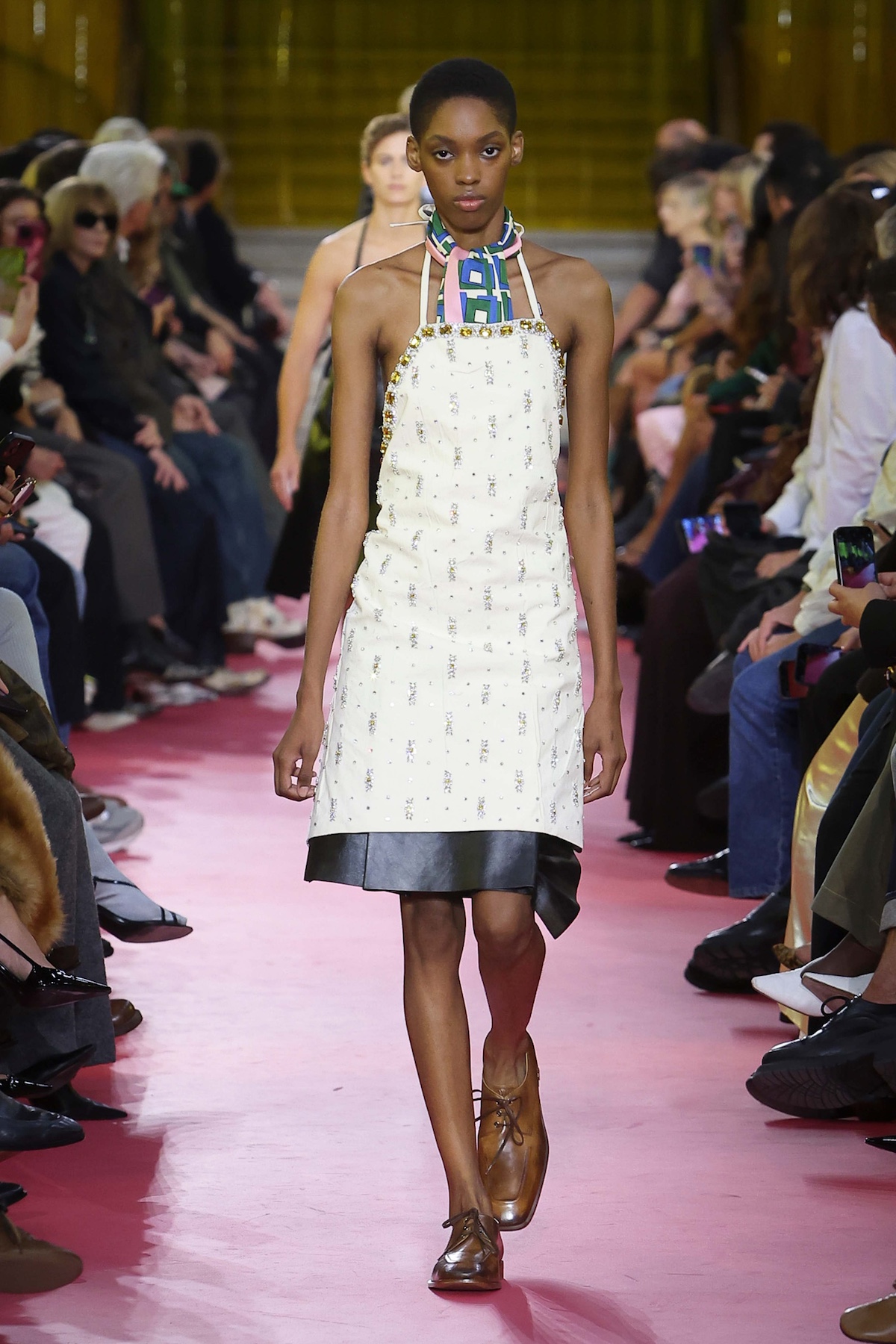
Sacai

In the summer, Chitose Abe found a new home for Sacai – a brightly lit studio space in the 6th arrondissement, where Nicolas Ghesquière was based during his fabled tenure at Balenciaga in the 2000s. Sparking ideas of home and what it means to stay – and indeed, to leave – a place, her S/S 2026 collection arrived yesterday against ‘a backdrop of changing tides in fashion’ (the designer showed on the final day of a season of never-before-seen house-hopping, and the morning of Matthieu Blazy’s Chanel debut). Away from the noise of it all, she turned her attention to ‘what is undeniably and irrefutably Sacai.’
A storyline of the brand’s signature hybridisations unfolded in tailored looks of beautifully exaggerated proportions, moving from formal black and white to shades that recalled the explosion of spring – earthy greens and pink florals. Taking the simple act of ‘up-turning’ garments to extremes, sculptural silhouettes emerged from cargo pant legs folded into voluminous skirts and tank tops turned up to form blouses; while elsewhere, ideas of falling and unravelling appeared in fringed tweeds and hoodies that morphed into ruffled dresses. Beautiful and quintessentially Sacai, it was, said the show notes, the designer’s ‘boldest expression of her vision’. With it, she seemed to say: I’m not going anywhere. Orla Brennan

Chloé
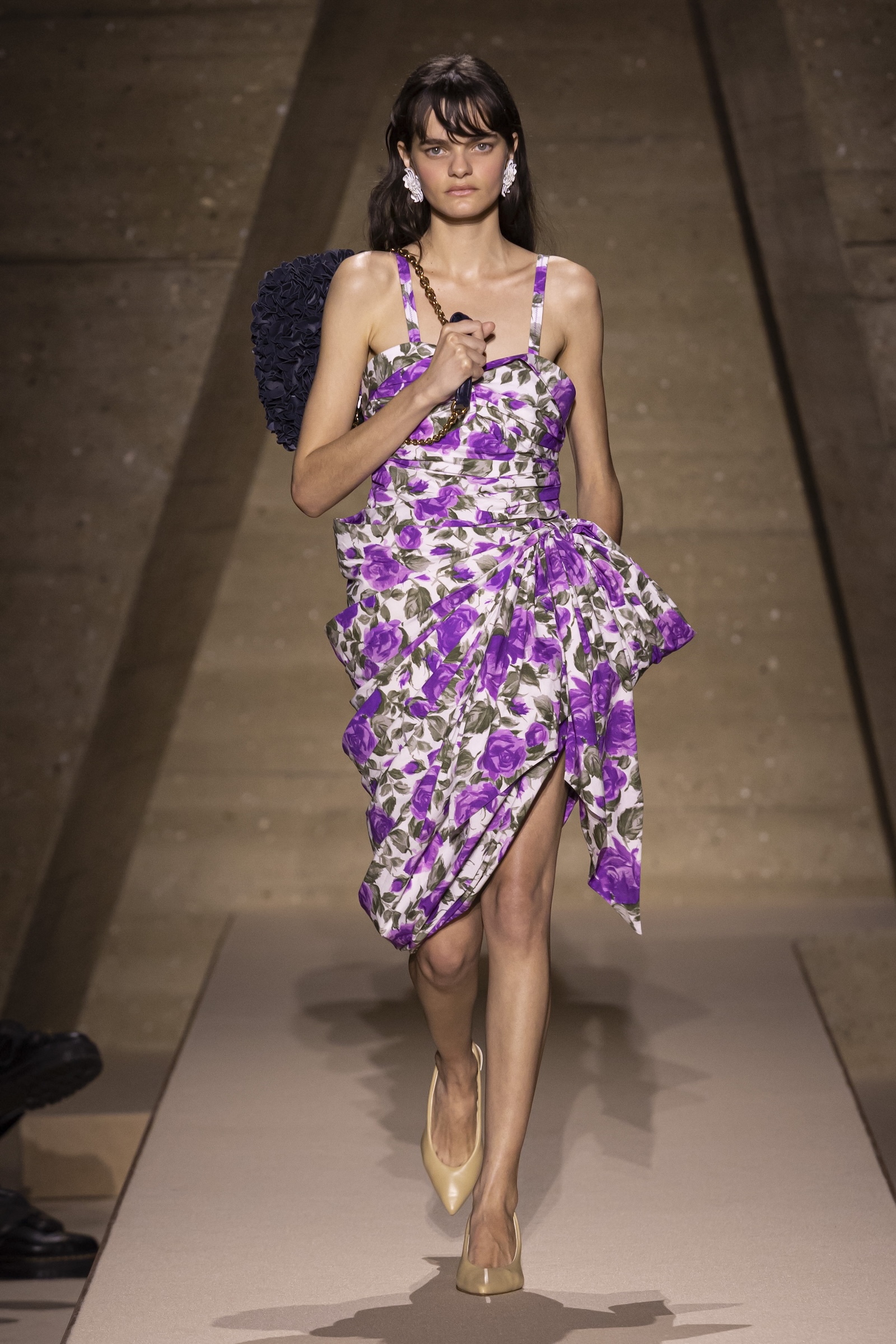
Gaby Aghion founded Chloé in 1952 as an antithesis to the unrestrained luxury of couture, finding its exclusivity out of step with the contemporary woman. ‘A thing of beauty and quality should be seen on women in the streets,’ she famously once said. At the risk of going against the principles of the house’s founder, Chemena Kamali’s S/S 2026 collection looked to the world of couture for inspiration, parsing its meticulous craftsmanship through the brand’s effortless, liberated codes. ‘I liked the idea of going back to what Gaby Aghion rejected without betraying the original DNA of the house,’ she said. ‘I wanted to explore what the idea of couture could mean in the Chloé context.’
Shown at the UNESCO headquarters, Kamali’s collection found its starting point in the first collections Aghion presented for Chloé nearly 70 years ago at Café Flore and Brasserie Lipp – silhouettes that drew on the resplendent femininity of couture without the formality of boning, padding or ornate decoration. Employing a similar sense of lightness, Kamali’s clothes took on an instinctive volume and movement, transforming humble fabrics like cotton poplin into elegant silhouettes through pleating, knotting and drapery. Breaking from the soft neutral palette associated with Chloé, bright florals plucked from the house’s archives brought an enlivened spirit to the collection, which translated the grandeur of couture into a wardrobe that, as Aghion would have it, one could imagine on real women in the street. The setting – a postmodern building that serves the public – was, said the designer, intentional: ‘UNESCO is a place that stands for open dialogue and exchange, freedom and openness,’ she said. ‘A place that honours creativity in all its forms.’ Orla Brennan
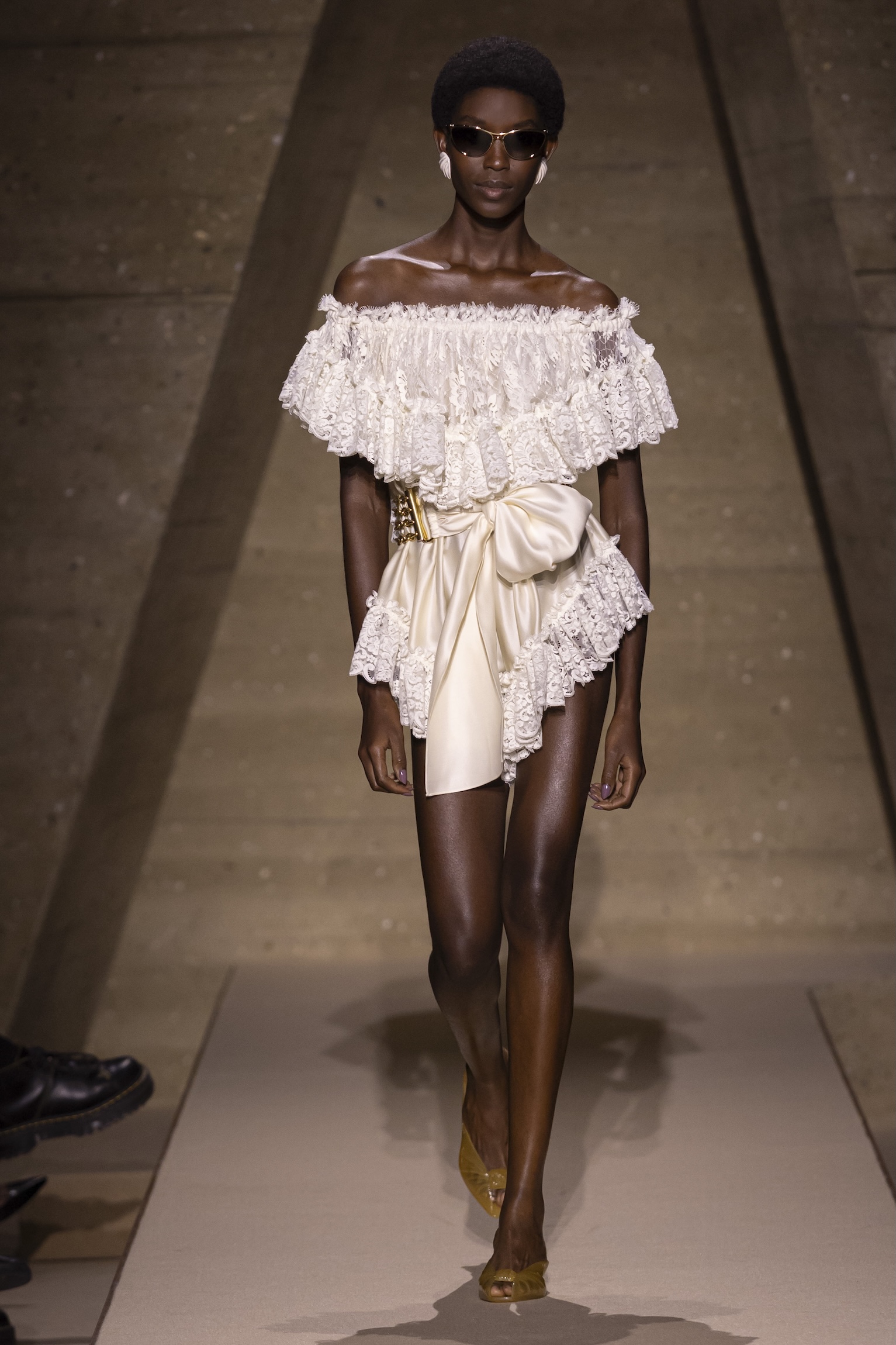
Jean Paul Gaultier

The buzzy Dutch Duran Lantink has made a name with collections which take the archetypal elements of a wardrobe and exaggerate their proportions to surreal effect. It made his eponymous label – currently on pause – one of Paris’ most talked-about, and indeed critically lauded, labels, the winner of the Karl Lagerfeld award at the 2024 LVMH Prize (though not without some controversy: a pair of bouncing fake breasts worn by a male model at his A/W 2025 show proved divisive).
For his debut collection for Jean Paul Gaultier, held in the bunker-like basement of the Musée du Quai Branly on Sunday afternoon, Lantink brought this playful approach to the Gaultier archive, undertaking what he called a ‘Duranification’ of the house and its signatures. The conical bra was exaggerated into cushion-like protrusions which jutted outwards from the body; the sailor’s hat was blown up to become a hem of a top, while trompe l’oeil prints gave the illusion that the model was completely nude.
Lantink said he had been inspired by the younger Jean Paul Gaultier ‘Junior’ line, which ran from 1988-1994, and – while generally eschewing the moodboard in favour of working intuitively – photographs from Amsterdam nightclub RoXY taken by Cleo Camper in 1988, a nightspot Gaultier himself had attended. ‘RoXY was sweaty, debaucherous, anarchic, stylish in the most careless way,’ said Duran – an apt description of the collection itself, which in its bold, unapologetic vision felt like a welcome jolt to the system. An emotional Gaultier, himself a master of the shock factor, seemed to approve. Jack Moss
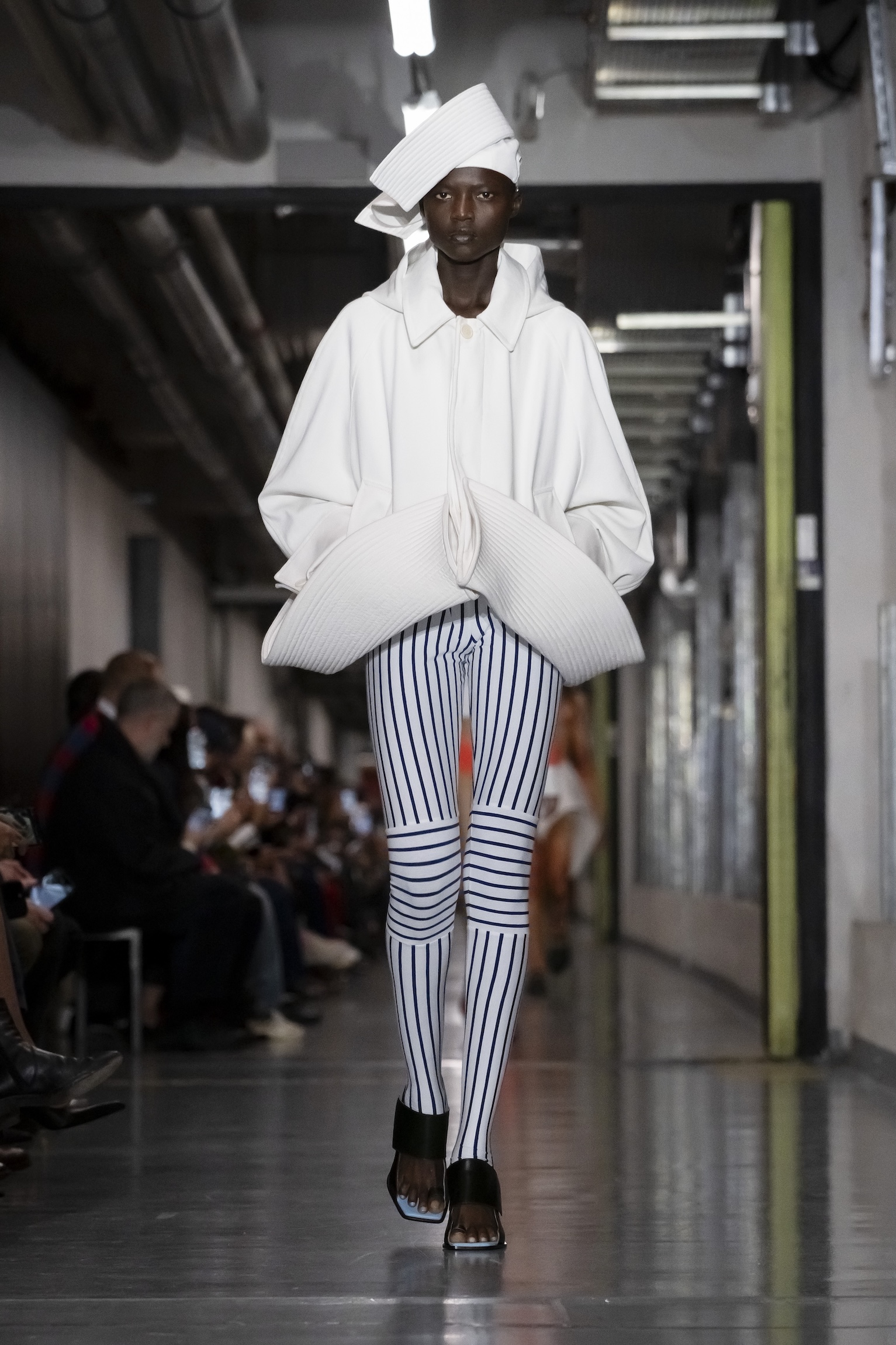
Valentino
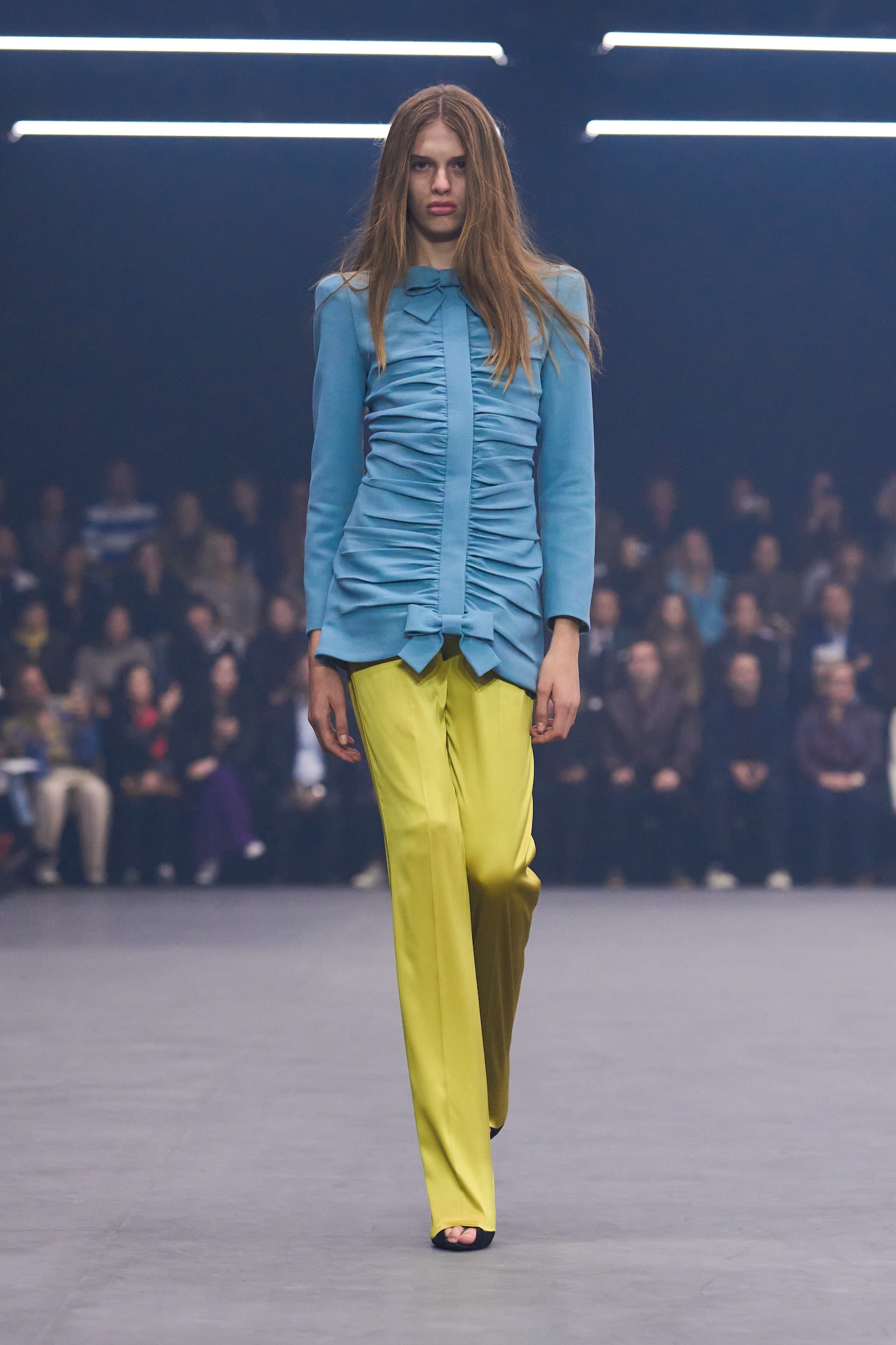
The show set for Alessandro Michele’s latest Valentino show was, by the designer’s standards at least, relatively minimal. Centred around a square-shaped black runway, interest came from a series of lights which whizzed and swirled across the ceiling – a symbolic representation of a swarm of fireflies, the glowing insect from which this S/S 2026 collection took its name. A voiceover at the start of the show explained their relevance: Michele had begun this collection by looking towards a 1941 letter sent by Pier Paolo Pasolini to a childhood friend in which he talks about the magic of seeing fireflies in the forest. ‘We envied them because they loved each other, because they longed for each other through amorous flights and lights,’ it read. For Michele, as the voiceover (read by Pamela Anderson) continued, these ‘erratic luminescences bursting with life’ represented ‘the ability to resist the darkest night’ – namely, the rise of fascism and the onset of World War II.
Such an evocation was a clear allusion to our current tremulous era of political discontent, which Michele likened to an onset of ‘darkness’. He said that fashion is an unlikely but ‘precious ally’ in such moments – a reminder of ‘beauty that resists standardisation’, something resolutely human that connects us to the body. Clothing this season was a little more stripped back than the past two collections for the house, though still came with gestures of glamour: voluminous blouses were worn with gathered velvet skirts, sinuous gowns came in bold jewel tones or were sheer and adorned with crystals, while the bow continued to be a motif, appearing on the necks of blouses or the hem of a skirt. At the end of the show, the colourful coterie of models gathered on the runway, gazing upwards to the swirling lights above – it made for a cinematic tableau, a reminder of Michele’s ability to draw emotion with his runway shows, which are always directed with a showman’s flourish. Jack Moss
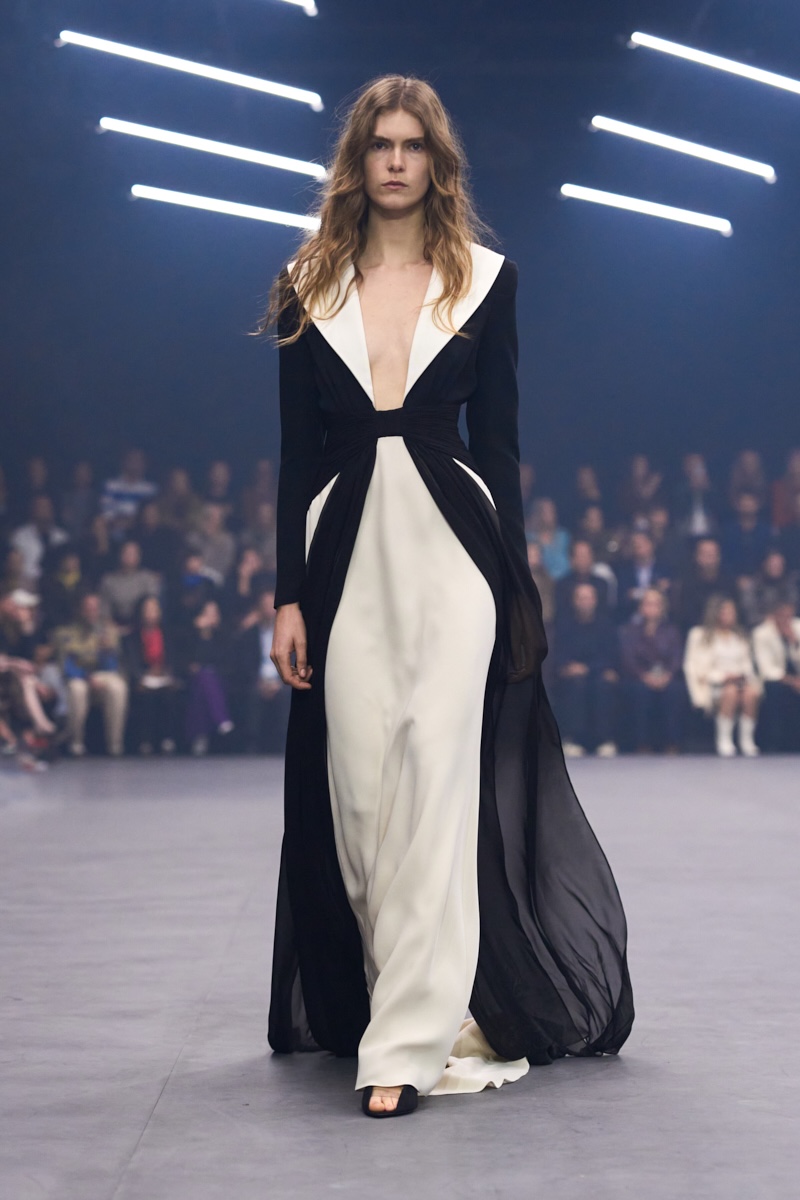
Akris
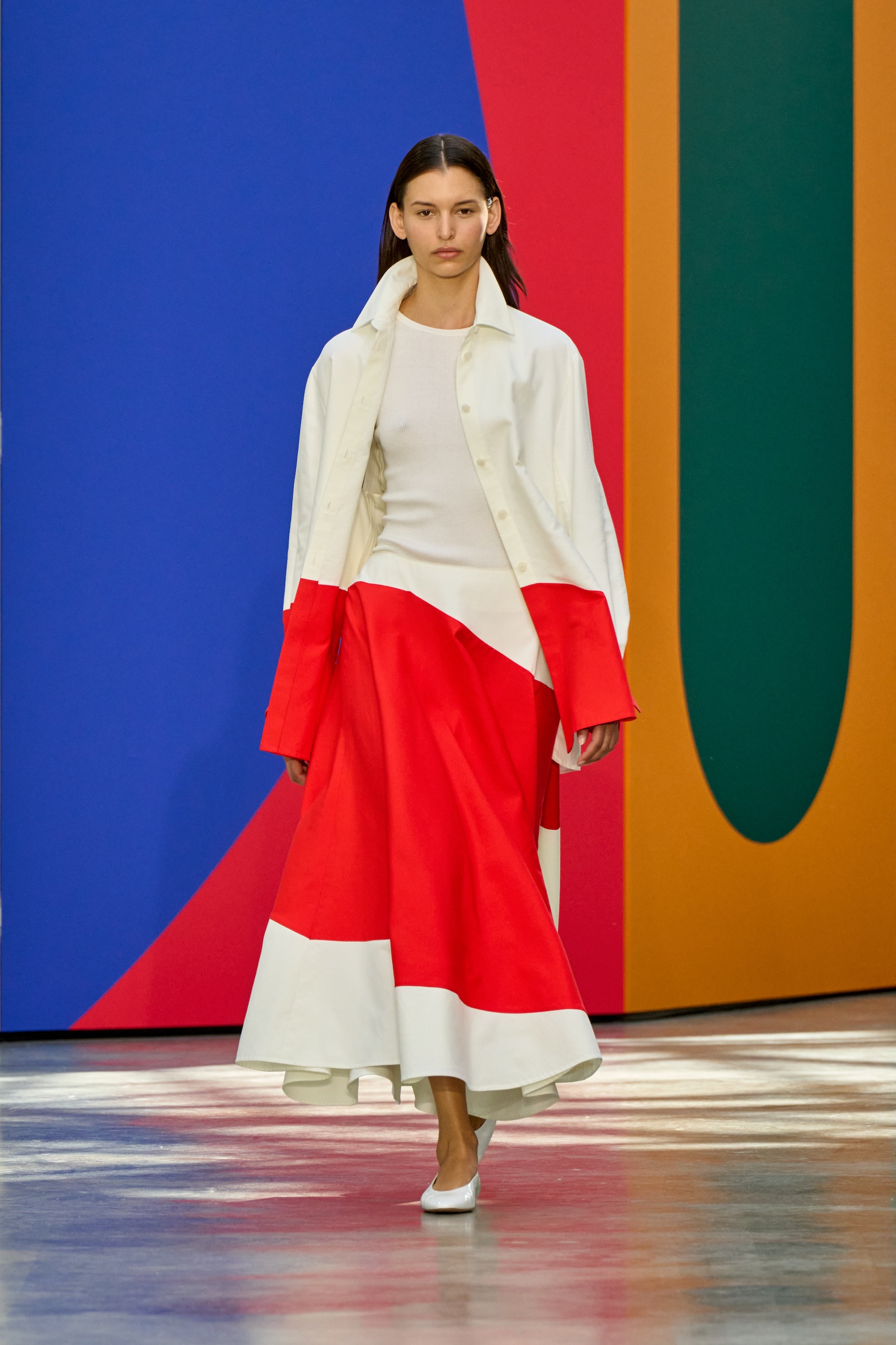
American abstract art is having a moment at Paris Fashion Week. For their Loewe debut, duo Jack McCollough and Lazaro Hernandez drew upon the work of Ellsworth Kelly, using a 1989 masterpiece by the artist as a symbol of the ‘optimism and spirit’ they hope to bring to the Spanish house. Yesterday, in the Grand Verrièr space at the Palais de Tokyo, designer Albert Kriemler looked to the work of Oklahoma-born Leon Polk Smith for his latest Akris collection, using the vivid, hard-edged style of Smith’s paintings as a starting point for a collection rooted in ‘sensuality and intuition’. Unlike McCollough and Hernandez, however, Kriemler is no stranger to the brand he leads – the Swiss designer took over duties at Akris from his parents in 1980 (the brand was founded by his grandmother over a century ago, in 1922).
Kriemler first encountered Smith’s painting ‘Seven Involvements in One’ at Haus Konstruktiv in Zurich in 2023, describing the work as a ‘free-standing object full of pulse and offbeat bravado’. Beyond the obvious parallels in the collection’s bright colour palette, Kriemler says he was most inspired by the idea of paring clothes back to their essence. As such, classically elegant shirting and sweeping skirts appeared in shades of red, orange and yellow, while structure emerged through the properties of the materials themselves: trapezoid gowns crafted from embroidered couture-level fabrications, draped fringe knits, sharp cotton suiting and horsehair accessories. ‘Smith once said he thought of his work as the opposite of minimal,’ said the designer. ‘I can relate to that. [Akris] is not about looking minimal; it’s about being essential. It's about using form and fabric to bring a person to light.’ Orla Brennan
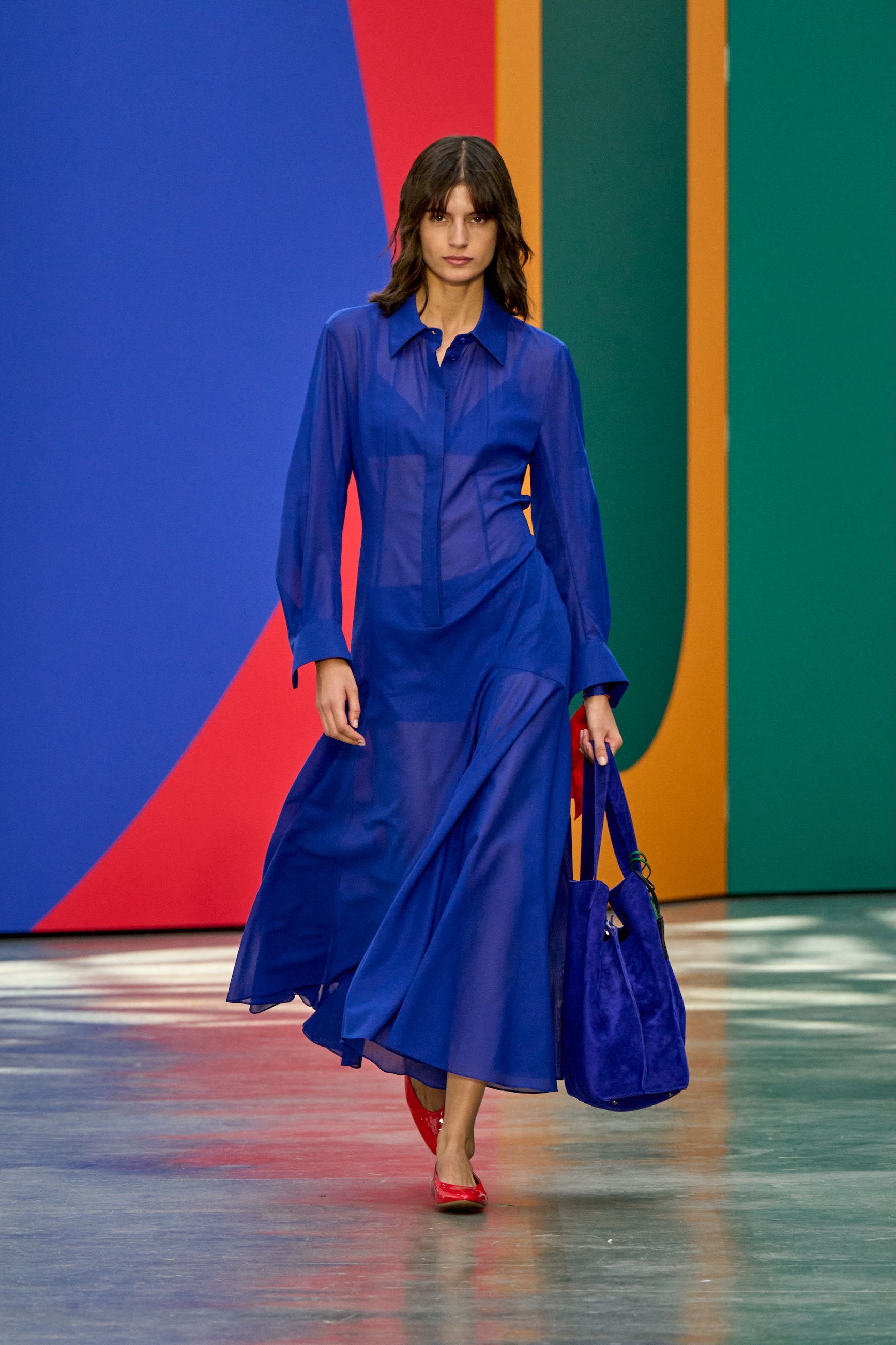
Celine
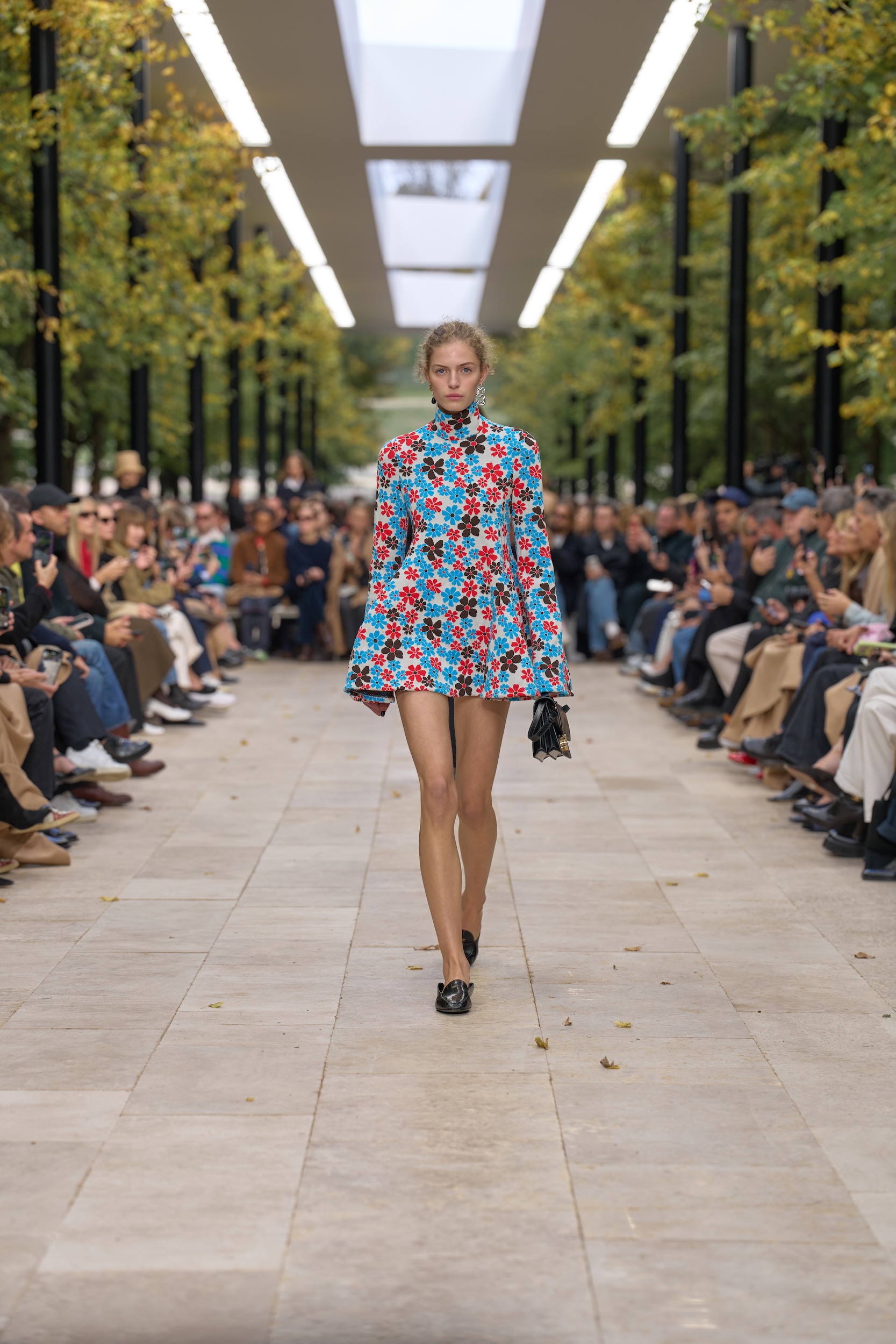
‘I thought it would be nice on a Sunday if we get out of the city and to a park,’ said the American designer Michael Rider of his decision to show in Parc de Saint-Cloud, a bucolic estate just outside of Paris which was once the grounds of chateau owned by Philippe I, Duke of Orléans (the building no longer remains, having been bombed during the Franco-Prussian War). The journey was worth it: here, in the fresh midday air, Rider presented a collection of clarity and focus, which he said was a ‘continuation’ of his debut for the house, a resort show held this past July during Haute Couture Week. With that collection, he cleverly synthesised elements of Hedi Slimane and Phoebe Philo’s tenures at the house (he previously worked there under the latter), with his own vision of French style – a little preppy, modern but timeless (his previous role at Polo Ralph Lauren was also an influence). ‘[I] did not want there to be a sense of erasure. There was a foundation to build on. That to me felt modern, it felt ethical, it felt strong,’ he said at the time.
Here, for men and women, the idea of a full wardrobe continued: there was brilliant tailoring, widened at the shoulder and long in the body (iterations came in bourgeois navy blazers and tuxedo jackets), volumnious trench coats with colourful foulard-print linings, and dresses which shifted between flared minis in 1960s floral prints, and billowing twisted gowns, the latter a pitch to the Philo woman. Elements of preppiness continued, like colour-blocked silk rugby shirts for men (though could equally be shared by women), or crisp white shirts and chinos. Trousers were cut both baggy and wide, or super-skinny (a nod, perhaps, to Slimane’s most well-known silhouette). In another designer’s hands, this kind of wide-ranging collection could fall flat, but Rider already seems to have honed in on what makes a shopper tick. ‘We were thinking about what Celine is and what it isn’t,’ he said. ‘About things that last, and things that are just a moment. And about how clothes, shoes, and all of it become a part of the memories we make wearing them.’ Jack Moss

Balenciaga
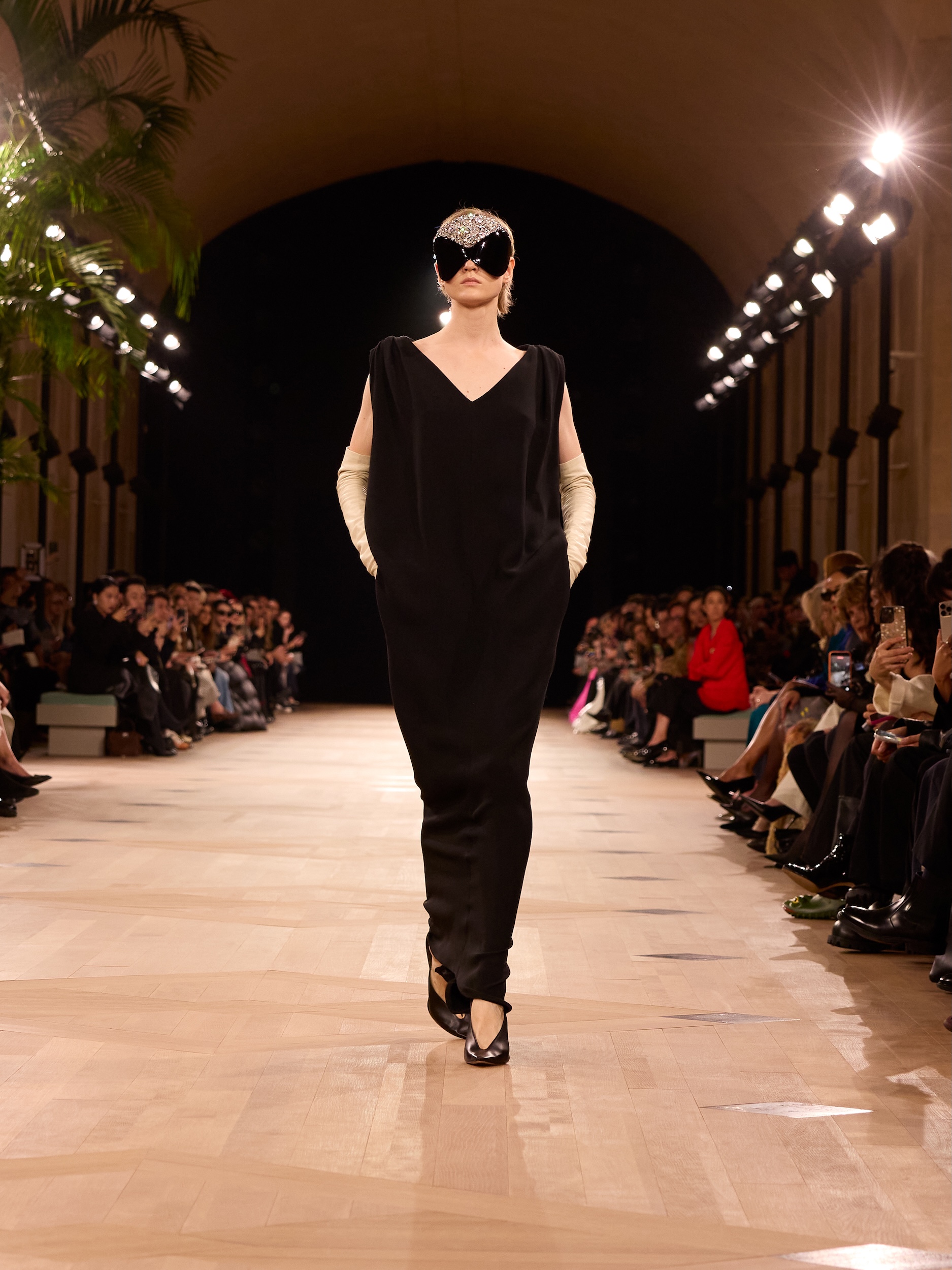
At Valentino, Pierpaolo Piccioli established himself as one of fashion’s best-loved designers with straight-from-the-heart collections, defined by an expressive use of colour and a generosity of silhouette. No wonder, then, that his first show for Balenciaga last night – taking the reins of the Parisian house from Demna – was titled ‘Heartbeat.’ Teased with a show invite in the form of a cassette tape which played the sound of a beating heart, the mood at the Kering HQ on Rue de Sevres was buoyant, with a starry front row of longtime muses, including Anne Hathaway, as well as some newer fans gathered to witness his debut (notably, the Duchess of Sussex, Meghan Markle, in a rare public appearance).
Though there were no signs of nerves here: instead, the confident opening outing was an exercise in form and silhouette, with Piccioli translating archetypal Balenciaga couture garments – in particular, the trapeze-like line of the 1957 ‘Sack Dress’ – into resolutely modern pieces nonetheless infused with the mood of romance which has run through Piccioli’s oeuvre. The latter was expressed in moments of embellishment, whether the blooming floral appliqué across a hooded jacket, or flourishes of tassels and feathers. Colour was typically vivid, though a series of pieces in black leather – and the bug-eyed sunglasses worn throughout – felt a nod to the moodier aesthetic of his subversive predecessor (and a bid, no doubt, to retain that customer).
It ended with a standing ovation: this was another heartfelt collection from Piccioli – it’s the only way he knows how. ‘For every heartbeat there is a name, a moment, a gesture,’ he wrote in a letter distributed at the show. ‘This collection comes from that place of love and connection. It is as much mine as it is of those who lived it with me – in every way.’ Jack Moss
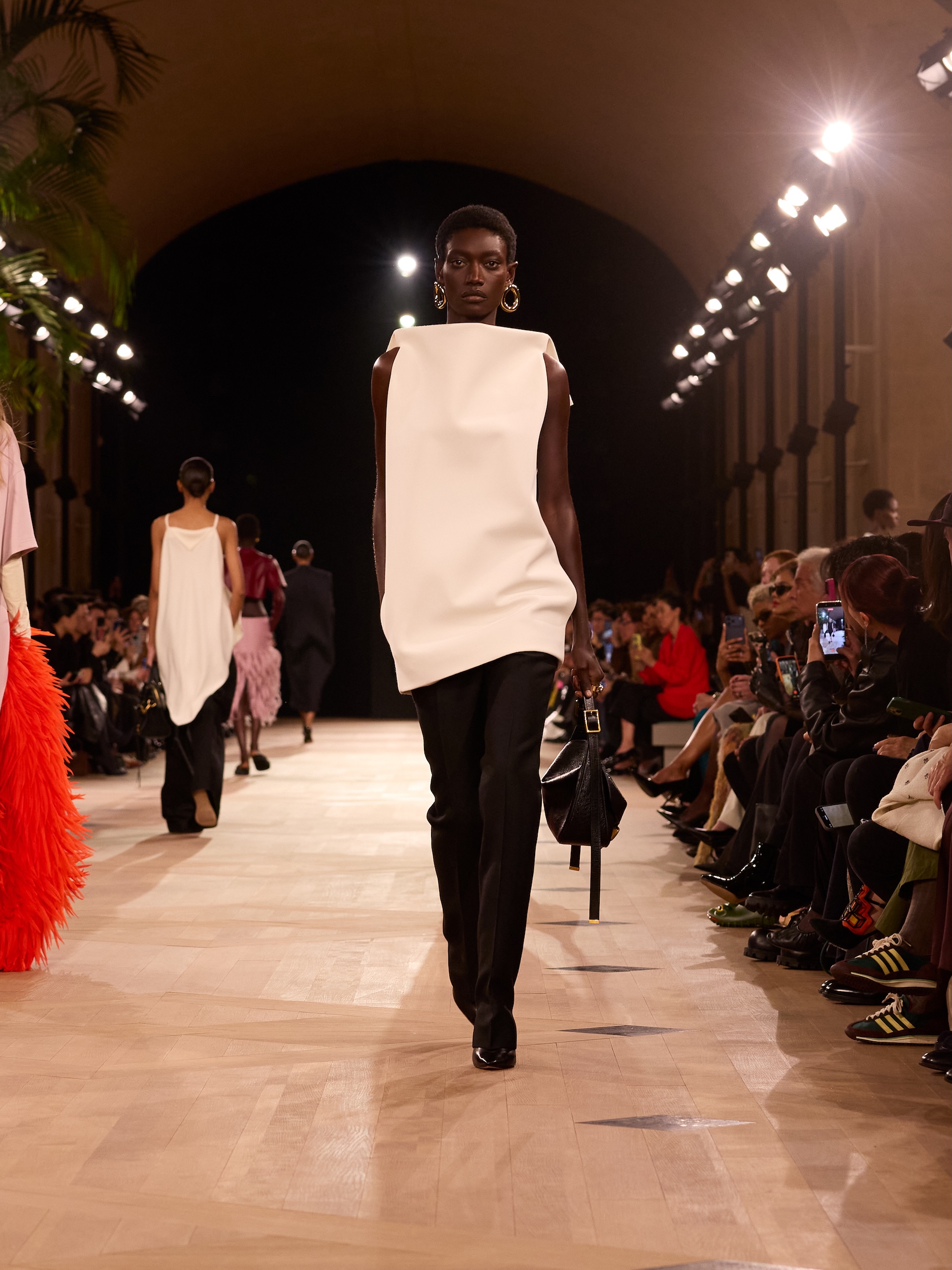
Vivienne Westwood
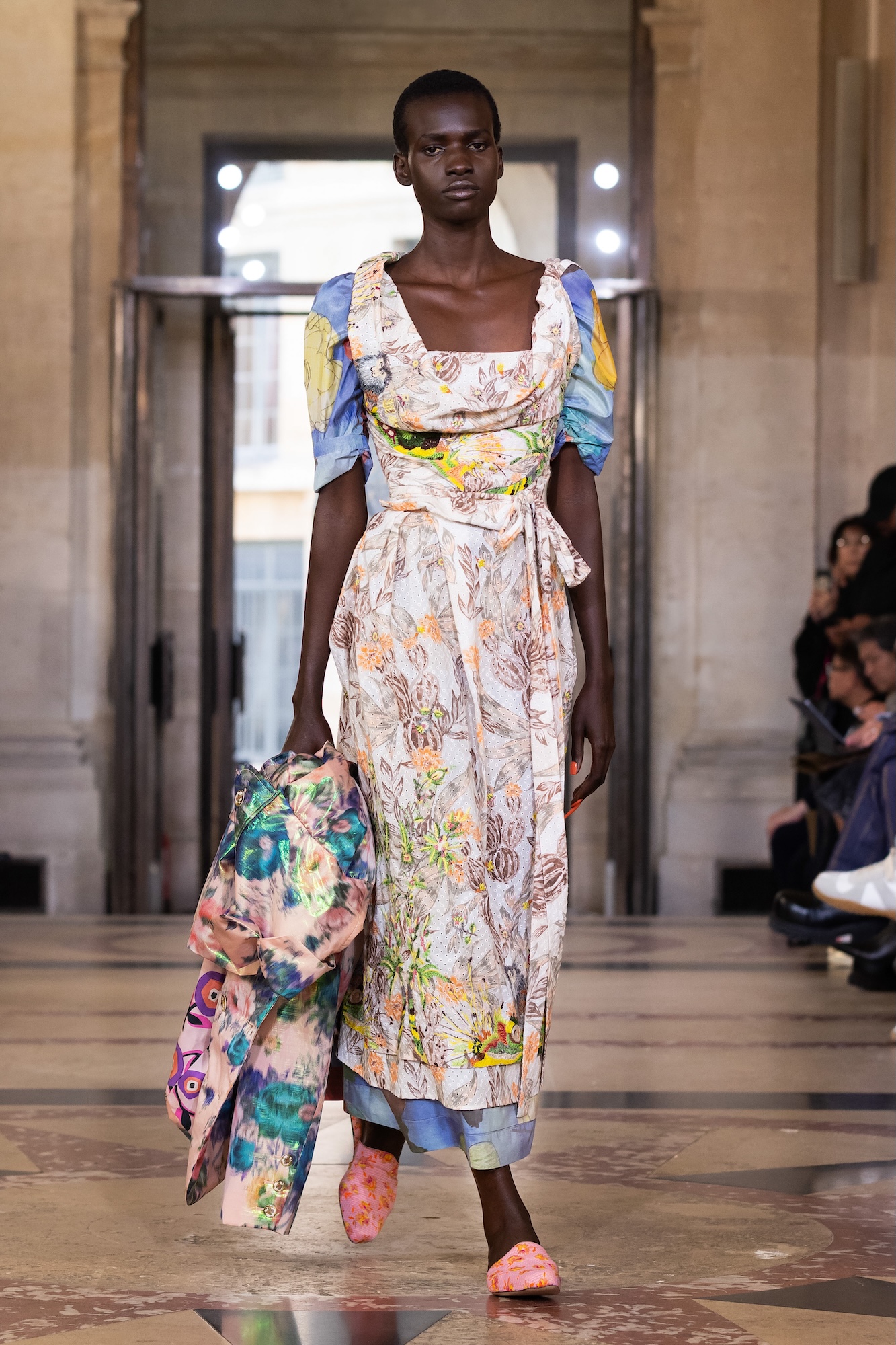
In 1998, Vivienne Westwood and Andreas Kronthaler released a scent created in collaboration with master perfumer Martin Gras. Inspired by the heavy, antique perfumes of Versailles, the couple named it Boudoir. Shown in the Ikebana room of L’Institut de France, Kronthaler’s S/S 2026 collection for the house shared the same name. ‘It’s all about a private, secret space without non-stop distraction,’ he said after the show. ‘It’s this space where you are nearest to yourself, where truth lies.’
The collection that followed made for a particularly sensual display from the eccentric Austrian designer, who has designed in Westwood’s memory since her passing in 2021. Starting by looking at designs of decadent antique bedroom drapes, this season an attention to fabrics recalled the deep romance of Italy – where Kronthaler spent much of the summer – mixing the brand’s cult patterns with brocade lace you’d find in typical Italian markets, embroideries left in drawers of Sicilian villas, and punched leather that appeared worn and ‘lived in’.
Silhouettes, meanwhile, were typically esoteric: waist-cinching bodices, bunched and chaotically draped hemlines, and off-kilter tailoring rooted in Westwood’s subversive codes. It was a love letter to Milan, where the designer lives; to London, the brand’s spiritual home; and to Paris, where Westwood had long presented its shows. Kronthaler’s final message came through the show’s soundtrack. ‘We are living in a world of great change; therefore, I’ve chosen the last movement of Jupiter by Mozart as the music,’ he said. ‘It’s a sound that foresees the future in the most hopeful way.‘ Orla Brennan
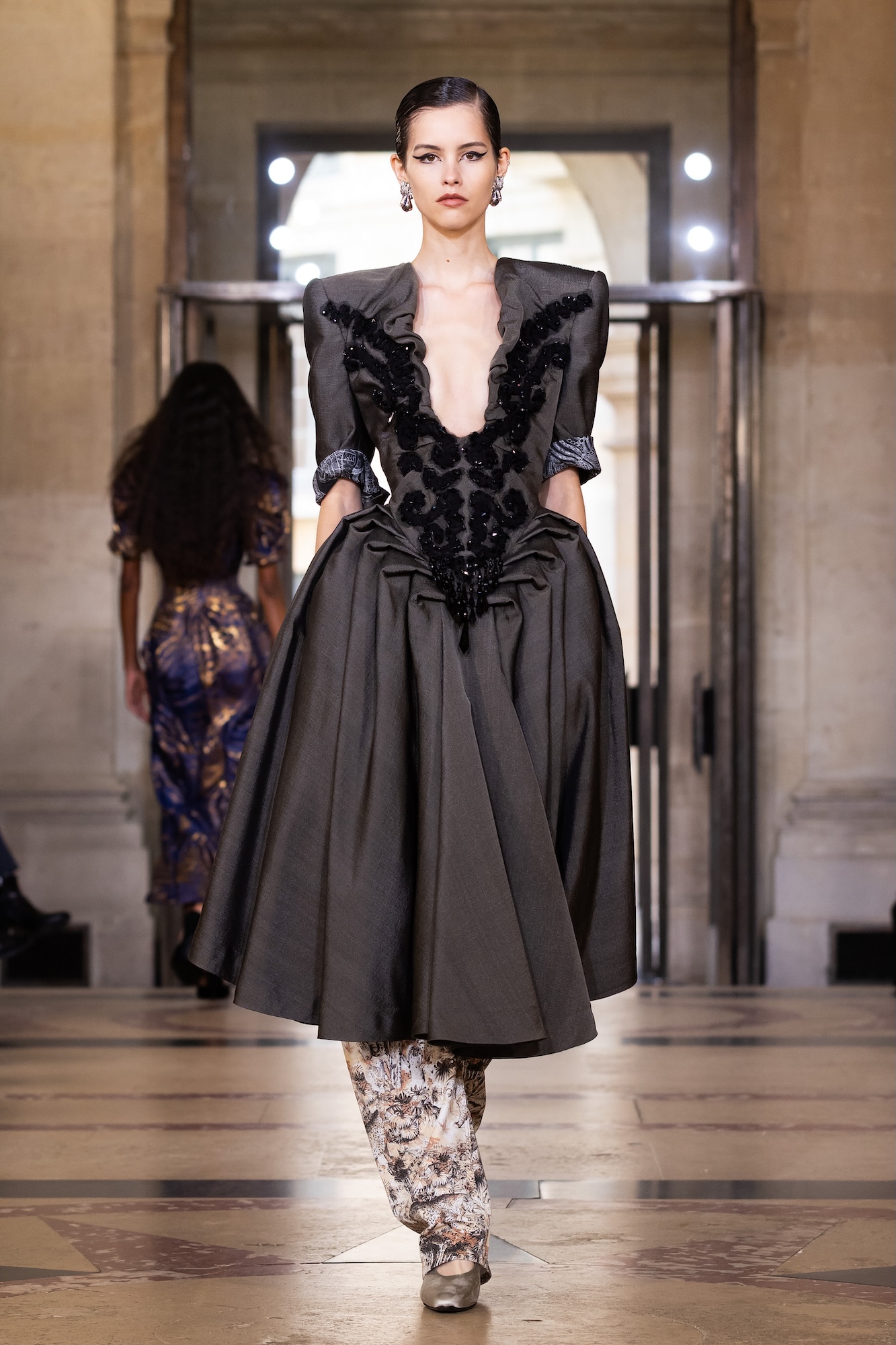
Junya Watanabe
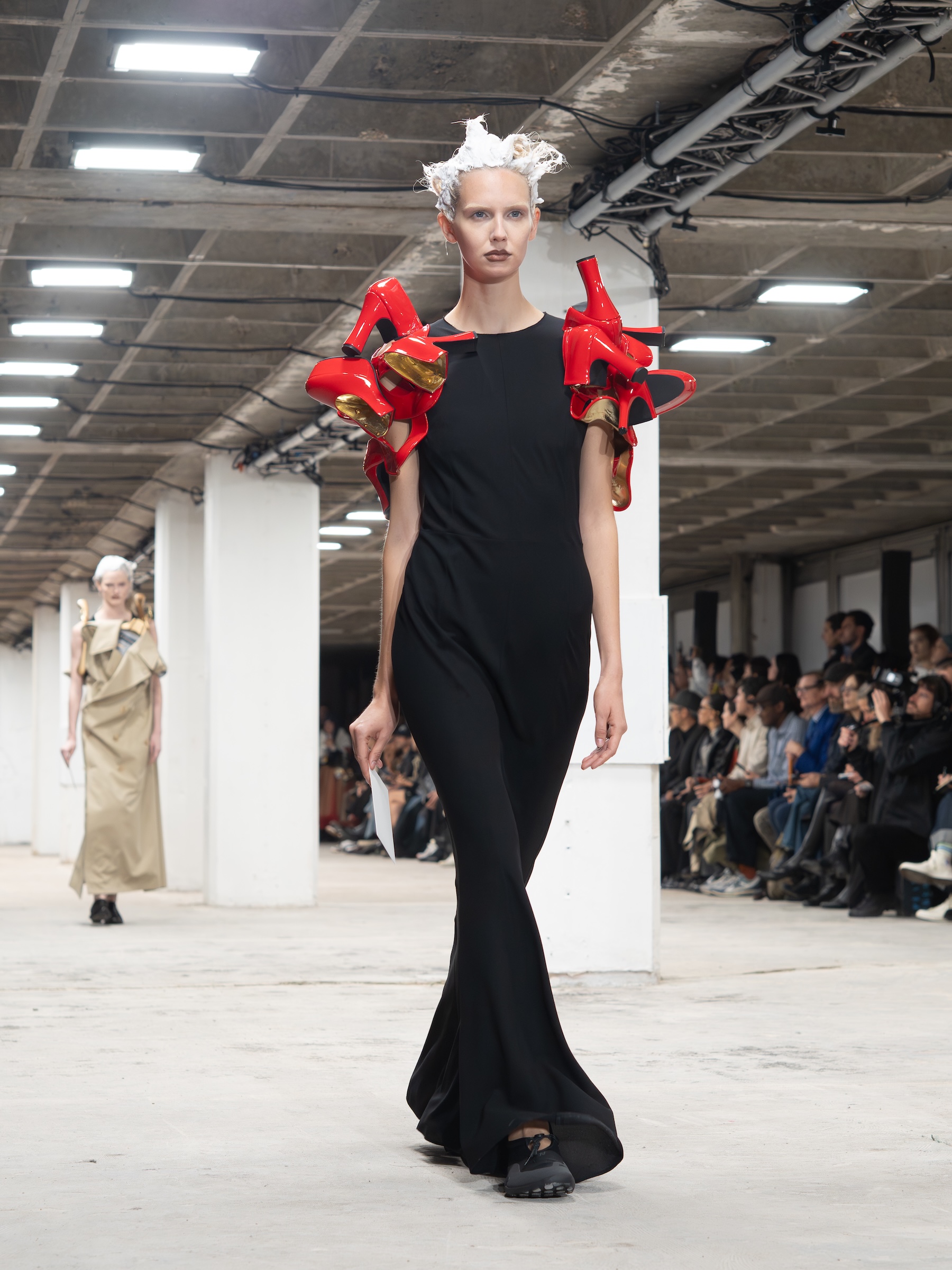
Set to a soundtrack configured by Brian Eno, Junya Watanabe’s S/S 2026 display felt more like a piece of theatre than a runway show. Models moved down the runway showing cards that explained their looks to the audience – designs that weren’t ordinary clothes, but that used ordinary clothes to shape their surreal forms. Piles of red high heels made the shoulders of a black cascading gown, layers of shirts on hangers formed a tent-like dress that looked like the model had tumbled through a dry cleaner, and a series of black looks that closed the show used wire and soft inky jersey to create villainous silhouettes that clung and jutted from the body in geometric forms. As ever, it was a display that pushed the boundaries of what clothing can be, offering a moment to revel in Watanabe’s unbridled imagination amid a packed day of shows in the French capital. ‘I took a different approach to making clothes than before,’ said the designer in a statement. ‘By treating ready-made items – objects originally intended for specific purposes – as materials, I recontextualised them and explored forms that could never be achieved through conventional methods.’ It was, as the designer intended, ‘extraordinary art born from the everyday.’ Orla Brennan

Maison Margiela

In 1989, Martin Margiela hosted his S/S 1999 show in a derelict playground on the outskirts of Paris. Local children designed the invitations in crayon and marker; when the show began, they ran around models' feet or crouched, watching on from the front row. Back then, it was a revolution: far away from Paris’ gilded salons and ballrooms, it stripped away the artifice of the 1980s and altered what a fashion show could be. ‘I always thought fashion was a bit superficial, but this show changed everything for me,’ said Raf Simons, one of the several notable people who gathered that evening.
For his first ready-to-wear collection for Maison Margiela – Martin Margiela’s eponymous house, which he exited in 2009 – the Belgian creative director Glenn Martens seemed to have the 1989 show on his mind. Presenting at the Centquatre-Paris cultural centre in the north of the city, where he showed his debut Artisanal show for the house earlier this year, Martens drafted an orchestra of local children from Romilly-sur-Seine to provide a live soundtrack. Clad in Margiela suits in sizes too big, the miniature musicians (who prompted smiles from even the stoniest of the fashion crowd) proceeded on a whistlestop tour through classical music’s radio greats – from Mozart’s to Symphonie N°40 to Strauss’ Le Beau Danube bleu. While it might be hard to replicate the energy of that initial show, the happily unpolished performance captured some of the house’s DIY spirit.
The collection itself was a selection of ‘concepts and proposals for real life’ which drew heavily on the Maison Margiela archive. Models’ lips were pulled open with contraptions that gave the illusion that their mouths had been stitched open at each corner – a nod to the house’s signature branding – wearing a collection of deconstructed glamour, which largely drew on, and warped, tropes of eveningwear. Tuxedo jackets were worn with torn shirts beneath; a column gown was remade in leather, and the scooped line of a waistcoat informed the cut of the collection’s outerwear. Elsewhere, dresses were pieced together from an energetic collage of fabrics, from sequins to jewellery-like appliqué, while the collection’s closing gown looked to have been wrapped in red plastic bags – a typically Margiela flourish. Jack Moss

Hermès
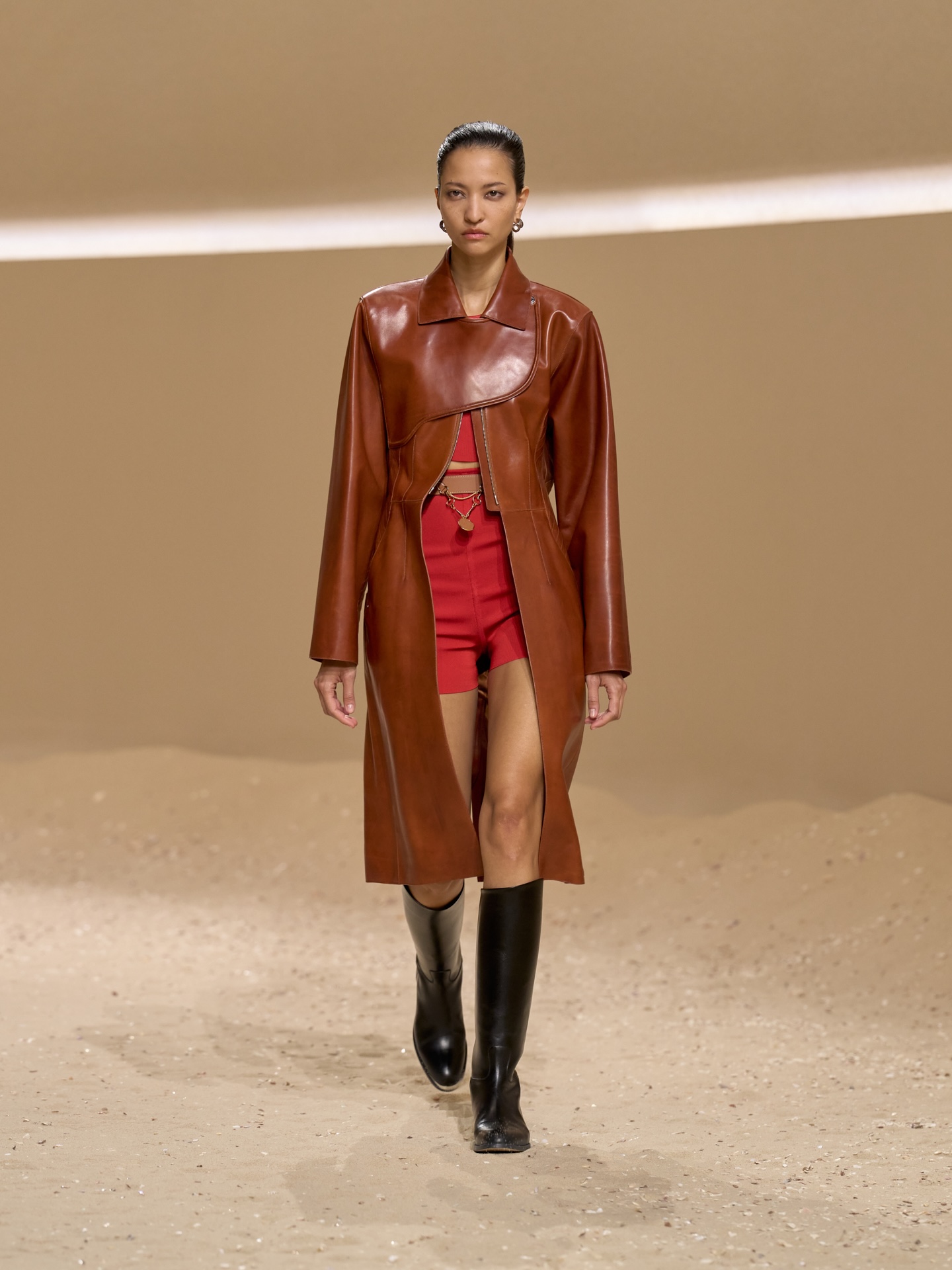
Horseriding is part of the Hermès DNA, something that Nadège Vanhée embraced for her S/S 2026 outing for the house. Staged on a sand-covered runway, its surface strewn with tiny shards of shells, she said that this season’s collection had begun with an antique Camargue saddle she had discovered in the house’s archive. The famous white horses of Camargue, located in southern France, are known for living wild in herds on the marshes of the region, an unusually harsh environment for the animal which has made them a local attraction. Vanhée sought to channel this wild spirit with a collection she titled ‘Free Rein’, using the saddle’s construction to inform the silhouettes of the collection, while bra tops took their cue from harnesses. There was a bohemian inflection to looks here – Vanhée called Camargue France’s ‘Wild West’ – which came in the Hermès silk carré, twisted around the neck or becoming a ‘makeshift top’, as well as buckles, criss-crossing fastenings and traditional ‘boutis’ needlework. As ever, accessories were particularly seductive, from the practical – a brilliant riding boot with chevron quilting – to the tiniest of crescent-shaped handbags, with just enough room for a lipstick and house keys. Jack Moss
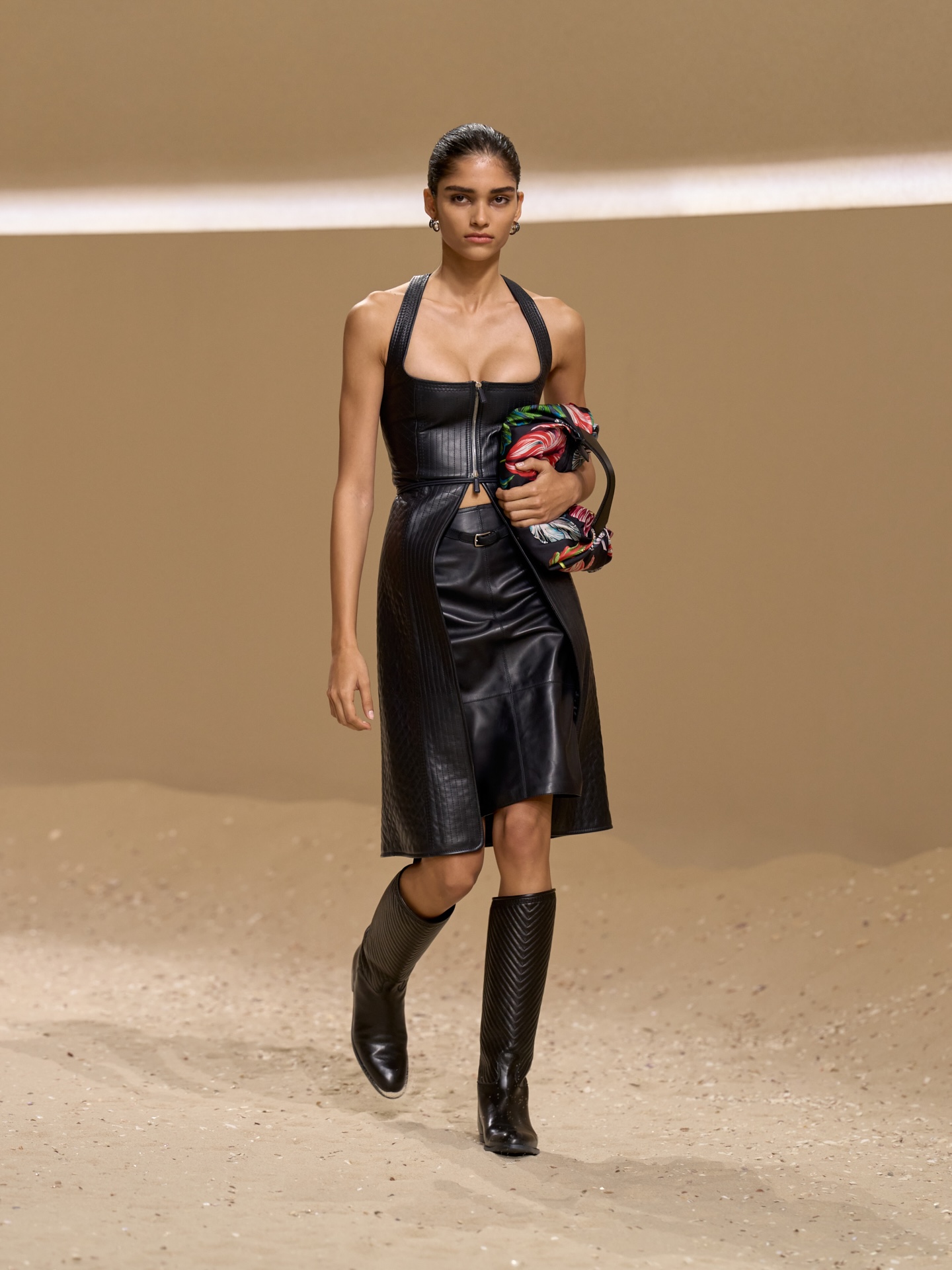
Alaïa
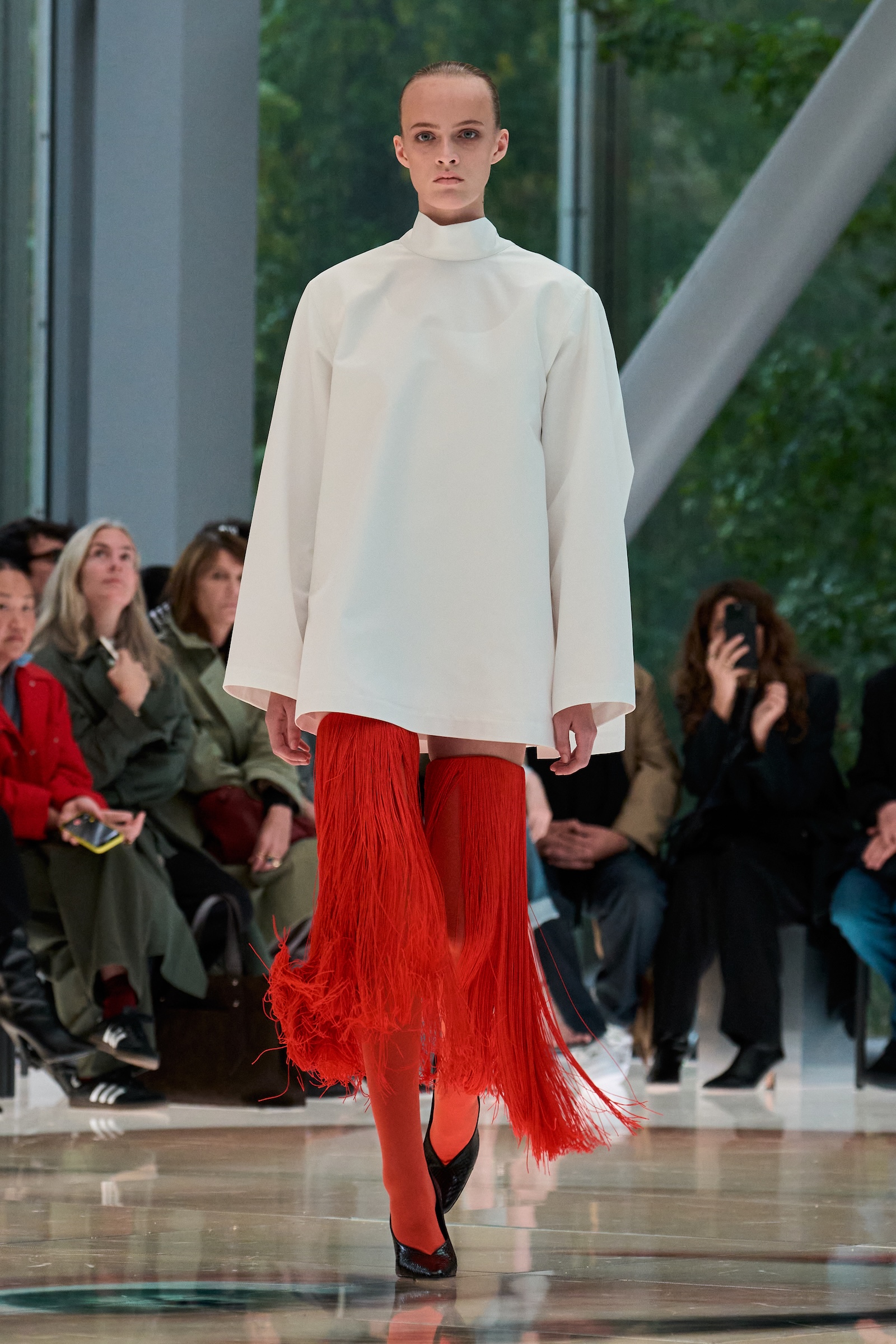
This season, Pieter Mulier was thinking about the rituals of uniform. Not the stiffness of army gear or the naivety of school dresses, but the idea of ‘clothes as machines for living’. As such, the collection he presented (shown as part of the official calendar, rather than during couture week) saw a sharpening of the wardrobe that has become a cult favourite – a uniform of its own sorts – to women around the world since he took over the house in 2021.
‘Reduced, sculptural’ and ‘precise’, it drew upon the essential glamour of the house’s namesake in a series of looks rendered with inventive attention to craft. Playing with extremes of luxury and simplicity, bold shades of humble cotton mixed with textures of python, leather, and silk, cut in womanly silhouettes that ergonomically wrapped around the body in shapes prioritising freedom of function. Amid these looks, which Mulier described as ‘uncompromising’, flourishes of decorative beauty appeared through intricate textures of macramé feathers, knitted pearls, and the movement of fringe. Accessories – a strong category for the house – were all sharp lines, from pointed chunky stilettos to skinny rectangular snakeskin-embossed handbags.
Shown at the Cartier Foundation on a digital screen floor that played footage of his model muses – reflected onto a mirrored ceiling – the clothes, as ever, displayed Mulier’s attention to what women want to wear, and his understanding of how his designs make them feel. As he wrote in the show’s notes, ‘there is a sense, always, of the woman’s body within – moving, alive’. Orla Brennan
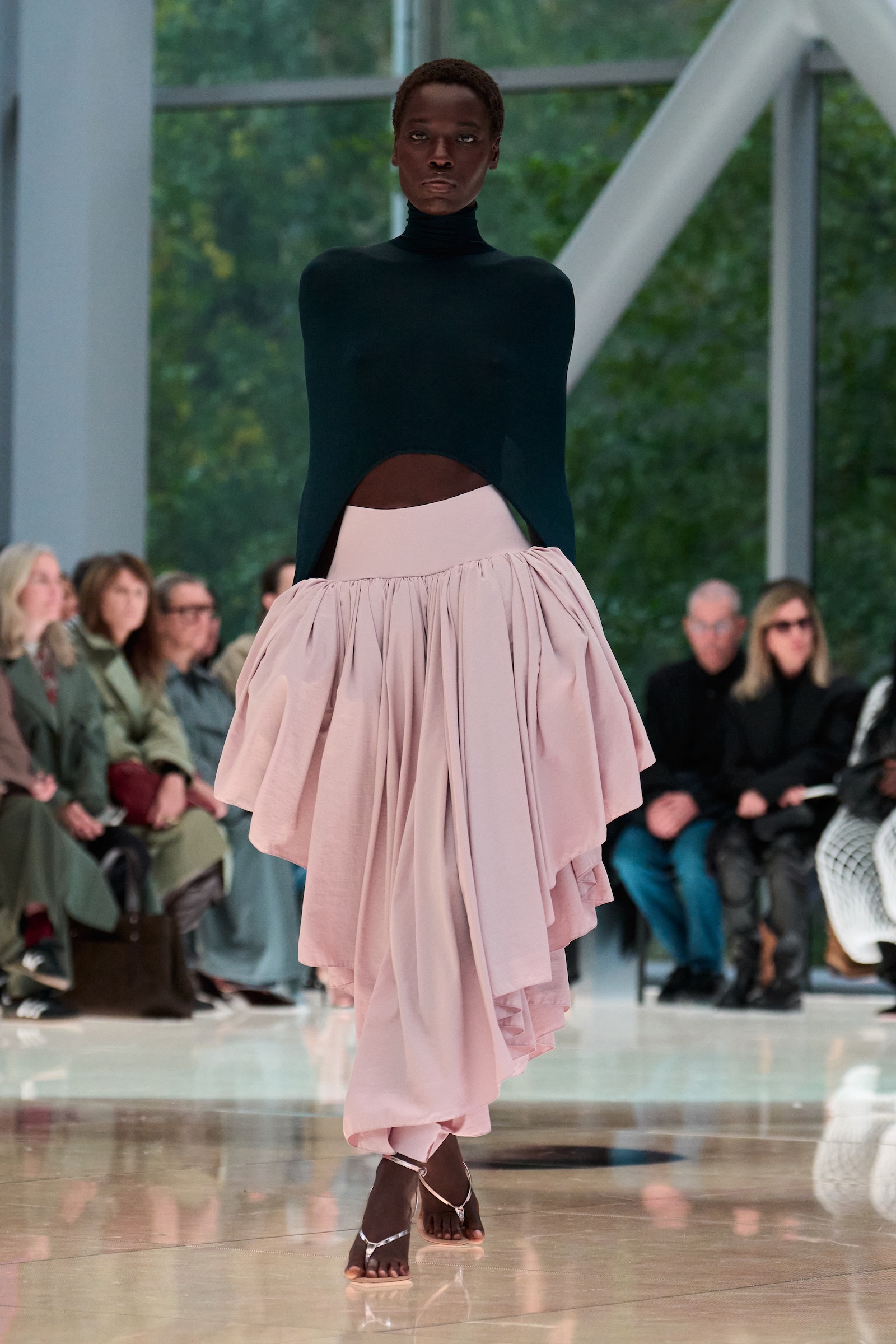
Givenchy
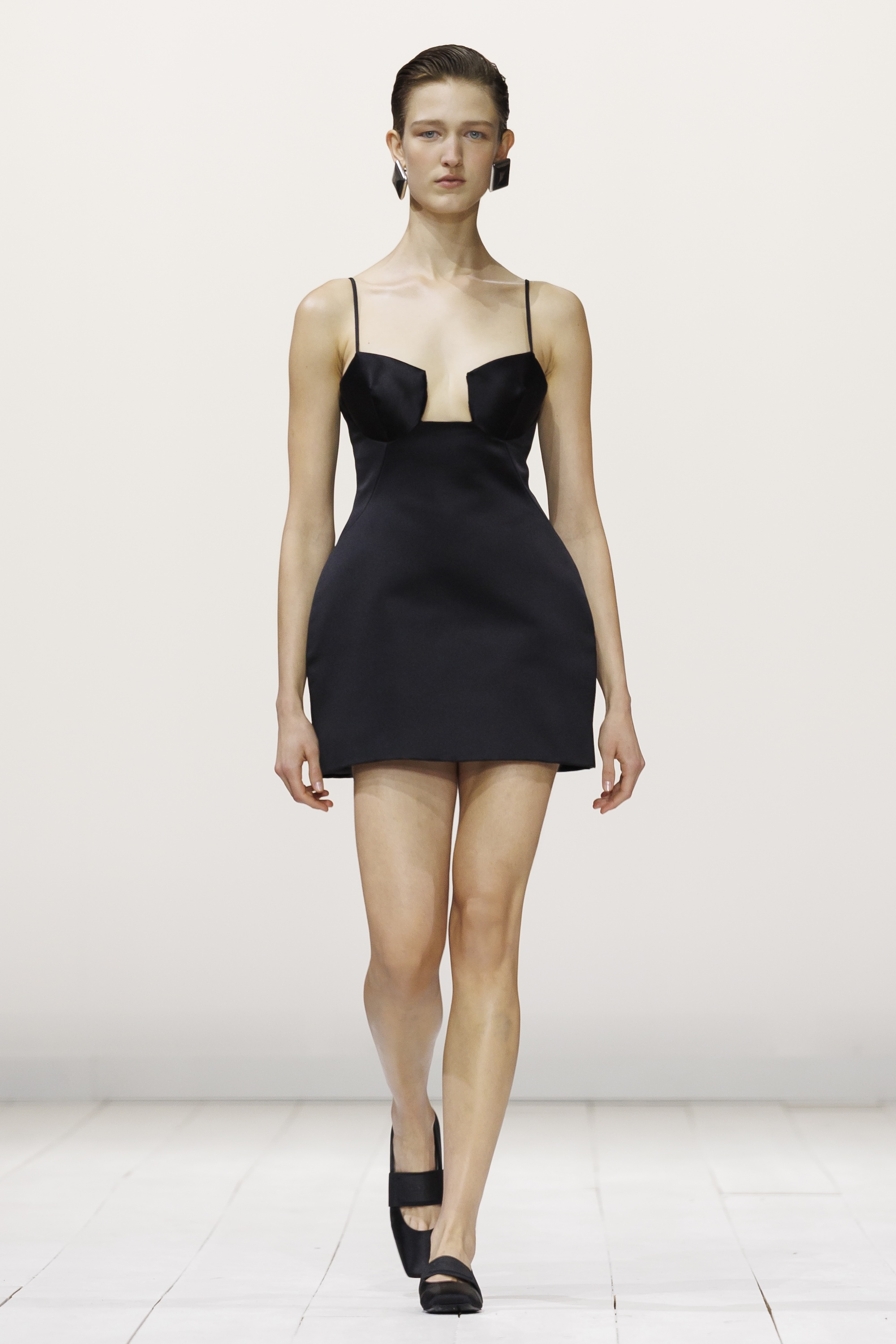
Backstage after her sophomore show for Givenchy, creative director Sarah Burton said that for women, power dressing doesn’t always have to mean wearing a suit (although, in this confident second outing, there was plenty of brilliant tailoring, one of the former McQueen designer’s strengths). Why, she questioned, does power in fashion always have to be figured through traditionally menswear garments? Instead, she looked to find strength in what a note on attendees’ seats called ‘feminine archetypes’ – there were bra tops and bodysuits emblazoned with pearls, frilled mini dresses which flared out like tutus, and bold flourishes of jewellery, like a twisted metal and crystal bodysuit worn by model Vittoria Cerretti in a rare runway outing (Naomi Campbell, a longtime Sarah Burton muse, also walked the show, as did Kaia Gerber).
‘It started by peeling back the structure of tailoring to reveal skin and a sense of lightness and ease – and then exploring the female vocabulary of dress and undress,’ she explained. As such, other garments had a feeling of intuition – the designer said she was thinking about the idea of a woman taking a piece of fabric and wrapping it around her body – like a ‘bedsheet gown’ in rose-stitch satin, held closed by the model across the chest, or nets of tulle which appeared thrown on. Free of the weight of her debut, this expressive collection showed a designer now in full flow – a feeling of liberation which was felt in the clothes. Jack Moss

Victoria Beckham

Looking back at pictures of herself as a teenager, this season Victoria Beckham was thinking about how, ‘as we transition from girls into women, we search for our voice not only verbally but visually, too’. Choosing to show in the 17th-century Val-de-Grâce church in the center of Paris yesterday evening, her S/S 2026 collection was a love letter to the ‘coming-of-age wardrobe’ – the naïve fantasies, compositions, and accidents that shape how we learn to express ourselves through clothes.
The rewatching cult rite-of-passage films Romeo and Juliet and The Virgin Suicides led to a storyline of feathers that opened the show, which plumed from inky black scoop-necked minidresses and crisp white tank tops worn with tuxedo suit trousers. These looks moved to sprayed jersey top and dresses, which nodded to the girly glamour of Beckham’s own youth, while pastel negligees, camisoles and slip skirts in silky pinks and organza florals unmistakably evoked the wardrobes of Sofia Coppola’s Lisbon sisters. The youthful spontaneity of these looks were grounded in Beckham’s sharp, contemporary silhouettes – especially in her tailoring, which this season came in shades of Herringbone cotton that nodded to inherited pieces and tailored trousers suspended from georgette basques, winking at the teenage accident of tucking your top into tights.
Adolescence may have been the theme but Beckham’s wardrobe was still grown up, restrained and desirable in the way her clothes always are. The collection, said the show’s notes, was designed from the perspective of a mother to a teenage daughter, a celebration of ‘the pure joy of dressing inherent to the exceptional stage of girlhood.’ Orla Brennan
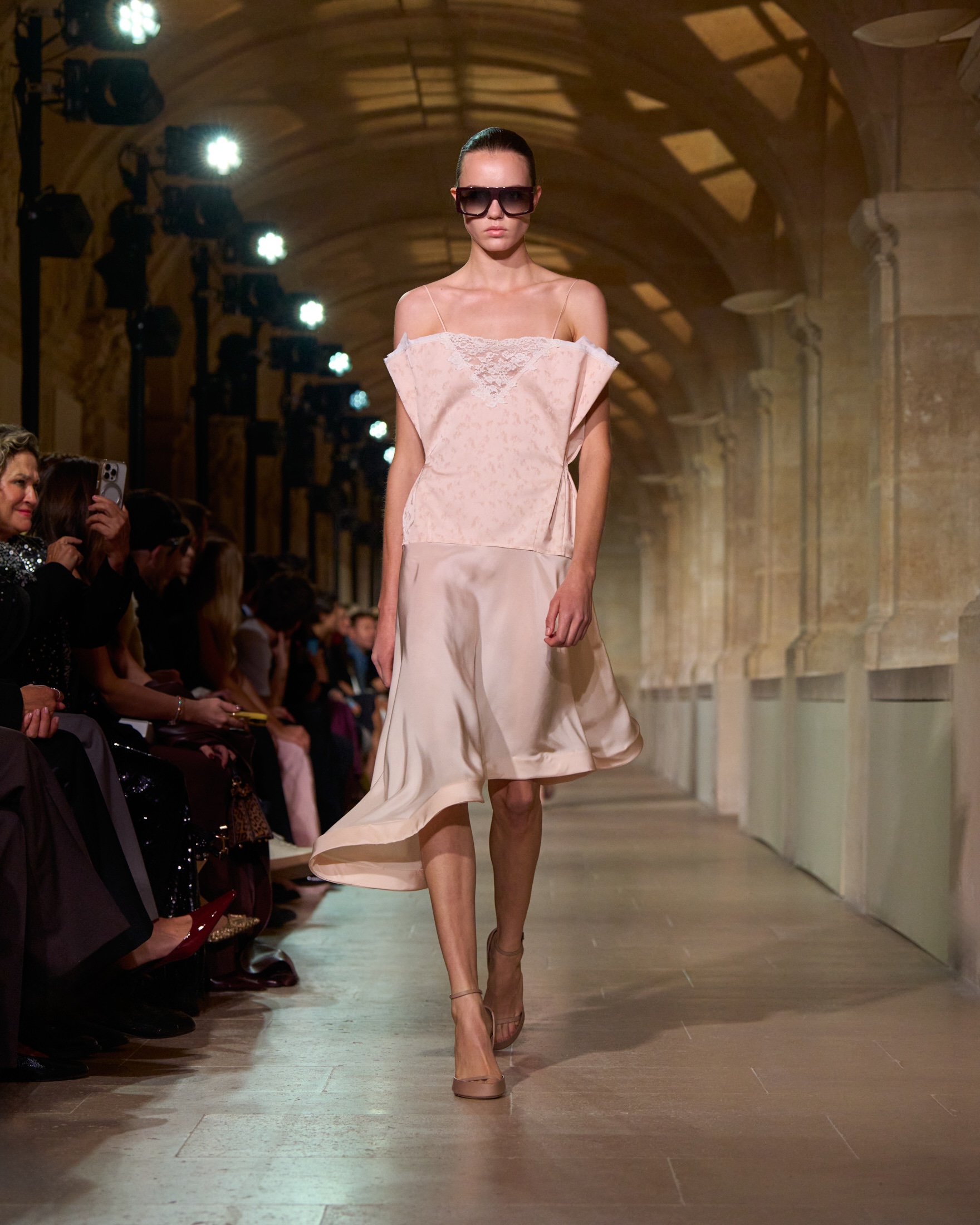
Issey Miyake
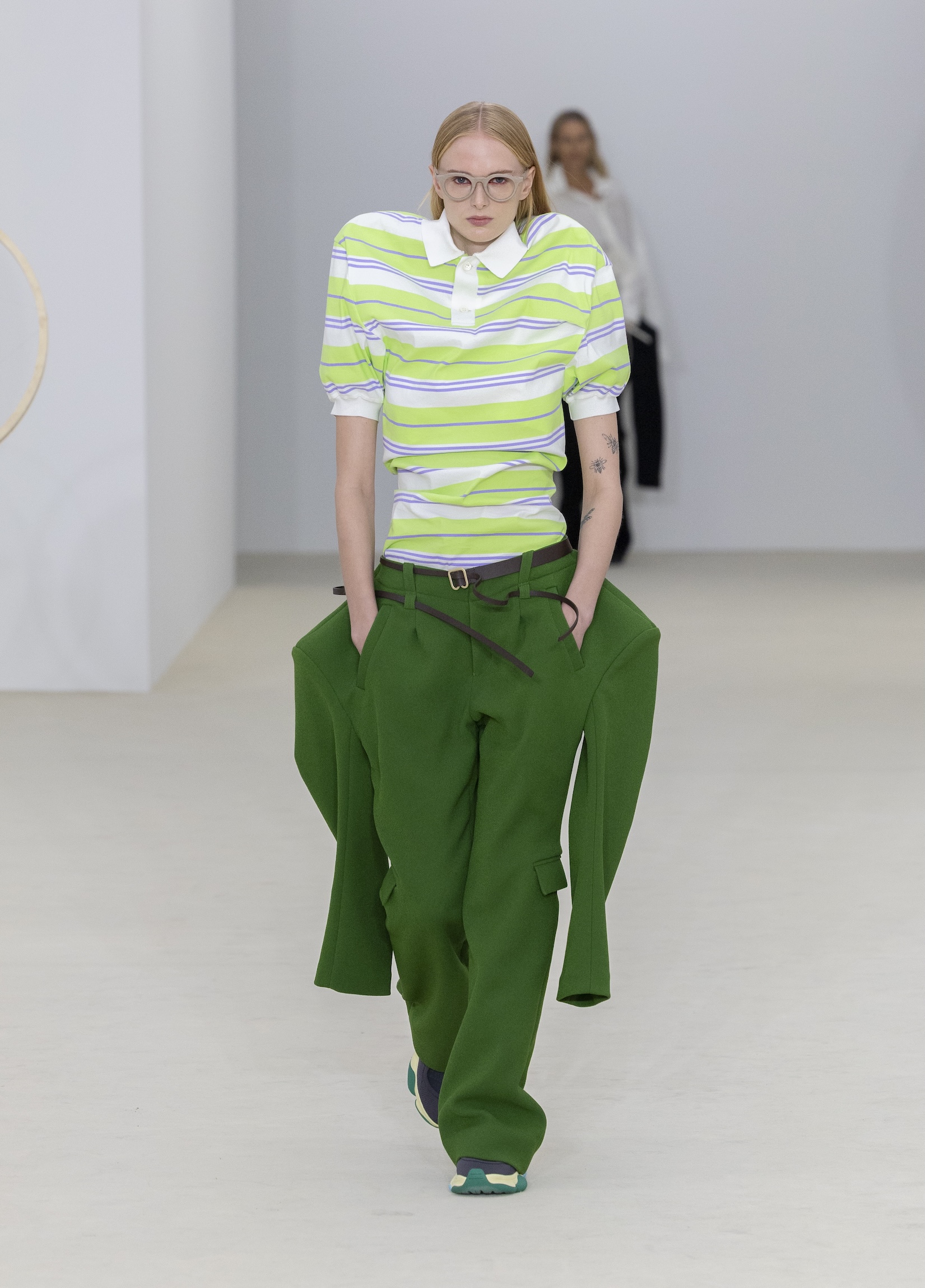
Recent seasons have seen Satoshi Kondo push the boundaries of what clothing can be. His experiments continued for S/S 2026, asking the question: ‘What if garments are conscious?’. As such, polo shirts and hoodies crept up the neck in strange, sculptural forms, like the model was in a perpetual shrug, while trousers and tops were inset with bulging pockets (through the semi-sheer fabric, you could see objects like pens and stacks of plastic mugs lurking inside). Other garments seemed to grow with extra sleeves, or were printed with slogans like ‘I am autonomous’ and ‘I am animated’, while bold expressions of print and texture – from tropical motifs to dresses adorned with leaf-like fronds of fabric – added a feeling of collage. It made for an enlivening, mood-elevating collection and continued a brilliant run from Kondo, who is readily embracing the house founder’s spirit of innovation and play. But more cleverly, it was also desirable: in amongst the more expressive pieces were his riffs on the everyday, from slouchy twisted shirting to layered dresses with stretch – you could see anyone in the Pompidou Centre showspace being seduced by them. Jack Moss
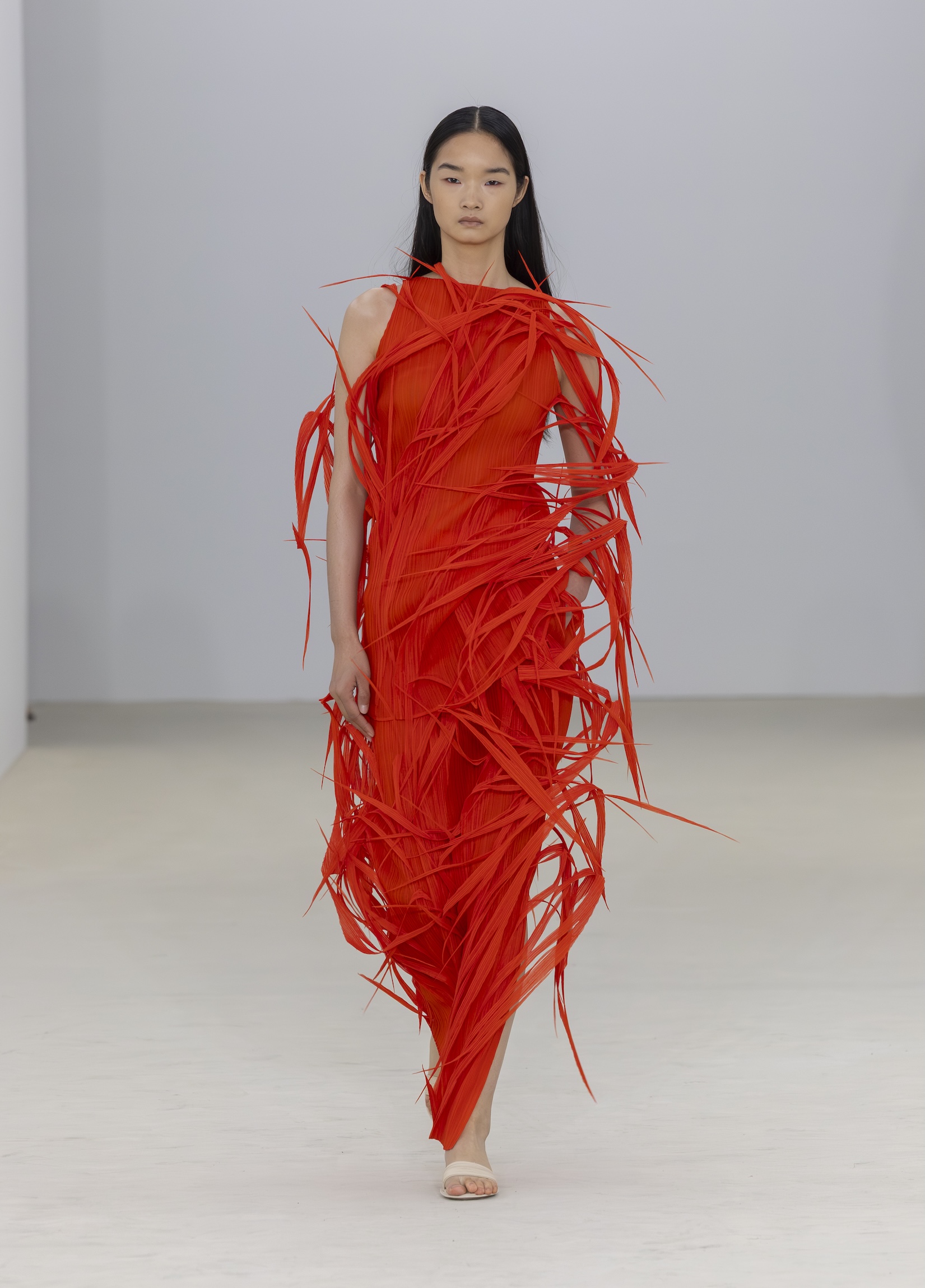
Loewe
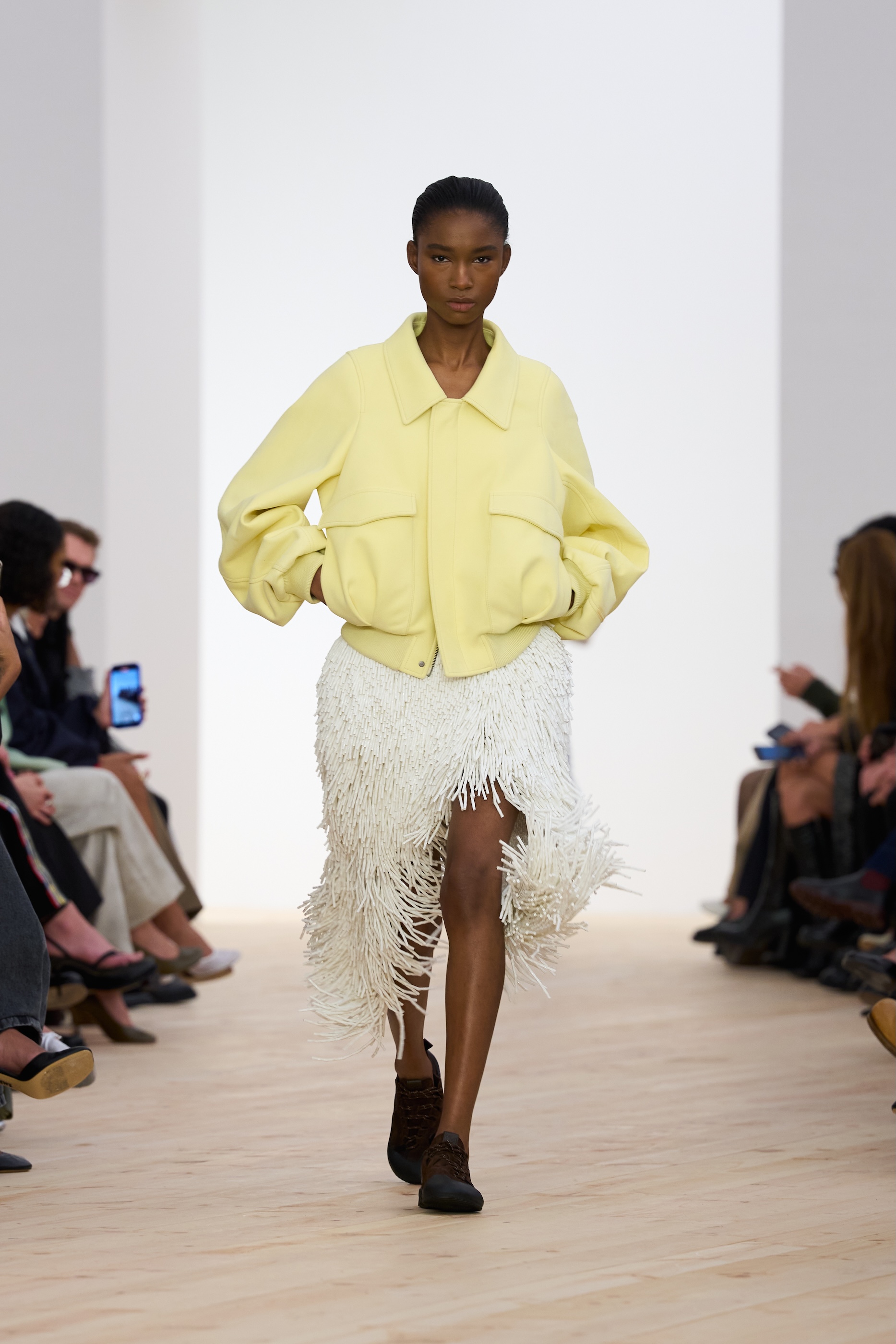
The entrance to Jack McCollough and Lazaro Hernandez’s debut show for Loewe, held in a specially constructed box in the grounds of Paris’ Parc Cité Internationale Universitaire on Friday morning, was hung with a 1989 work by Ellsworth Kelly. That work, Yellow Panel with Red Curve, and indeed the American artist’s wider oeuvre, provided what the pair called a ‘visual language’ with which to approach their tenure at the Spanish house (they take over from Jonathan Anderson, who is now at Loewe, having left Proenza Schouler, their own New York-based label founded in 2002).
‘Reduced, sometimes sculptural forms and elemental colour,’ is how they described both Kelly’s work and their own S/S 2026 collection, which was defined by graphic silhouettes and a bold use of colour – like a series of brightly hued hourglass mini dresses in moulded leather, Loewe’s signature material. Elsewhere, wardrobe staples were approached with what they called a ‘sensuality and fervour’ – from slouchy polos and windbreakers, to a cleverly textured fabric which gave the illusion of frayed denim.
‘[In Yellow Panel with Red Curve] lies a vibrancy and tactility that feels fundamental to the house,’ said the pair. ‘A chromatic intensity and sensuality that feels inherent to its Spanish roots, and ultimately an optimism and spirit that we deeply identify with. Hung within the show space, it operates as a starting point, a prelude of sorts, to what lies ahead.’ Jack Moss
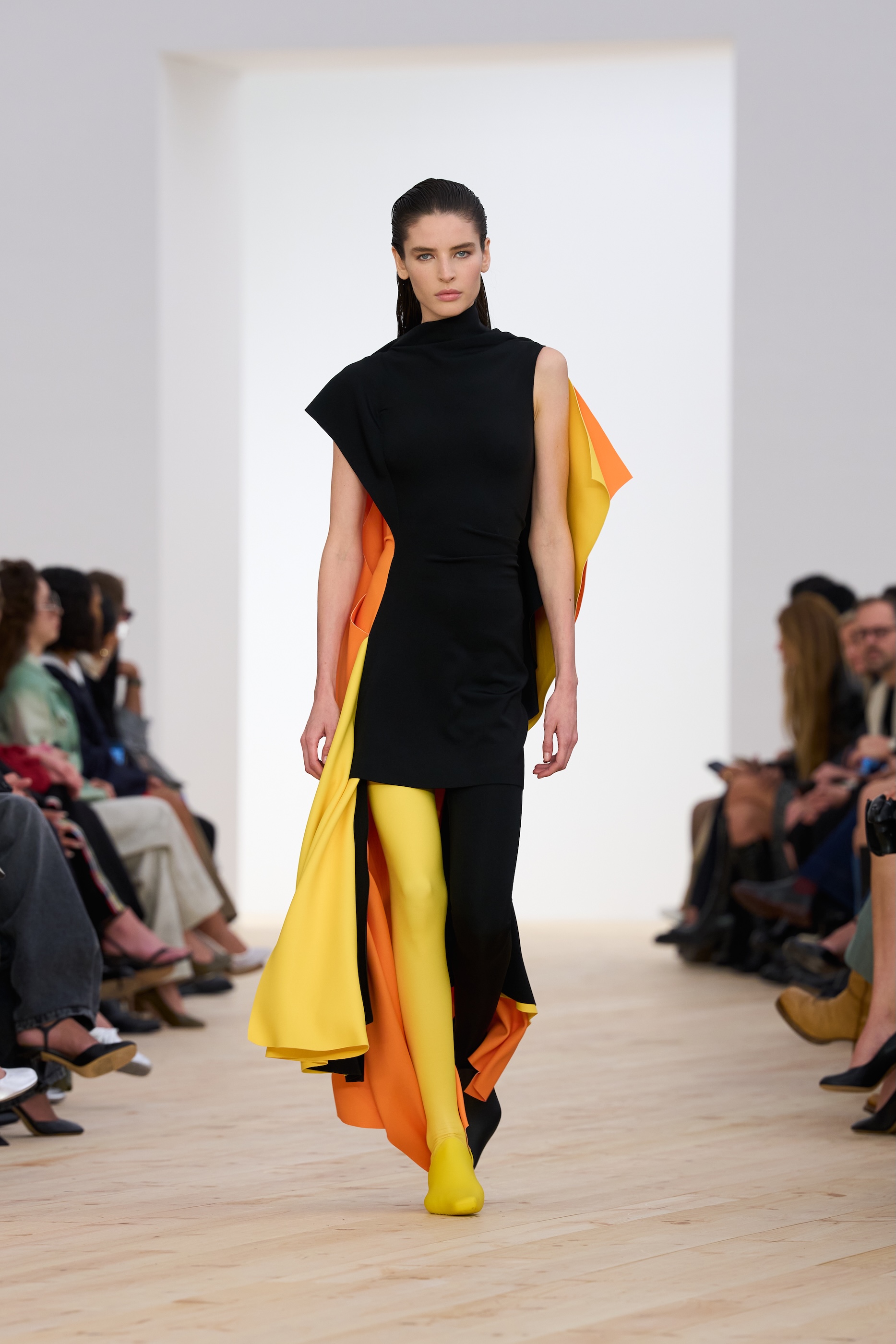
Schiaparelli
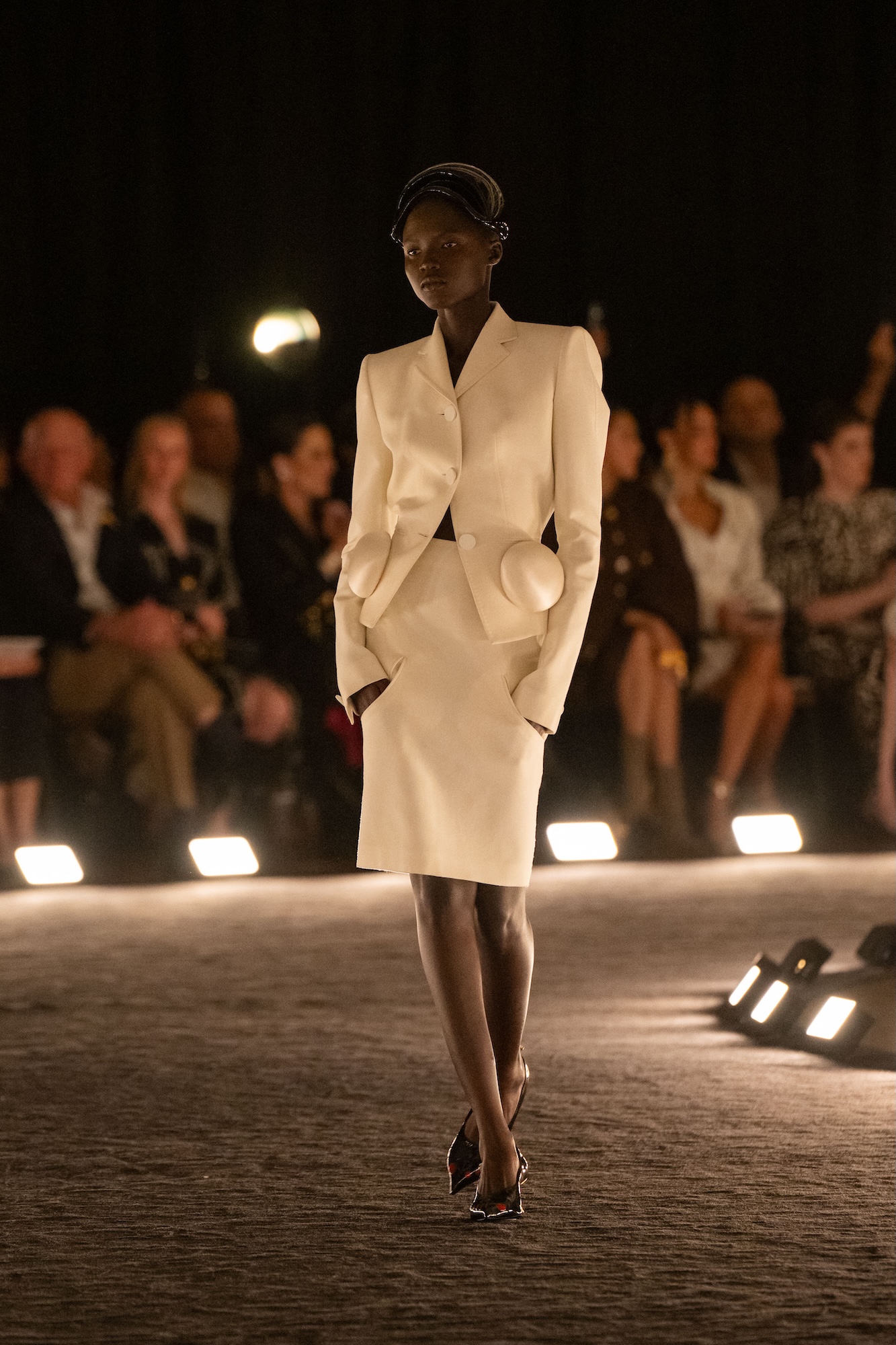
When Daniel Roseberry presented his first ready-to-wear collection for Schiaparelli two years ago, the designer wrote in his S/S 2026 show notes, he would often hear, ‘This is ready-to-wear? I thought I was looking at couture.’ Once unsure what to make of such critiques, he now sees things differently. ‘What felt like a liability now feels like a strength. Why can’t fashion – even everyday fashion – be art?’ As such, his latest collection, shown last night at the Pompidou Centre, possessed all the unrestrained glamour and spectacle one might expect during couture week.
The designer looked to the house’s namesake Elsa for inspiration, exploring her love of ‘unexpected frictions’ in exaggerated-shouldered jackets cut with ‘tailleur rigour’, and texturally expressive gowns that captured a feeling of ‘hard chic’ – gauzy black chiffon dotted with bird-like polka dot feathers, shimmering gold chainmail torn to reveal skin beneath, and satin columns of deep crimson. Elsewhere, Roseberry drew from Elsa’s personal wardrobe, presenting a series of trompe l’oeil knits in loud triple-tone jacquards (‘shocking then, shocking now’ he joked), while the house’s flair for the surreal came in accessories made to ‘surprise and delight’, from gold metallic sandals to handbags inspired by Dalí’s melting clocks.
Both a celebration of Schiaparelli’s codes and the emotive experience of a runway show, Roseberry wanted the display to offer a moment of light amid the ‘cultural black hole’ of our times. ‘I read that while attendance to movies has plummeted in recent years, museum attendance has skyrocketed,’ he said. ‘It made perfect sense to me. Our phones are a slophouse of cheap thrills, with lifespans no longer than a few hours. That’s why I leapt at the opportunity to show at Centre Pompidou. Not because I wanted this collection to explicitly centre on the relationship between fashion and art, but because I felt, and feel, that going to a Schiaparelli show should feel like going to a museum: an experience equally inspirational, aspirational, and reassuring.’ Orla Brennan
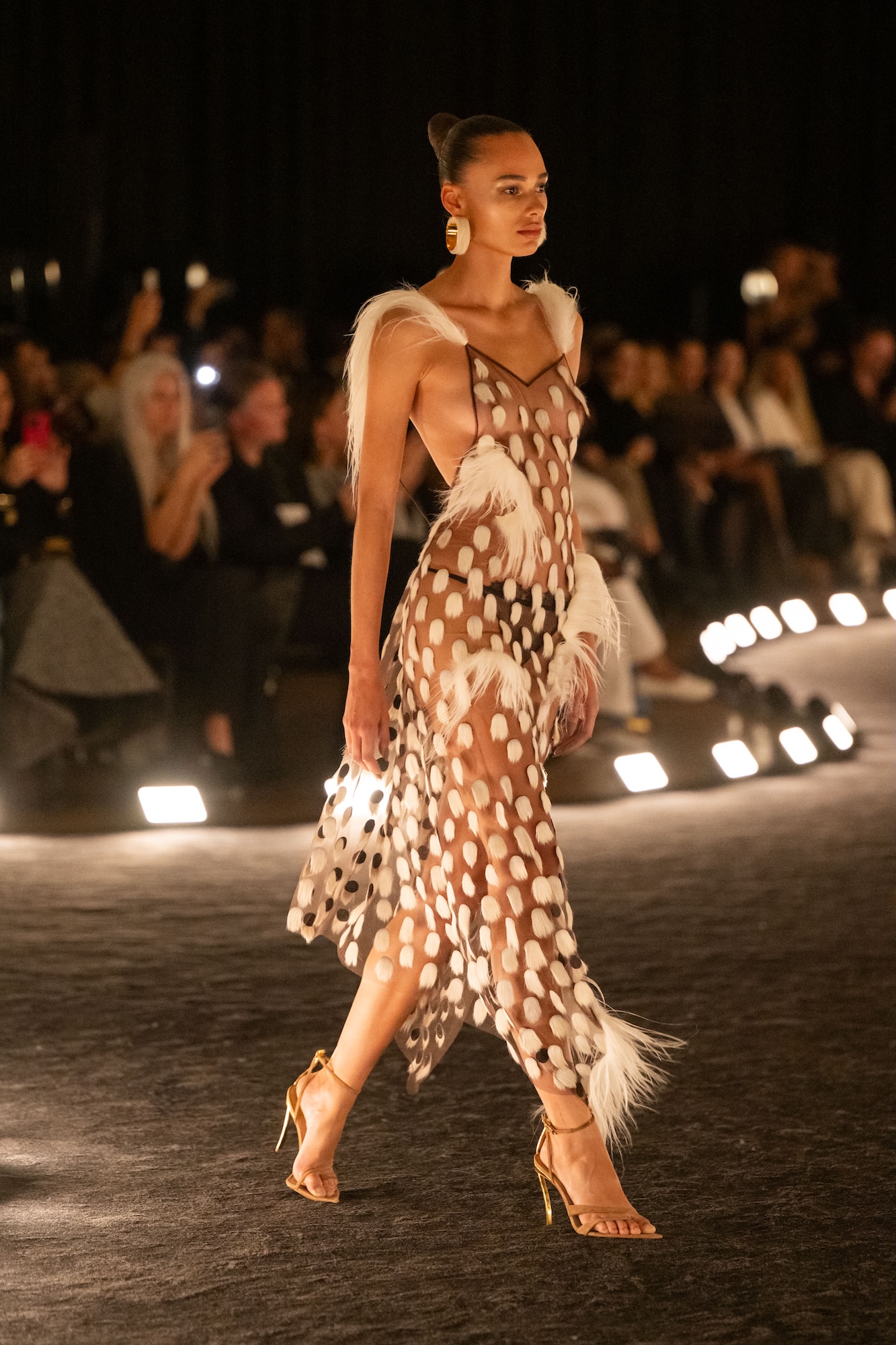
Rick Owens

Just across the road from Rick Owens’ Palais de Tokyo showspace is the Palais Galliera, where the American designer’s career-spanning retrospective ‘Temple of Love’ continues until January. At his menswear show in June, which coincided with the opening, Owens said that the process of putting together the exhibition had inspired the collection: ‘a retrospective summons up thoughts of tenacity, peaking and decline, and I relished leaning into that,’ he said. As such, the theatrical presentation saw a troupe of models descending from an enormous scaffold structure erected in the Palais de Tokyo’s front pool and into the water below, before hauling themselves back up again – platform boots on and dripping wet – and triumphantly exiting the catwalk. Back then, I said that the display was ‘a symbolic gesture of Owens’ tenacity and staying power’, a testament to continuing, unwaveringly, on.
The exhibition’s presence continued to be felt at this season’s womenswear show, which saw models descend a vast staircase and into the water below – a similarly cinematic scene (both collections were titled ‘Temple’). ‘[The] exhibition tracks the pursuit of glamour and sleaze that I was looking for on Hollywood Boulevard, and eventually, improbably, ended up displaying in a Paris museum,’ he said in an email distributed to guests prior to the show. ‘I have always thought of what I do as a fascination with the denseness of European aesthetic sophistication seen through a filter of American bluntness.’ This idea of ‘glamour and bluntness’ ran through the collection: sinuous semi-sheer dresses, with criss-crossing exposed seams, were his subversion of the classic column gown, while sculptural twists of fabric protruded from the body, at once intuitive and elegant. Widened shoulders, elongated bomber jackets and spiky leather tassels, meanwhile, suggested a mood of protection. ‘Steely tenacity,’ Owens concluded. ‘Rough clothes for tough times.’ Jack Moss
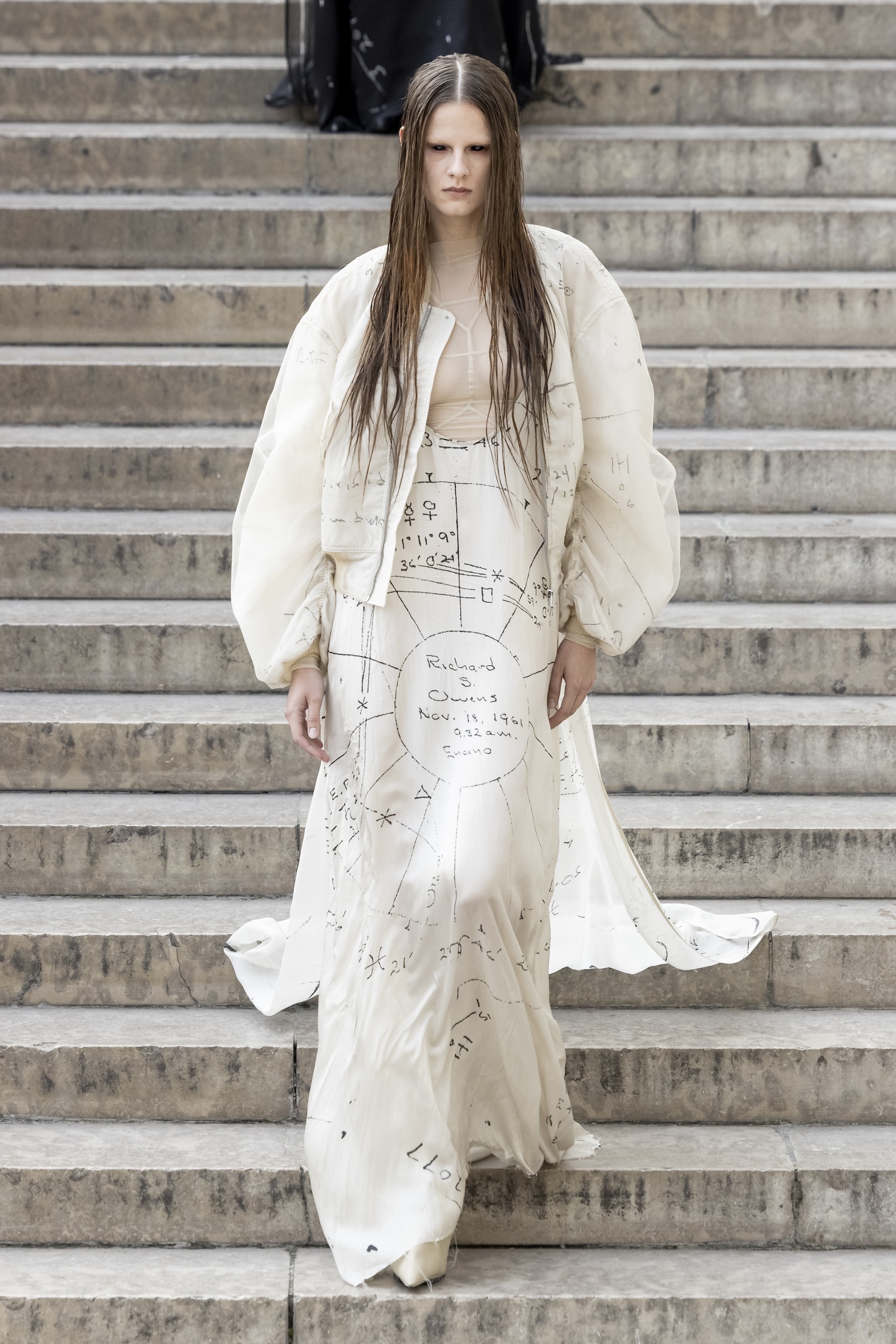
Carven

How do the women of Paris dress when the weather turns warm? It’s a question British-born designer Mark Thomas asked himself in preparation for his debut collection as Carven’s new creative director, shown yesterday afternoon at the 85-year-old maison’s stately headquarters on the Champs-Élysées. Unlike many of this season’s appointments, Thomas is an in-house hire, designing under Louise Trotter before her move to Bottega Veneta earlier this year. Building on the wardrobe they established together – but dialling up the sensuality – Thomas’s women appeared in looks that held a distinctly Parisian air, elegant and effortlessly undone. Colours were ‘confident and calm’, taking inspiration from Madame Carven’s favourite flower – the orchid – offset by smoky shades of black and grey. A play between looseness and the body came in subtly layered looks that drew upon ideas of the bedroom – lacey nightgown dresses worn over basics, billowing strapless dresses that reminded of French bedlinens, and lightweight sporty jackets paired with delicate organza skirts that revealed lingerie beneath. Bringing the house’s history into the present, Thomas put his own spin on ‘esperanto’ – the graceful waistline contour detail that has been a house signature since the 50s – employing it in sportswear pieces designed to keep up ‘with the pace of city life’. Balancing deliberate lines with an insouciant kind of ease, it was a clean, clear and sensuous debut – a love letter to the women of the city, and the quiet power of the small but mighty maison he now leads. Orla Brennan
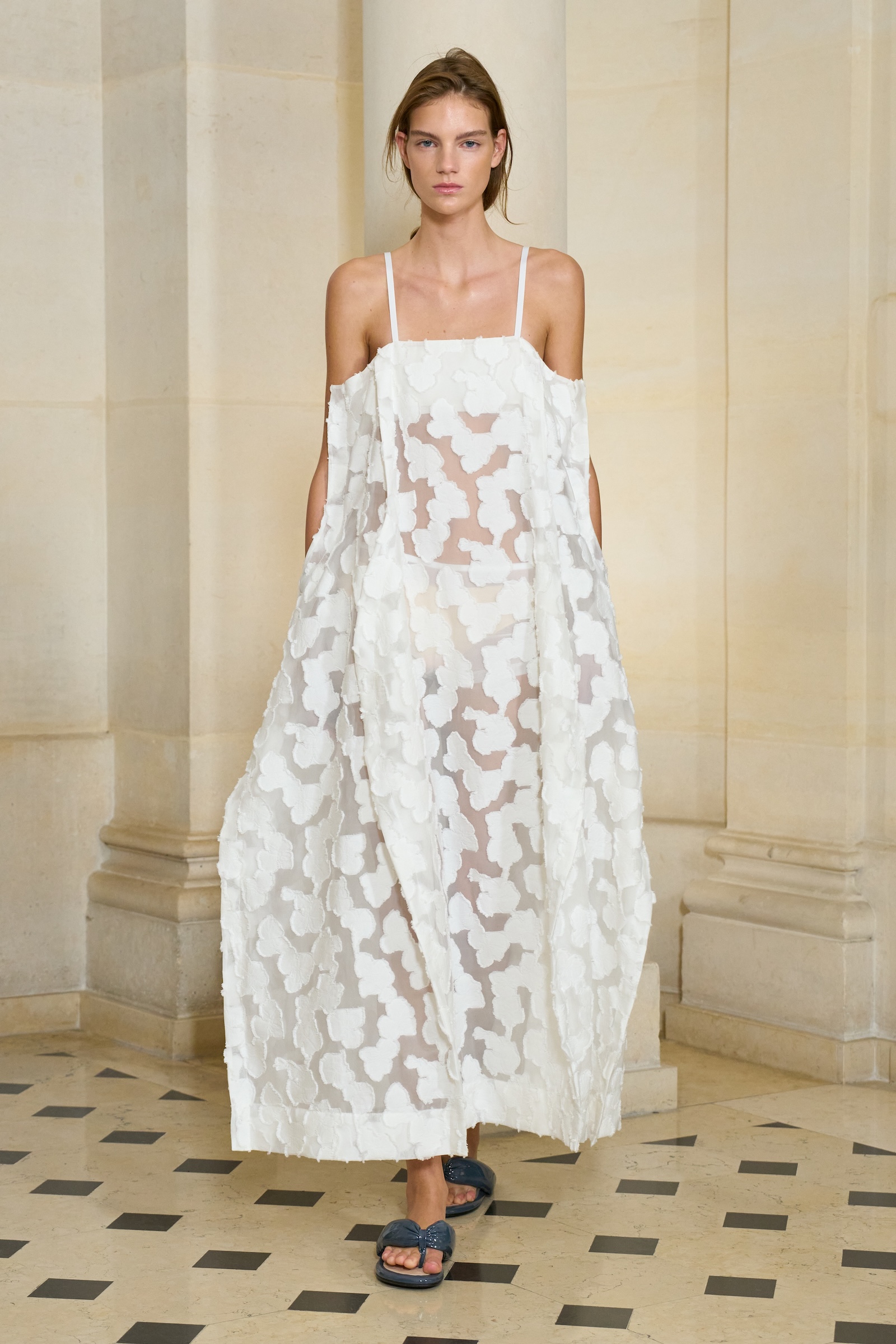
Rabanne
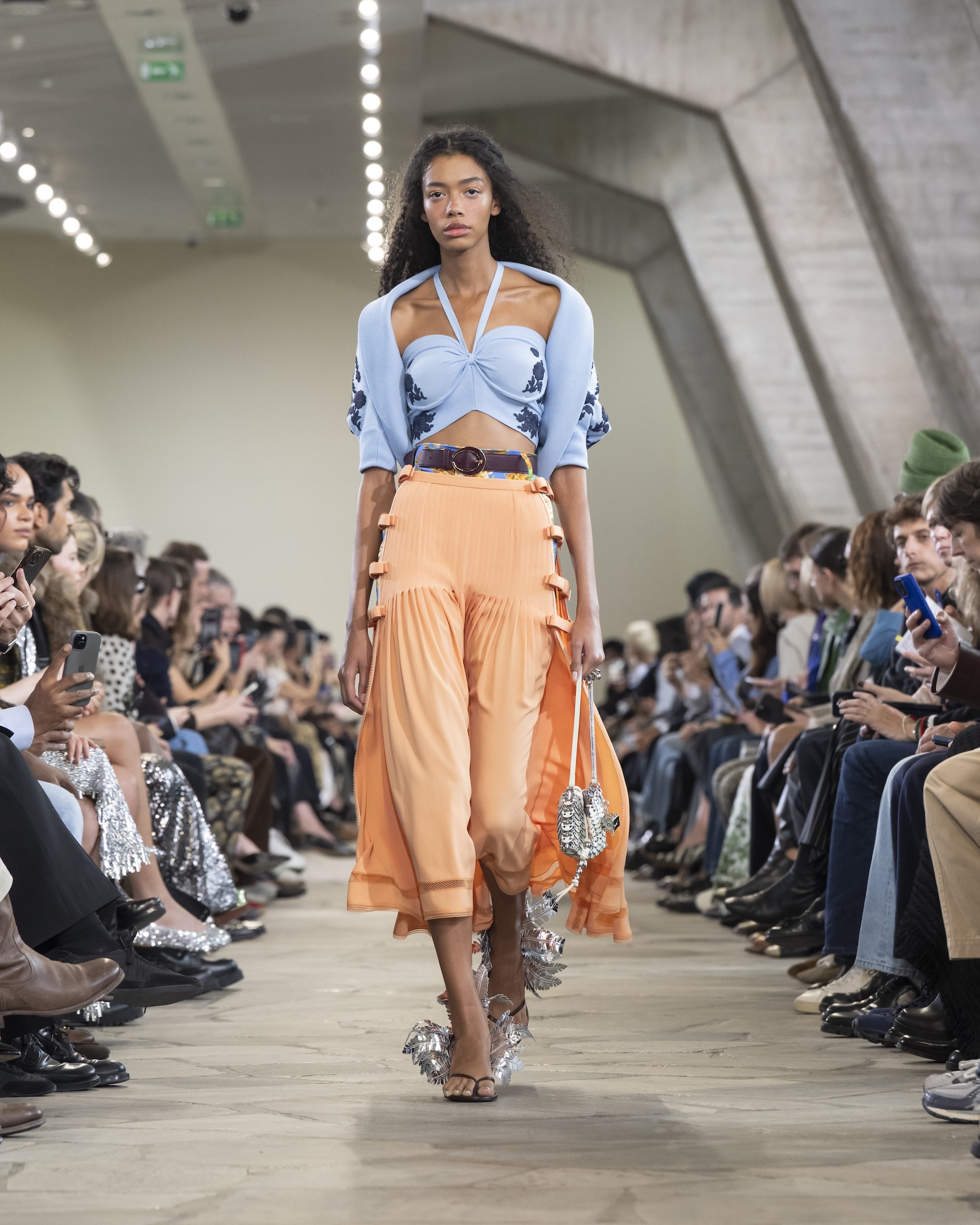
A bold use of colour and print has run throughout the S/S 2026 season so far, as have themes of freedom and escape. Yesterday afternoon, Rabanne designer Julien Dossena took it to another level. His kaleidoscopic summer outing was a heady melange of vivid sorbetto hues, graphic stripes, tropical motifs, floral appliqué and futuristic ‘car crash’ metallic ruffles – a nod to the Parisian house’s foundational material (founder Paco Rabanne loved the space-age sheen of the material; ‘he’s not a couturier, he’s a metal worker,’ Gabrielle ‘Coco’ Chanel once cattily quipped).
Dossena said this season began with a consideration of the construction and shape of 1950s swimwear, a garment he said epitomised the era’s ‘sheen of optimism and a foreshadowing of disruptive change’ – one which the French designer linked with our current moment of turbulence and change. It lent the collection a mood of surreal escapism: the construction of those bathing suits inspired the cut of bra-tops and bustiers, layered under cut-out, chest-exposing jackets or adorned with spikes of fabric around their edges, while neoprene trousers – evocative of wetsuits – were rolled down as if after a day on the surf.
Accessories were equally expressive: a brilliant high-heeled sandal, teased by Dossena on Instagram prior to the show, sprouted with fronds of fern-like metal leaves, while enormous sunglasses evoked vintage goggles. Dossena said the collection was an expression of his ‘yearning for a hopeful horizon [with] a touch of surrealist shine’ amid the ‘tranquil and turbulent episodes of life’. In its no-holds-barred vision, it was impossible not to be seduced – or, perhaps more shocking still, feel optimistic. Jack Moss
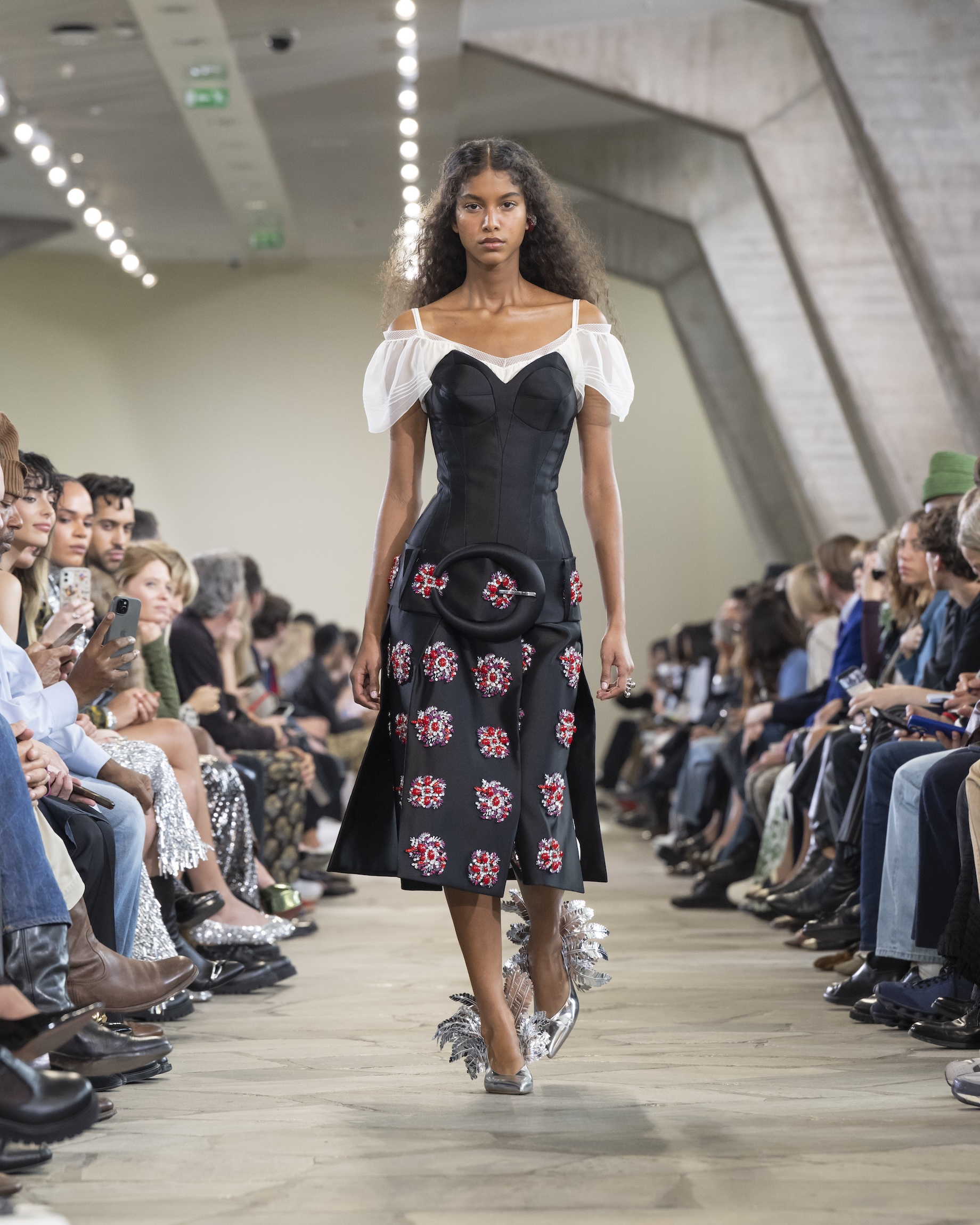
Acne Studios
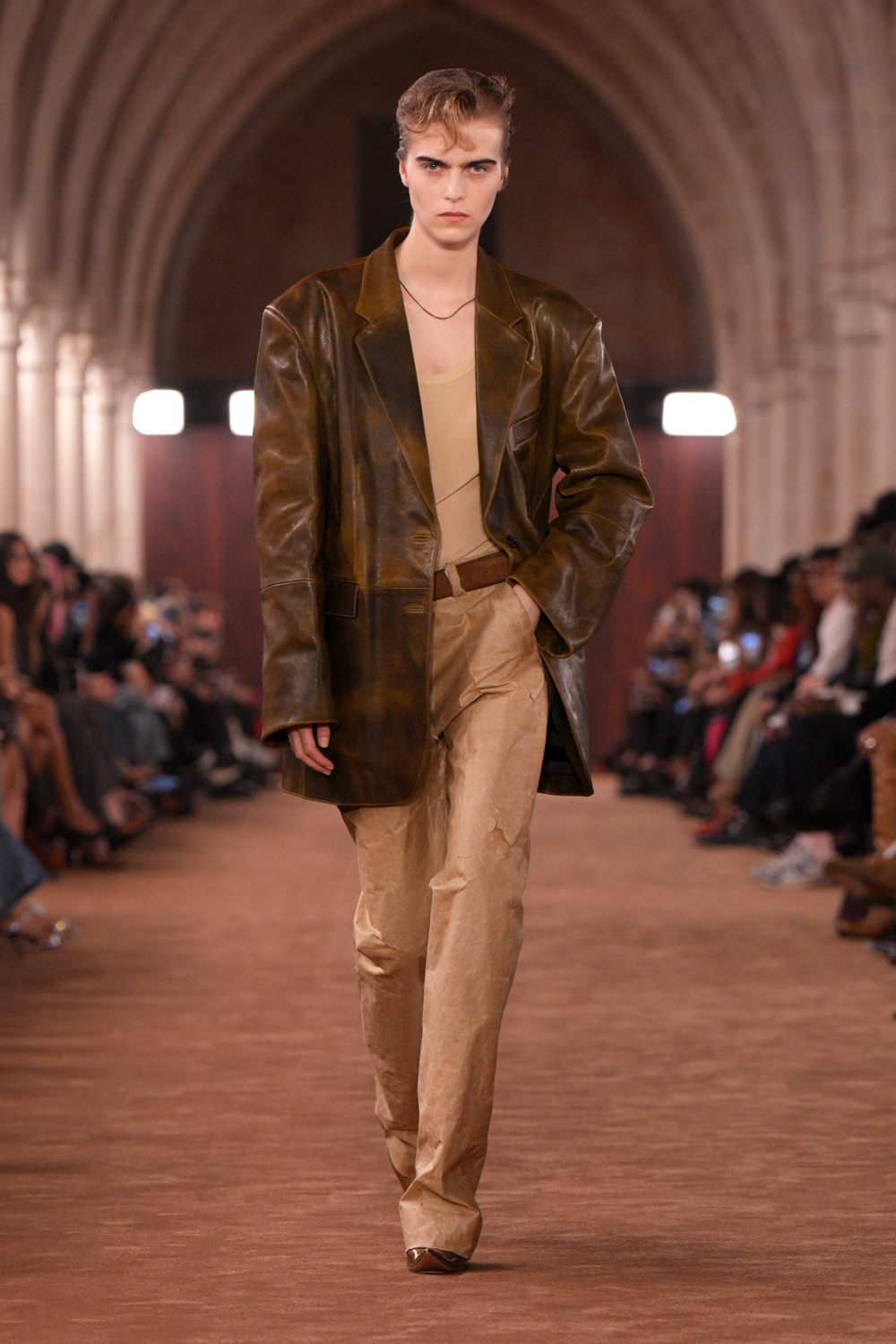
Transforming the inside of the 13th-century Gothic church Collège des Bernardins in Paris into a moody ‘cigar salon’, Acne Studios’ S/S 2026 collection was an exercise in balancing contrasts. Unveiled with a cast of protagonists chosen for their ‘strong, androgyne energy’, models wore looks that not only wilfully ignored the boundaries of mens- and womenswear, but that slashed and stitched evening glamour with the everyday. Lumberjack flannel was tucked into girlish lace slip skirts, cotton poplin was washed into soft dishevelment, and couturier’s lace was sliced and patchworked into contemporary body-hugging dresses. Elsewhere, the house’s denim and knitwear staples were reworked with tactile materiality and cut, so that straight-leg 1996 jeans were distressed and coated with latex, and chunky jumpers came with windowpane holes that exposed shirting beneath.
Together, it proposed a wardrobe where toughness and tenderness can co-exist. The collection’s story was reflected in the works of Brooklyn-based collage artist Pacifico Silano, whose gestural scenes made from vintage gay erotica were suspended throughout the wood-clad space. The show was soundtracked by Swedish pop icon Robyn, who stated she felt aligned with Acne Studios’ vision this season – the way it ‘questions and celebrates the typical idea of female identity’. Honouring the community of artists that has long surrounded the brand since it was co-founded by Jonny Johansson in 1996, the show also marked the beginning of Acne Studios’ anniversary celebrations. ‘Strong, playful, poised and most of all free, these women have been here all along,’ said the brand. ‘Only now, as Acne Studios advances towards its 30th year, they are leading us into the next chapters.’ Orla Brennan
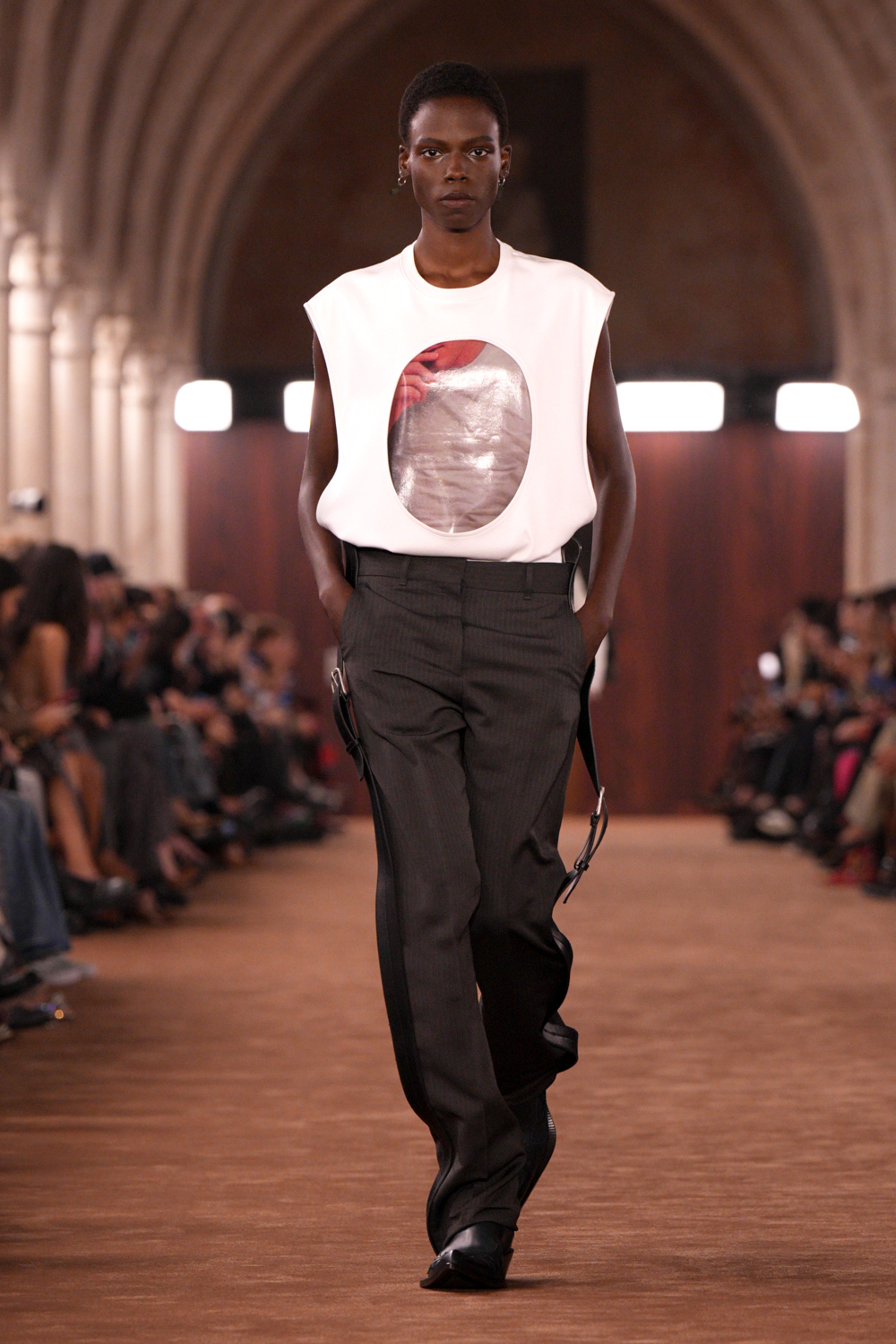
Dior
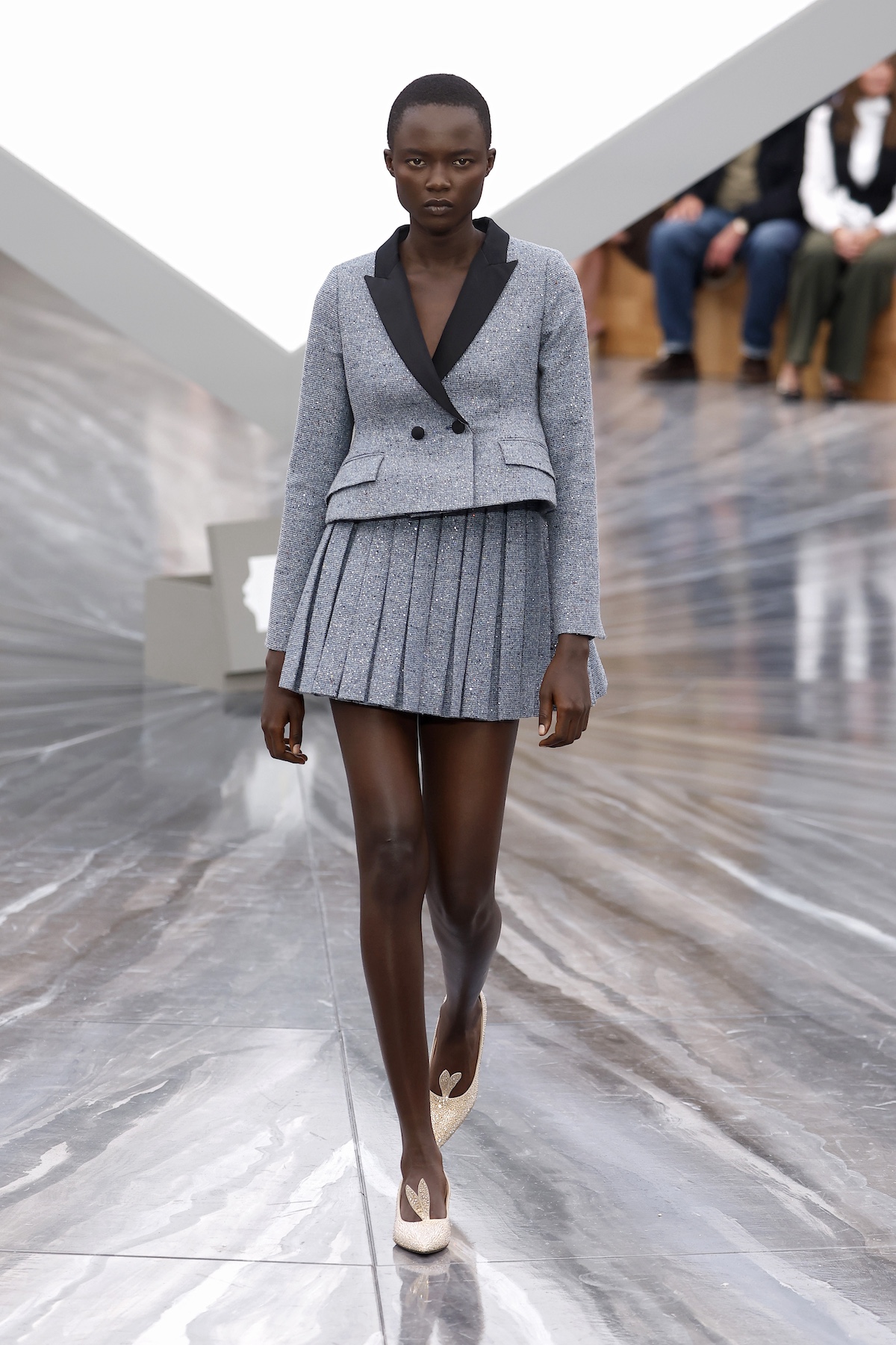
Jonathan Anderson’s debut womenswear show began with a short film by British documentary maker Adam Curtis.‘Do you dare enter the house of Dior?’ it began, before shuddering through archival footage from the house’s near-eight-decade-long history, intercut with clips from horror movies in Curtis’ dizzying, anxious style. And then – just like that – the screen turned a bright optic white and the room was illuminated, a symbolic gesture of Anderson shrugging off all that weight of history to begin anew. In the light, this was his clean slate. ‘Daring to enter the house of Dior requires an empathy with its history, a willingness to decode its language, which is part of the collective imagination, and the resoluteness to put all of it in a box,’ said Anderson via the collection notes. ‘Not to erase it, but to store it, looking ahead, coming back to bits, traces or entire silhouettes from time to time, like revisiting memories.’
So here Anderson drew on Dior’s venerable archive not in whole but in fragment, refracting silhouettes through his typically inventive lens. The Tailleur Bar – the nipped-waist Bar suit which pioneered Christian Dior’s ‘new look’ – was shrunken in size, its full skirt swapped for a mini that grazed the upper thigh, while the cantilevered waistline of a 1952 La Cigale dress appeared to inspire sculpted trapeze dresses, or double-breasted overcoats which folded across their front. Anderson said he was thinking about the ‘tension’ between fantasy and reality, of dressing up and dressing down. As such, there was theatrical cornette-style headwear, face-covering trims of lace and hourglass dresses which descended into a melange of bows, but also denim skirts, shirts and jeans, slouchy suede handbags, and classic pointed pumps. Before the show, Anderson had said he wanted to bring new women into the house of Dior, something he was no doubt thinking of in the collection’s breadth.
It made for a statement-making collection which has already got everybody talking. That is what Anderson does best. The Northern Irish designer is well aware that to sell a handbag or a pair of shoes, one must also create a distinctive, surprising universe to surround them – here, he did so in a collection that was both audacious and intuitive. It is what he did so well at Loewe, transforming the formerly sleepy Spanish house into a megabrand that he taught the world to pronounce. Now, with the eyes of the world watching, he seeks to make similar magic. Or to go back to that clever opening film, Anderson not only dares to enter the house of Dior, but he wants to renovate it too. Jack Moss
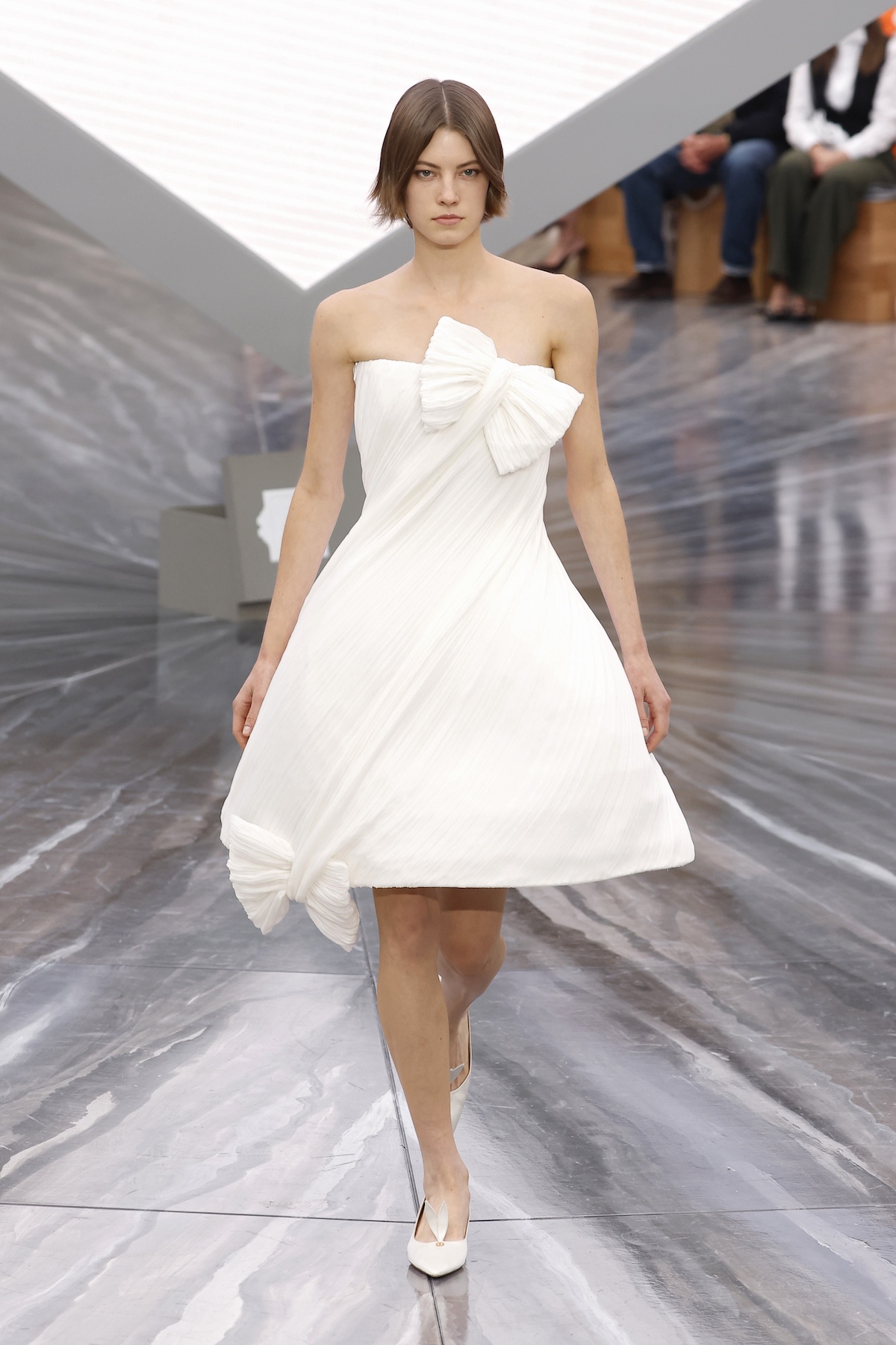
Louis Vuitton
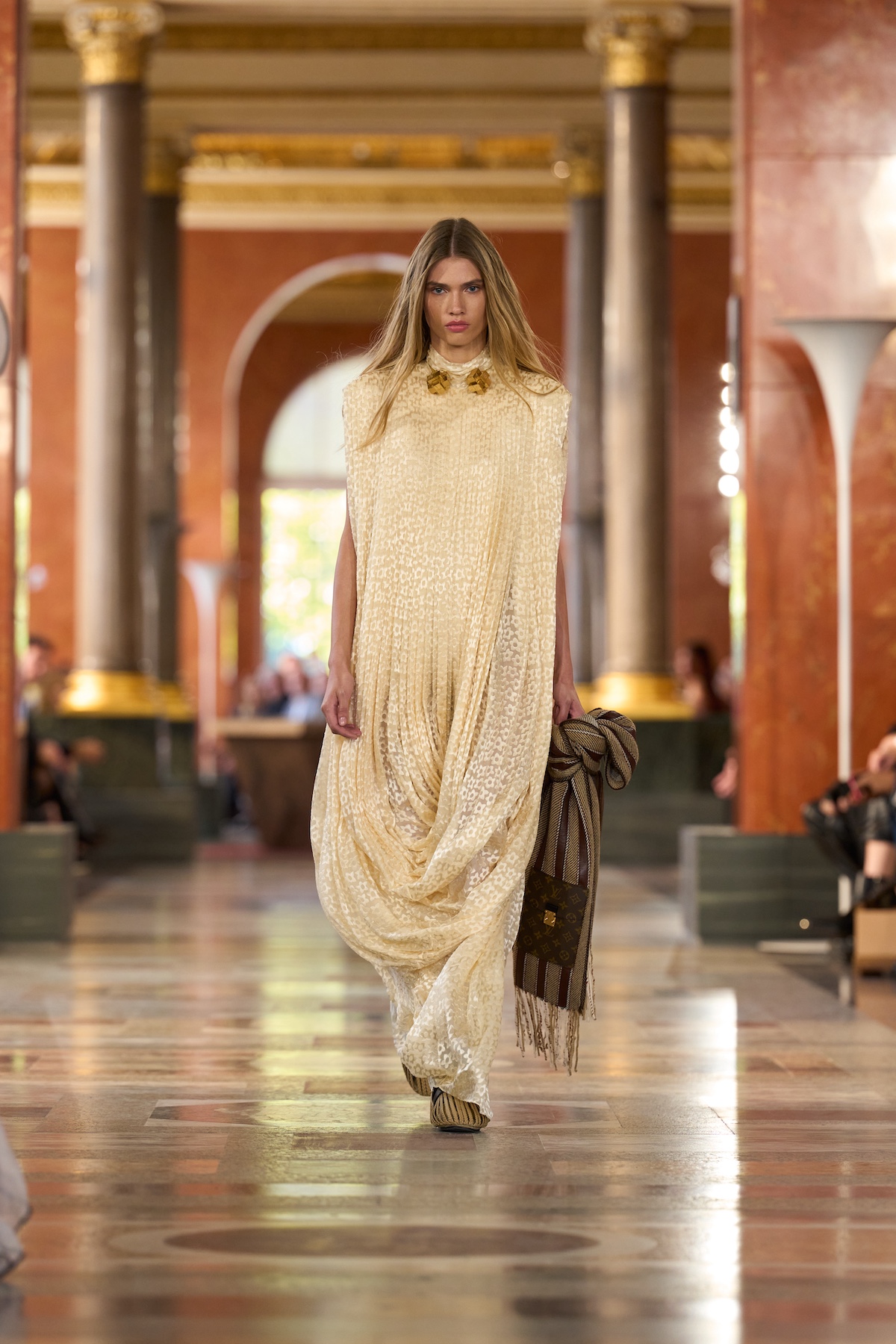
Though Nicolas Ghesquière has presented his collections numerous times at the Louvre across his tenure at Louis Vuitton – all the way back to his debut in 2014, which was held in the palace’s Cour Carrée – for S/S 2026, he chose the lesser-visited former summer apartments of Anne of Austria, Queen of France as his runway (in fact, the spaces are currently closed to public as they are in the midst of a renovation, opening again in 2027). Ghesquière said he had been thinking about the idea of intimacy, ‘the boundless freedom of the private sphere’.
In the opulent apartments, where Anne of Austria would once have roamed, Ghesquière presented a collection which reimagined hallmarks of ‘indoor’ dressing – swaddling robes, nightdresses, slippers – in imaginative style. As ever, it was an idiosyncratic melange of elements, traversing eras and styles – elongated pointed collars looked picked from a monarch’s wardrobe, while shaggy shearling collars, plissé ruffles and turbans suggested a louche 1970s glamour. Other elements seemed to recall domestic interiors: sweeping draped dresses could be read as curtains, while bows, tassels and opulent embroidered flowers evoked home furnishings.
As is Ghesquière’s skill, the borrowed elements were both recognisable and hard to place – his Vuitton woman is never restrained to a singular place or time. Instead, it was a testament, said Ghesquière, to the idea of individual style: ‘The ultimate luxury of dressing for oneself and revealing one’s true personality,’ he described. With this, it fits neatly into the season’s emerging theme: the idea of liberation through clothing, the freedom to dress as you please. Jack Moss
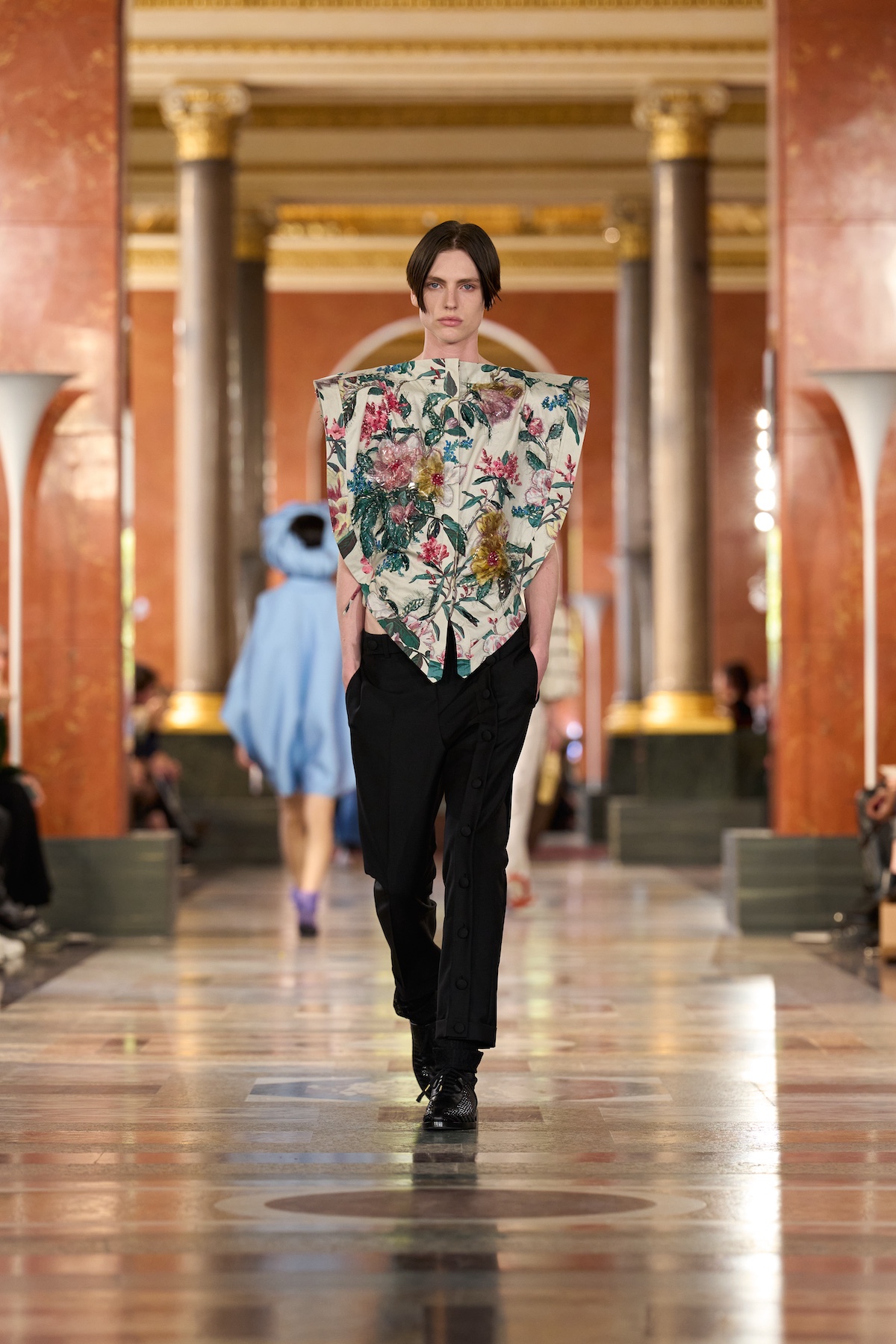
Lanvin

Last week, Lanvin announced ‘Lanvin Blue’, a new signature colour developed by creative director Peter Copping and M/M (Paris) – a nod to house founder Jeanne Lanvin’s favoured colour, a fixation that began with the skies of Fra Angelico’s frescoes (over the French couturier’s career, she would develop 23 shades of blue in her Nanterre dye factory). At yesterday afternoon’s runway show, blue provided a bold backdrop to Copping’s sophomore outing for the house, which evolved the 1920s-inflected vision of his debut earlier this year. This included Jeanne Lanvin’s signature robe de style dress of the era – a garment that drew on the wide, panniered gowns of the 18th century, loosened from restriction and dropped at the waistline to reflect the decade’s radically changing dress codes (a version also opened this season’s show, featuring a trim of bows around the neckline and a ruffled hem).
The use of blue is symbolic of Copping’s vision for the house, which is rooted in the Lanvin archive, and Jeanne Lanvin herself – after his first show in February, he described it as an ‘homage’ to the couturier... ‘I sought to project the essence of her wardrobe today while imagining it on a cast of modern characters,’ he said. It is a leap between centuries that feels particularly pertinent this year – 2025 marks 100 years of art deco, the movement with which Jeanne Lanvin is most associated (in 1925, Armand-Albert Rateau – a leading designer and furniture maker in the movement – designed a trio of blue-coloured rooms in her apartment, now on display at the Musée des Arts Décoratifs).
Here, the era’s liberated spirit came in billowing silk blouses, diaphanous twisted dresses and draped headscarves, while surface decoration – in beading and sequins – recalled deco motifs. As we reach the mid-point of our own (perhaps not so) roaring twenties, the idea of freedom through clothing that Jean Lanvin sought feels more vital than ever – a parallel Copping cleverly struck in this sophomore show. Jack Moss

Courrèges
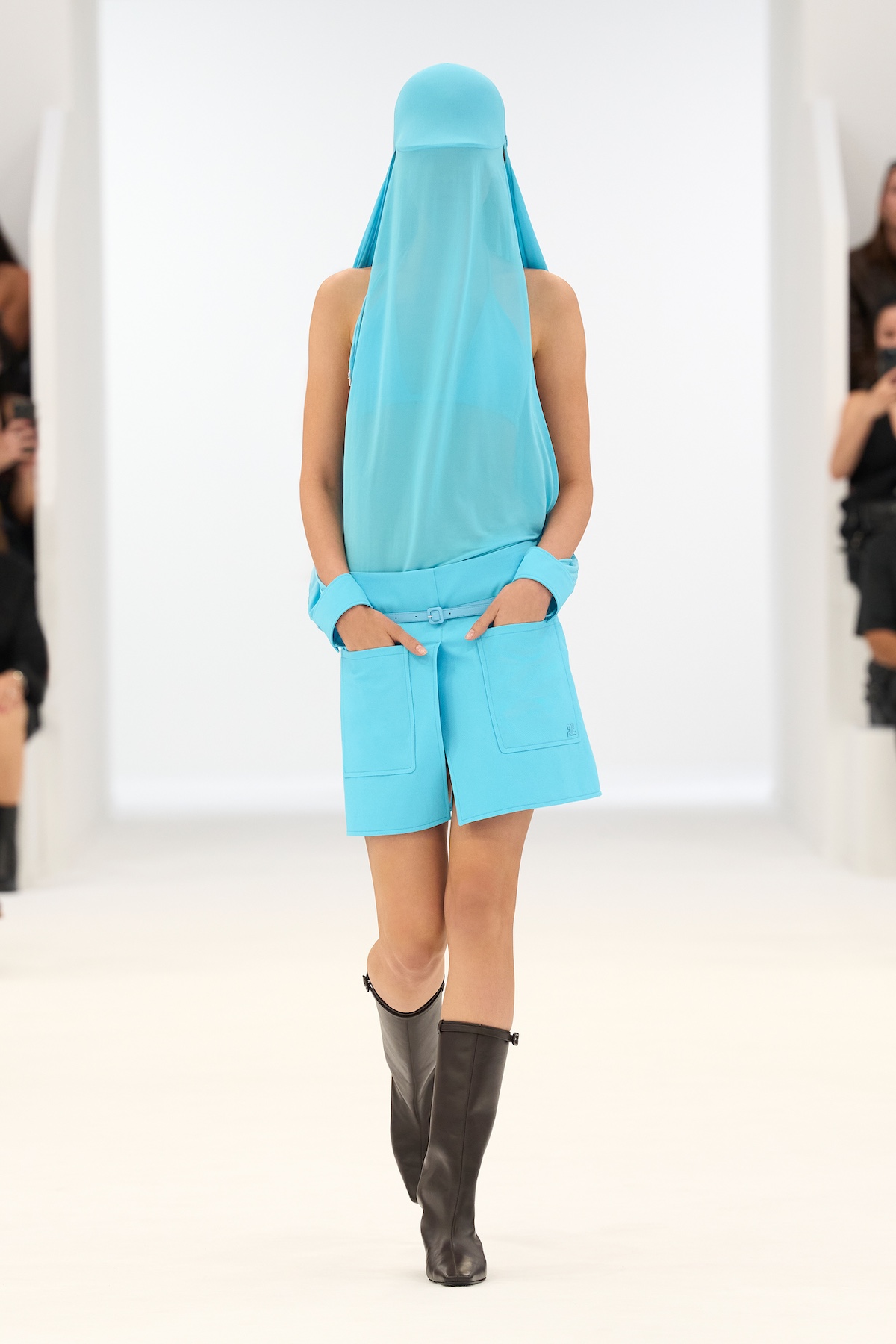
Nicolas di Felice’s mind was still on the beach – or, indeed, looking forward to next summer spent on one, the time when this collection will arrive in stores. Swapping his usual square-shaped runway for a circle (still conceived alongside artist Rémy Brière and Matière Noire, longtime collaborators), Di Felice imagined a ‘solar ascension’, designing a collection that was built around the heat of the sun on a summer’s day – specifically, from 21 degrees in the morning to 30 degrees in the heady warmth of the afternoon (in the showspace, this was imagined by the light changing from cool optic white to a warm, sunlit yellow).
Protection was a theme: the opening looks featured cleverly draped hats that shielded the models’ faces (the design was a reinterpretation of a piece from the house’s archive), while sculptural dresses took inspiration from sun visors. Skin-bearing looks provided a juxtaposition, with swimsuit-style bodysuits, mini dresses and tank tops featuring graphic cut-outs – a contemporary nod to the house founder’s space-age silhouettes. ‘Melting’ metal jewellery completed the look, which continued Di Felice’s astute reinterpretation of André Courrèges’ pioneering spirit. ‘As designers, it’s our duty to provide a unique point of view,’ Di Felice told Wallpaper* earlier this year. ‘It’s one of the many, many things I admire about André Courrèges: he wasn’t afraid of radical thinking.’ Jack Moss
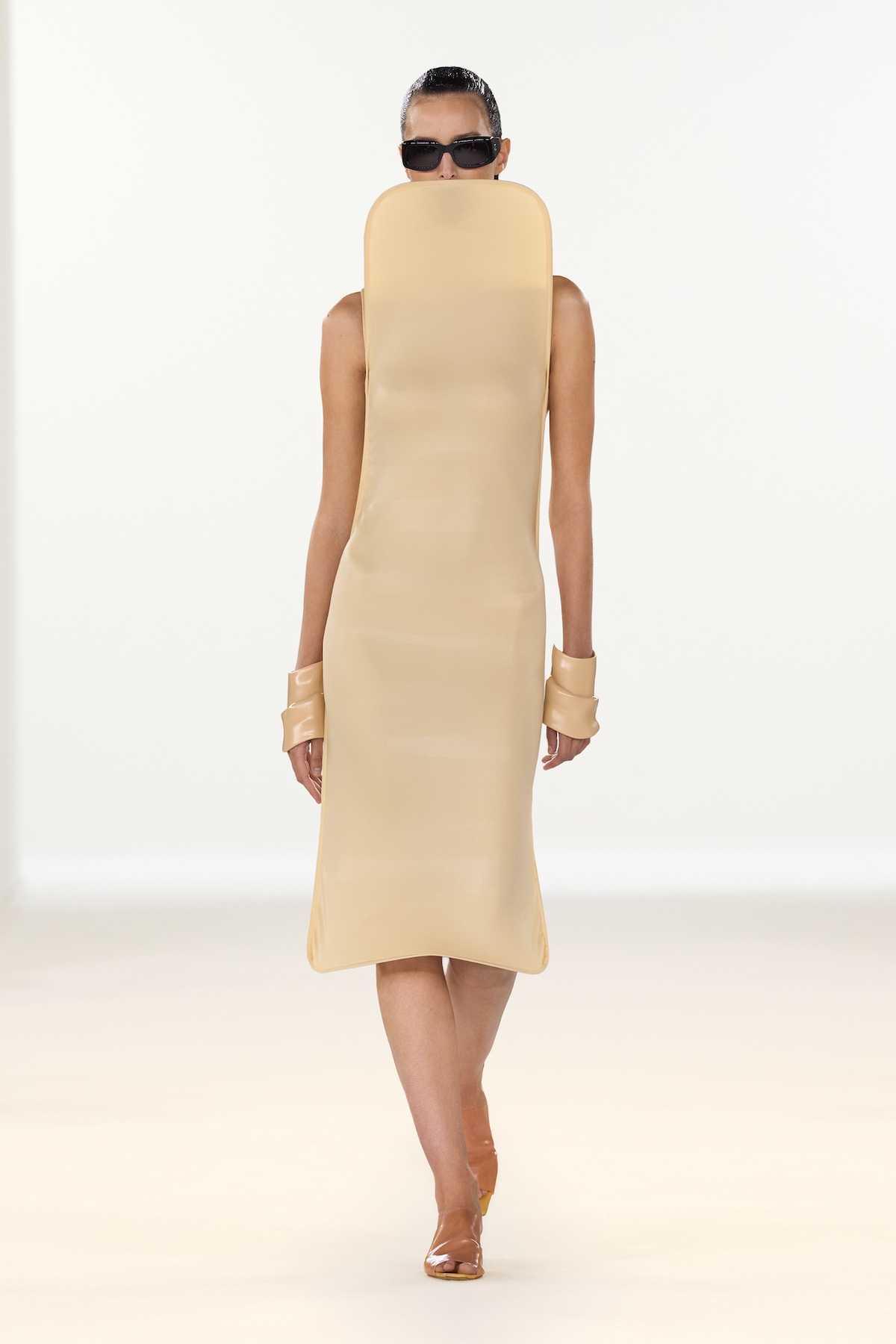
Dries Van Noten

It was the day of sophomore shows: after Peter Copping’s at Lanvin, Julian Klausner swiftly followed with his own second womenswear collection for Dries Van Noten (between his debut and now, he also showed a widely acclaimed menswear show this past June). There were no signs of the tricky second album here – the Belgian designer is already honing a vision for the label that is undeniably ‘Dries’ (Klausner worked on the brand’s design team for some years before taking the role), but has its own feeling of freshness and play. An eclectic use of colour and print (longtime hallmarks of the Antwerp-based brand) continued to define the collection, which saw clashing motifs of flowers, stripes and polka dots slowly blown up in size as the show went on – all the way to the closing looks, where the patterns became bold abstracted forms. It felt an apt companion piece to the menswear show earlier this year, where stripes and sequins were used to similarly striking effect. ‘Approaching this collection, I had in mind the Dries Van Noten wardrobe that I always loved – traditional yet daring, the different layers of dressing up,’ he said back then. This collection delighted in a similarly audacious spirit – one laced with the romance and sensitivity which defined Dries Van Noten’s best collections. Jack Moss
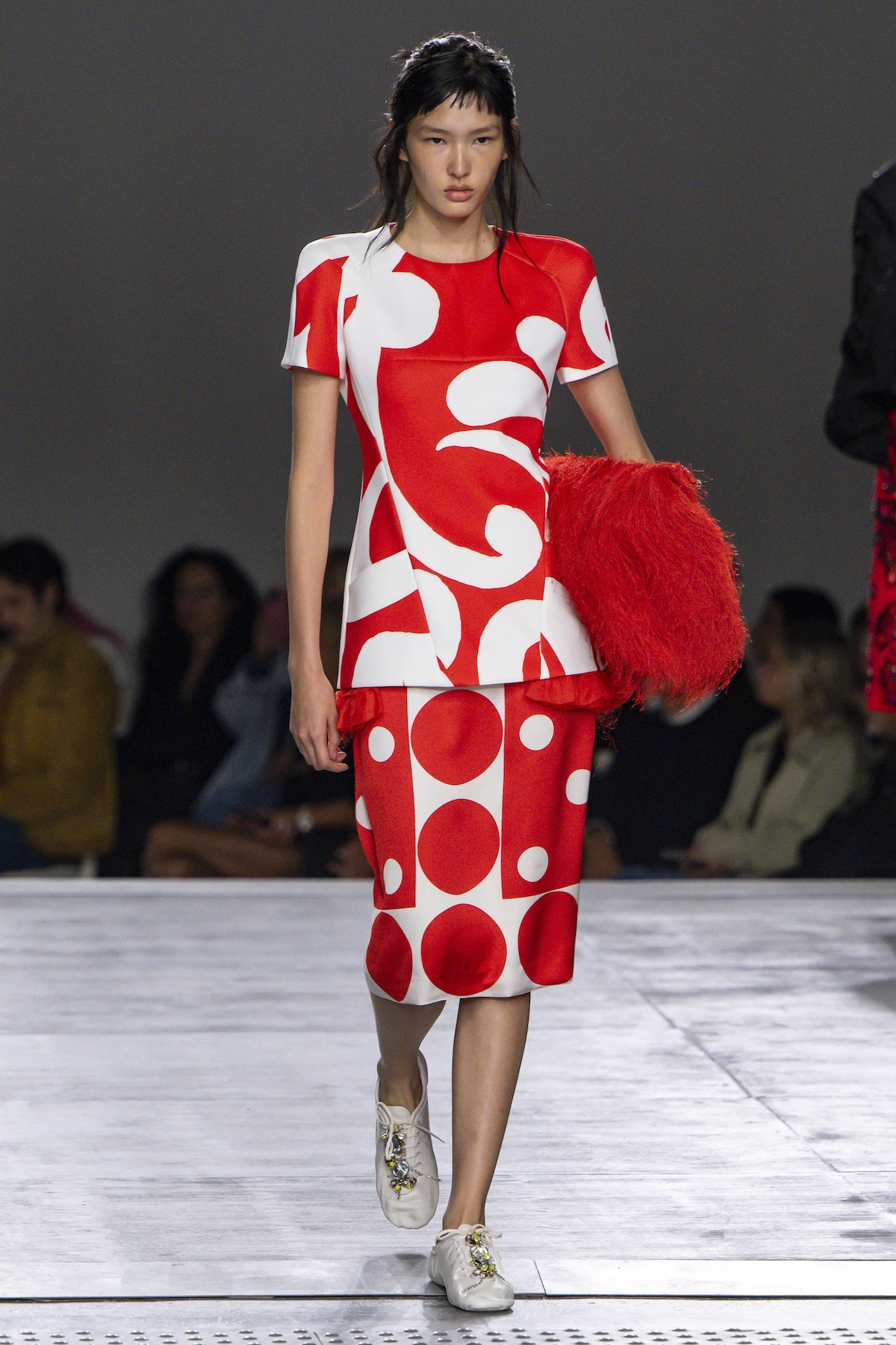
Stella McCartney
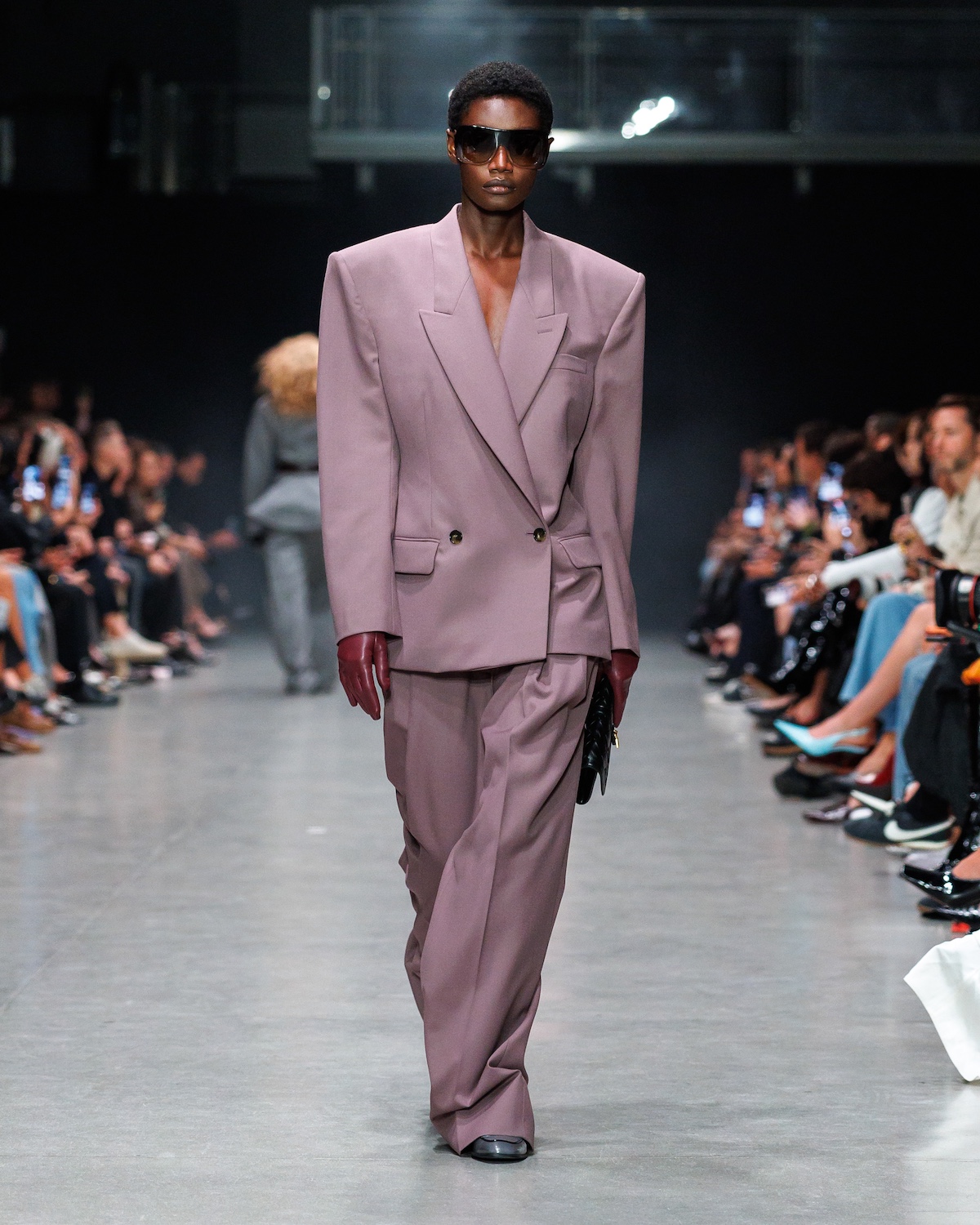
Stella McCartney drafted Helen Mirren to serve as the opening act for her S/S 2026 show, which took place yesterday evening at the Pompidou Centre. Clad in a grey suit from the British label, Mirren read the lyrics of The Beatles’ ‘Come Together’ – a song McCartney chose for its plea for unity (so the story goes, the song began life as an attempt by John Lennon to write a campaign song for LSD advocate Timothy Leary’s Governor of California run). Its central message, said McCartney (herself a longtime activist), felt particularly pertinent in turbulent political times – ‘Come together for humanity, animals and Mother Earth,’ was the designer’s own appeal to the gathered audience. In the collection, this was figured through typically innovative fabrications, free of animal cruelty and with meticulous sustainable credentials, from ‘Fevvers’ – a plant-based alternative to animal feathers – to Pure.Tech, the first ‘programmable’ fabric that ‘absorbs and neutralises pollutants including CO₂ and NOx’. The latter was applied to deconstructed denim, part of a collection which was built on the idea of juxtapositions: ‘masculine and feminine, grounded yet ethereal’. Wide-shouldered power tailoring – a redux of last season’s ‘Working Girl’ look – and baggy carpenter trousers represented the former, while sequined minis, froths of ruffles and body-wrapping gowns captured a contemporary femininity. Jack Moss
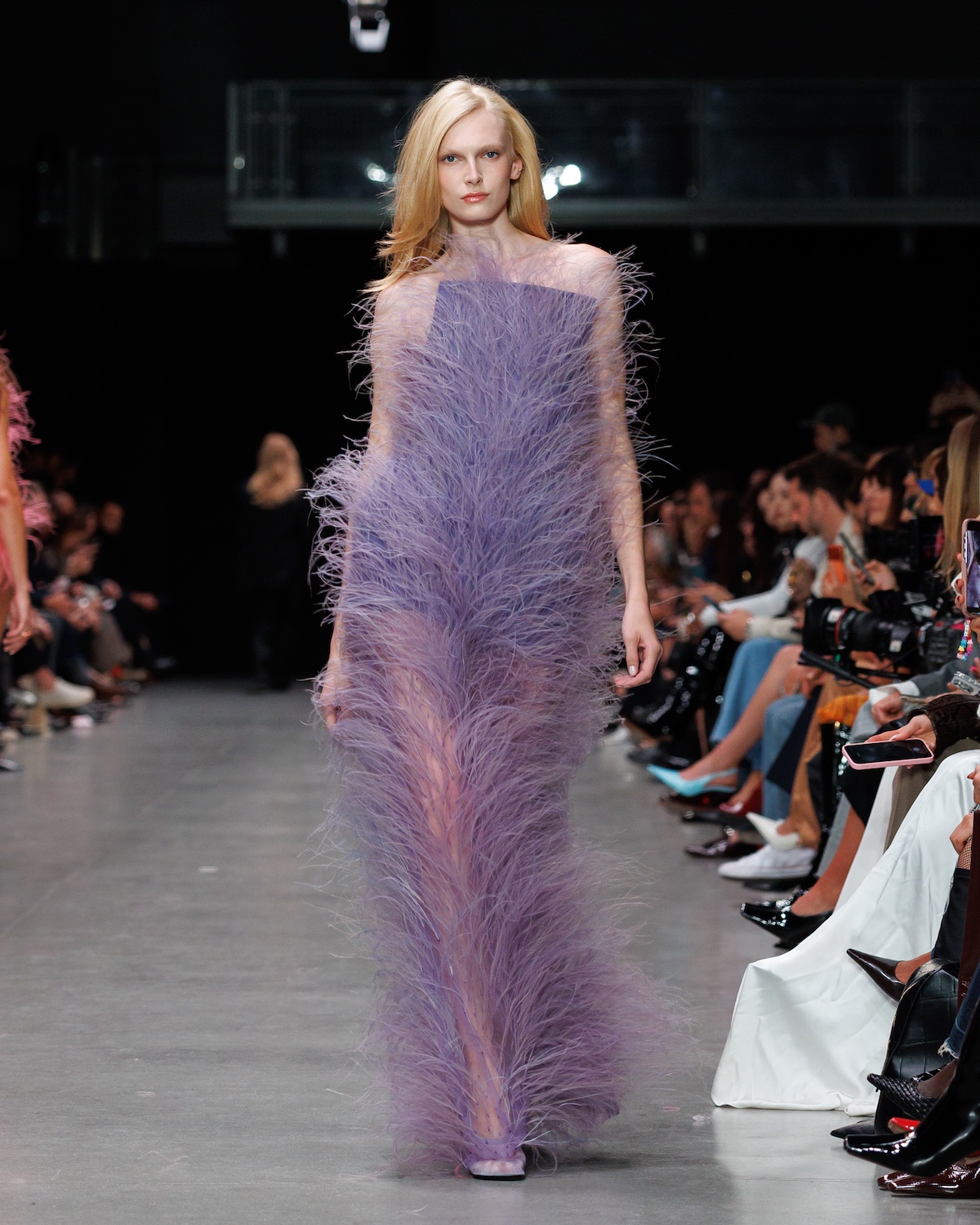
Jack Moss is the Fashion Features Editor at Wallpaper*, joining the team in 2022. Having previously been the digital features editor at AnOther and digital editor at 10 and 10 Men magazines, he has also contributed to titles including i-D, Dazed, 10 Magazine, Mr Porter’s The Journal and more, while also featuring in Dazed: 32 Years Confused: The Covers, published by Rizzoli. He is particularly interested in the moments when fashion intersects with other creative disciplines – notably art and design – as well as championing a new generation of international talent and reporting from international fashion weeks. Across his career, he has interviewed the fashion industry’s leading figures, including Rick Owens, Pieter Mulier, Jonathan Anderson, Grace Wales Bonner, Christian Lacroix, Kate Moss and Manolo Blahnik.
-
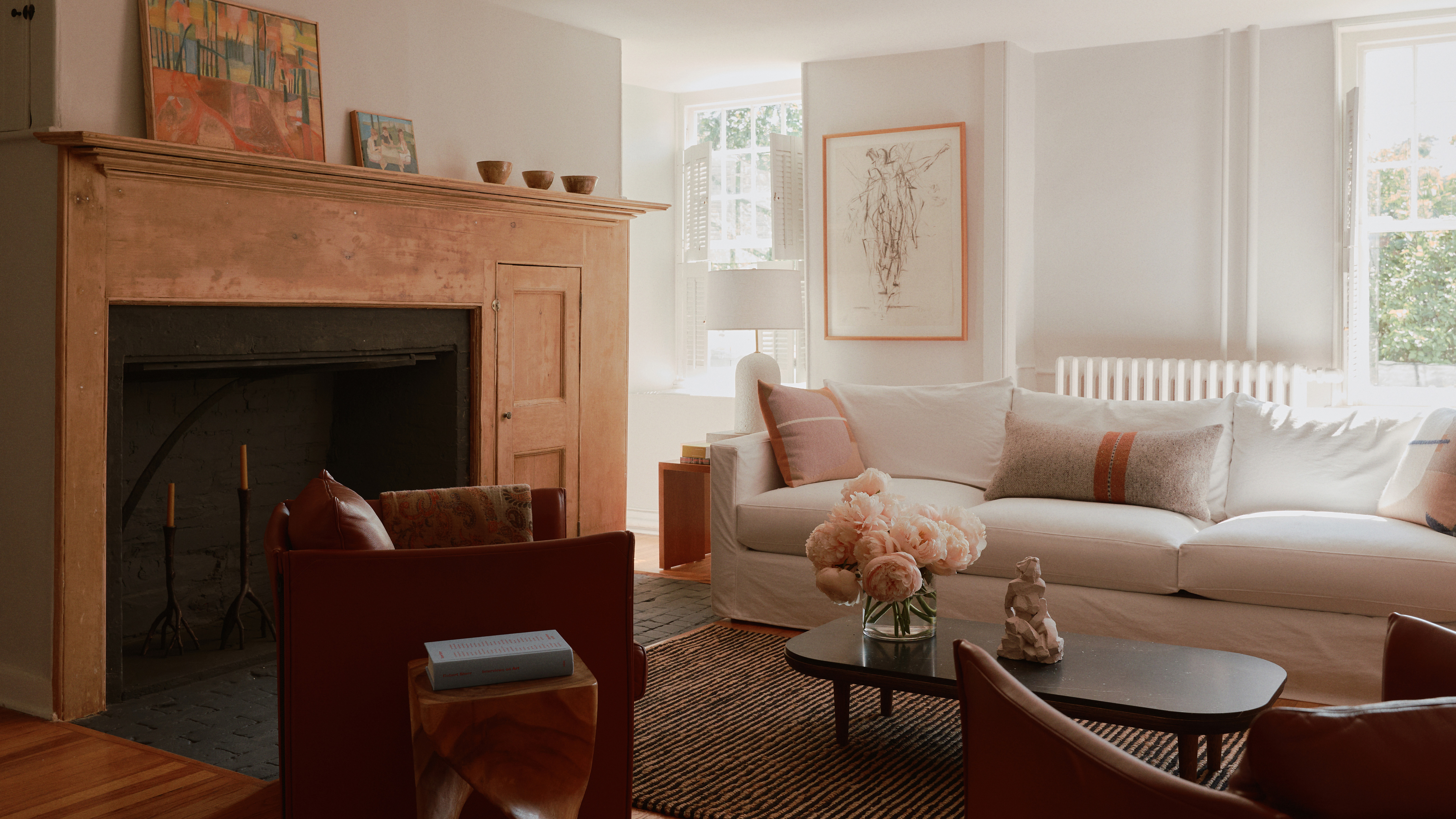 Once overrun with florals, this old Hudson farmhouse is now a sprawling live-work artist’s retreat
Once overrun with florals, this old Hudson farmhouse is now a sprawling live-work artist’s retreatBuilt in the 1700s, this Hudson home has been updated into a vast creative compound for a creative, yet still exudes the ‘unbuttoned’ warmth of its first life as a flower farm
-
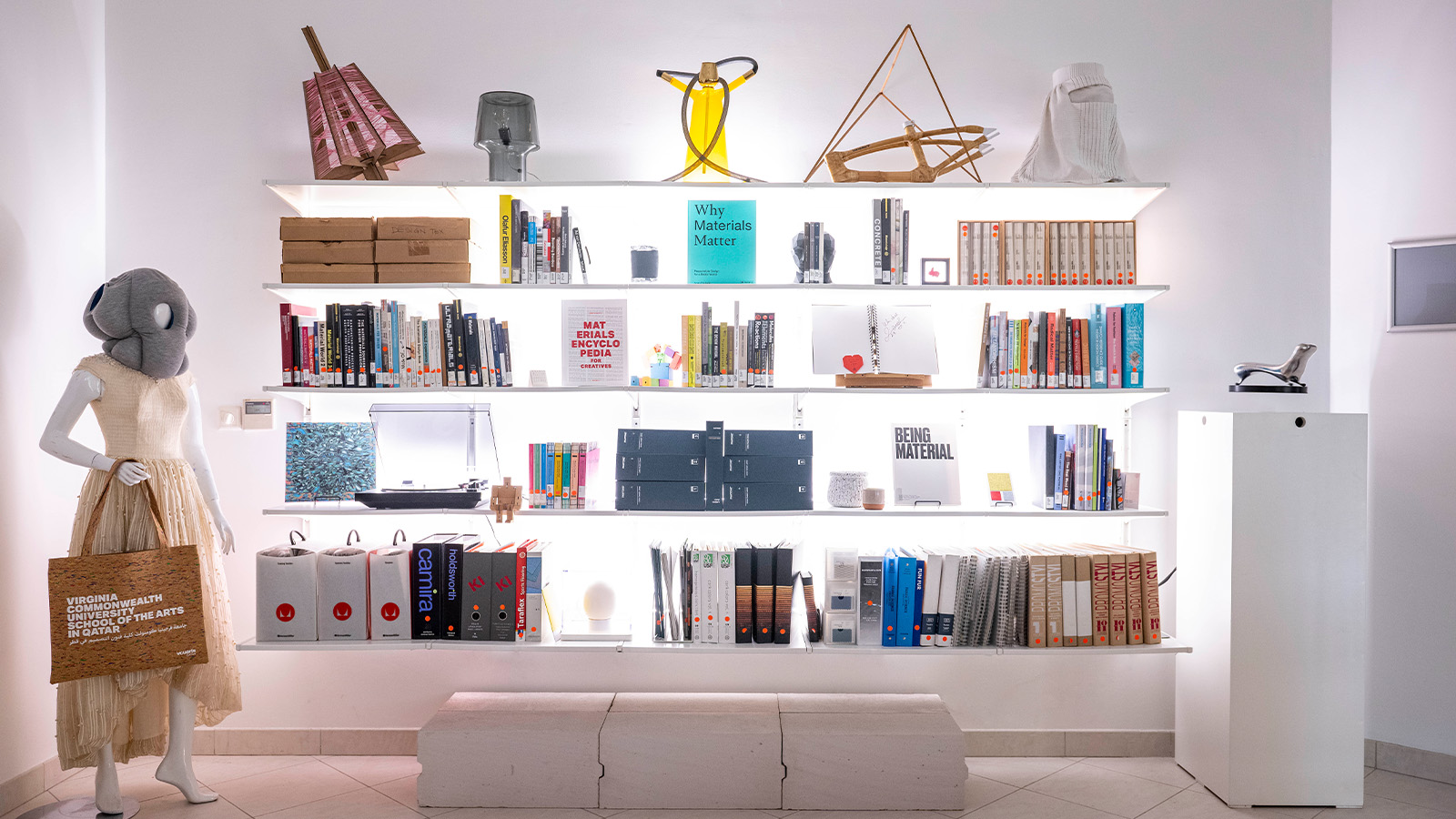 How VCUarts Qatar is weaving local roots into global creative conversations
How VCUarts Qatar is weaving local roots into global creative conversationsThrough the university's arts, design, and humanities programmes, dean Amir Berbić is spearheading a unique blend of heritage and future-forward thinking for students to create a design language that captures Qatar’s continually shifting cultural landscape
-
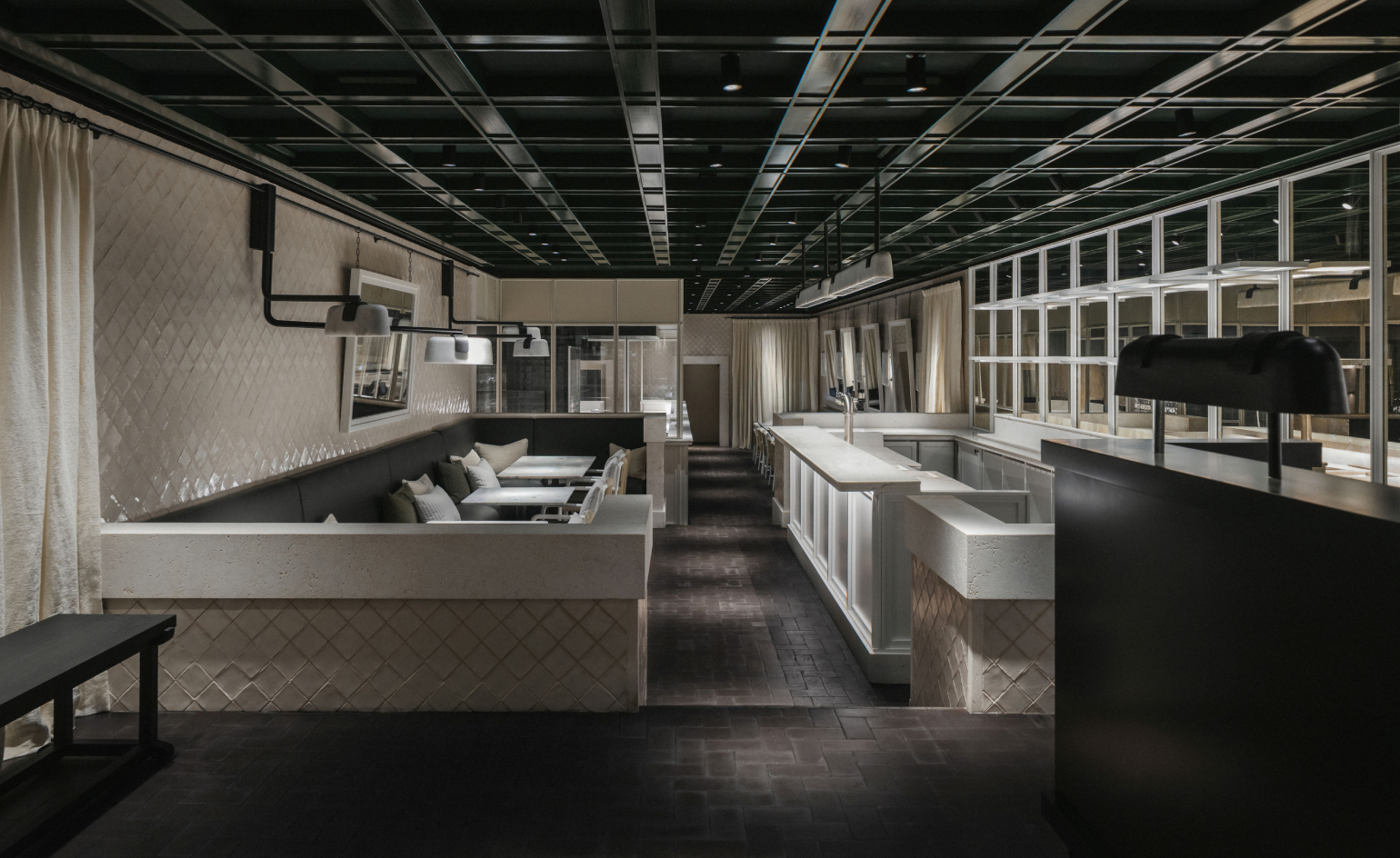 Vincent van Duysen reimagines Lisbon dining at Jncquoi Fish
Vincent van Duysen reimagines Lisbon dining at Jncquoi FishA minimalist yet richly textural world sets the tone at a buzzy new Lisbon restaurant, where Portuguese craft, Atlantic produce and fine-tuned gastronomy meet
-
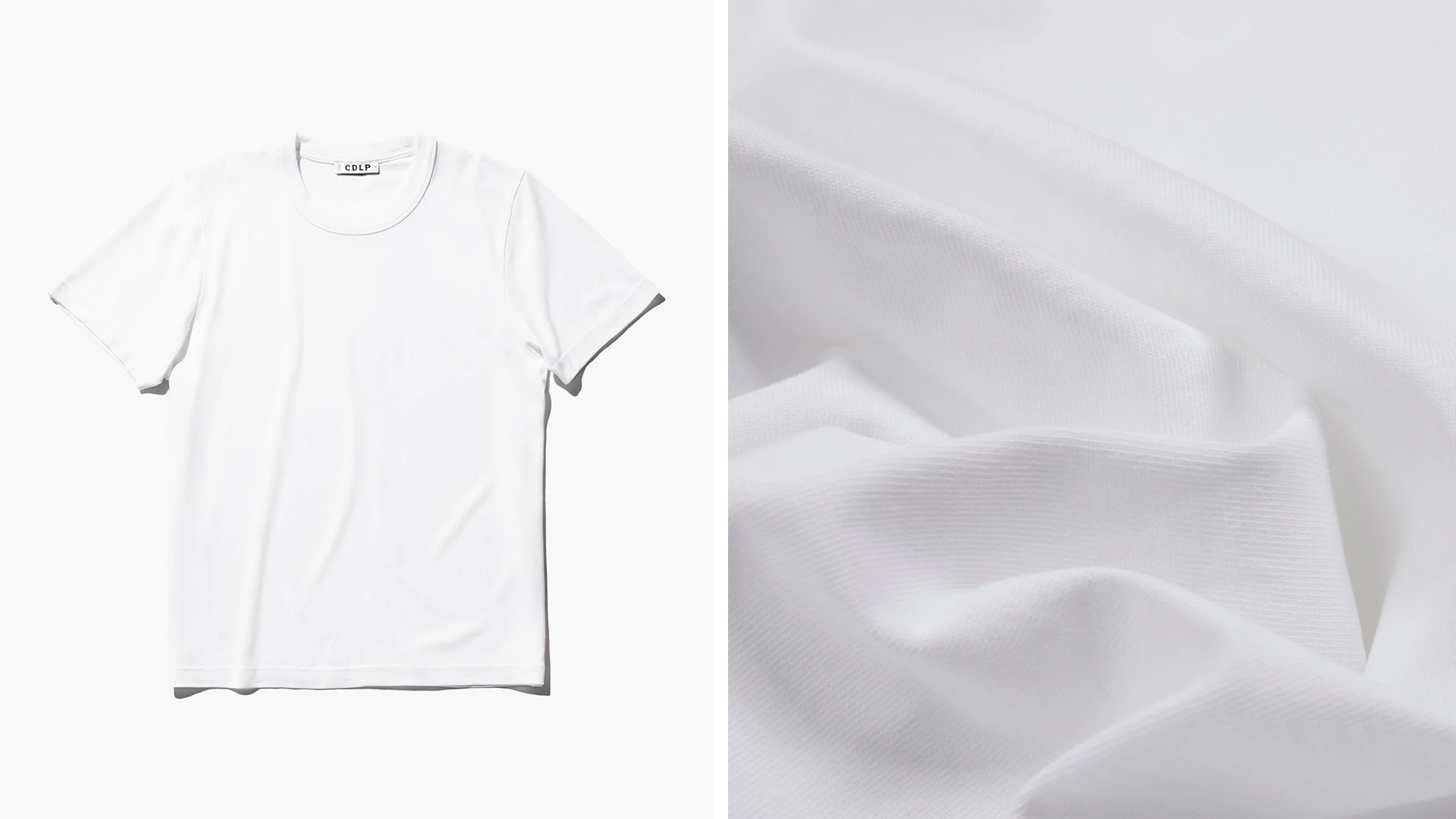 25 of the best white T-shirts, fashion’s most versatile staple
25 of the best white T-shirts, fashion’s most versatile stapleThe white T-shirt is the foundation of any good outfit, but finding the perfect one isn’t easy. We've curated a unisex list of our fashion desk’s favourite white tees, from cult favourites to luxurious classics
-
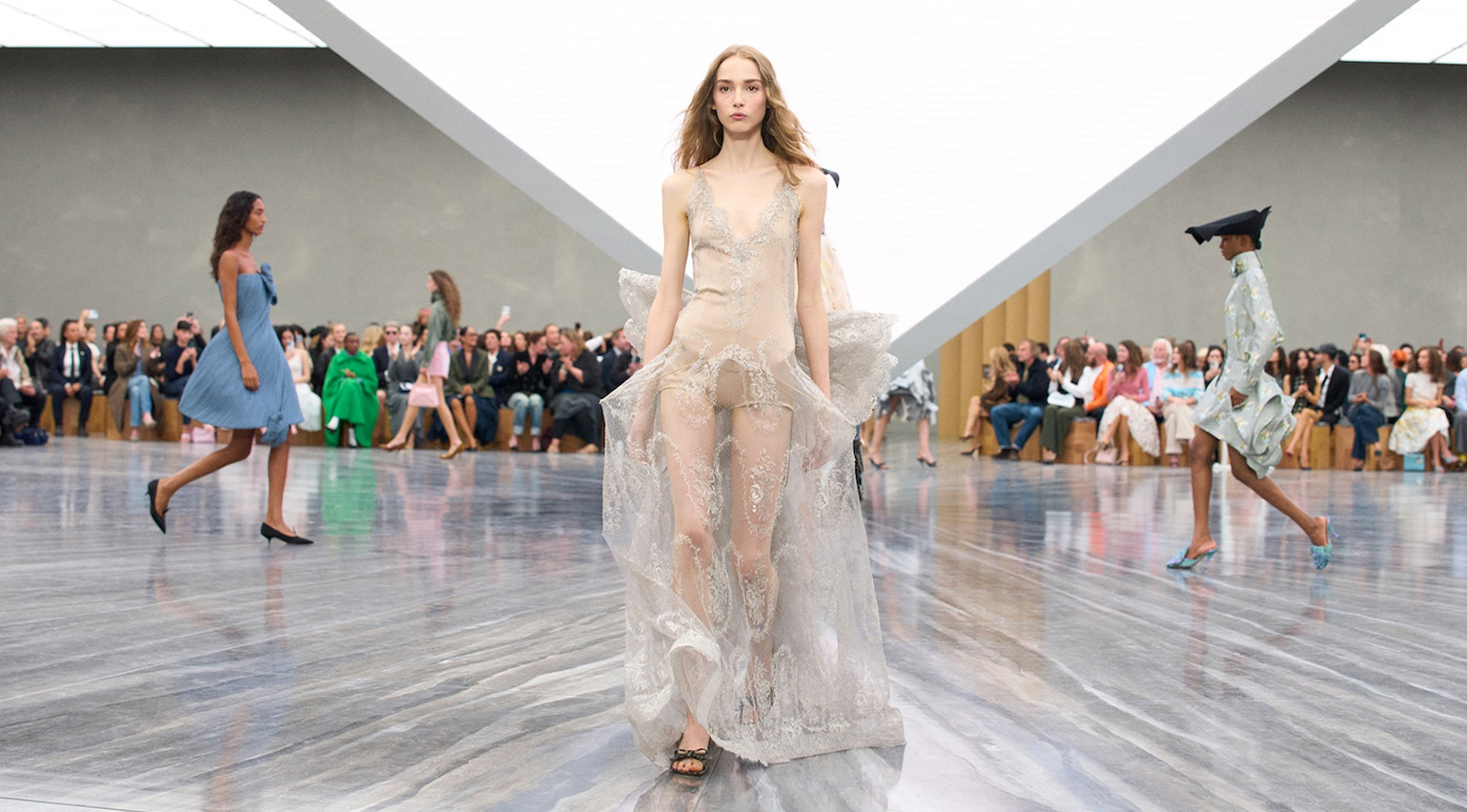 The key takeaways from the S/S 2026 shows: freedom, colour and romance define fashion’s new chapter
The key takeaways from the S/S 2026 shows: freedom, colour and romance define fashion’s new chapterWe unpack the trends and takeaways from the S/S 2026 season, which saw fashion embrace a fresh start with free-spirited collections and a bold exploration of colour and form
-
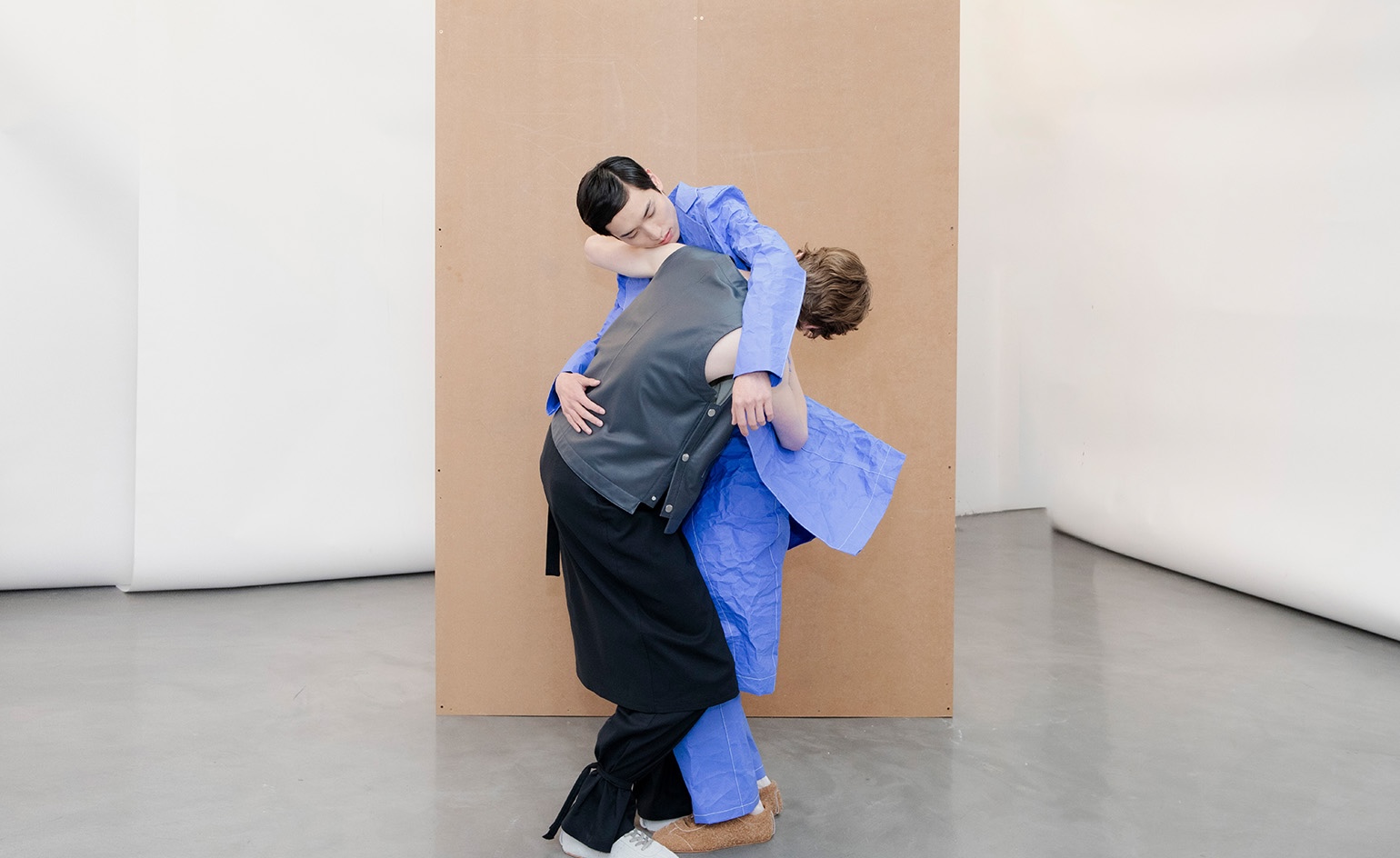 The independent designers you might have missed from fashion month S/S 2026
The independent designers you might have missed from fashion month S/S 2026Amid a tidal wave of big-house debuts, we take you through the independent displays that may have slipped through the cracks – from beautiful imagery to bookshop takeovers, museum displays and moves across the pond
-
 From wearable skincare to scented runways, unpacking the unconventional beauty moments of fashion month S/S 2026
From wearable skincare to scented runways, unpacking the unconventional beauty moments of fashion month S/S 2026The S/S 2026 season featured everything from probiotic-lined athleisure to fragranced runways – and those Maison Margiela mouthguards
-
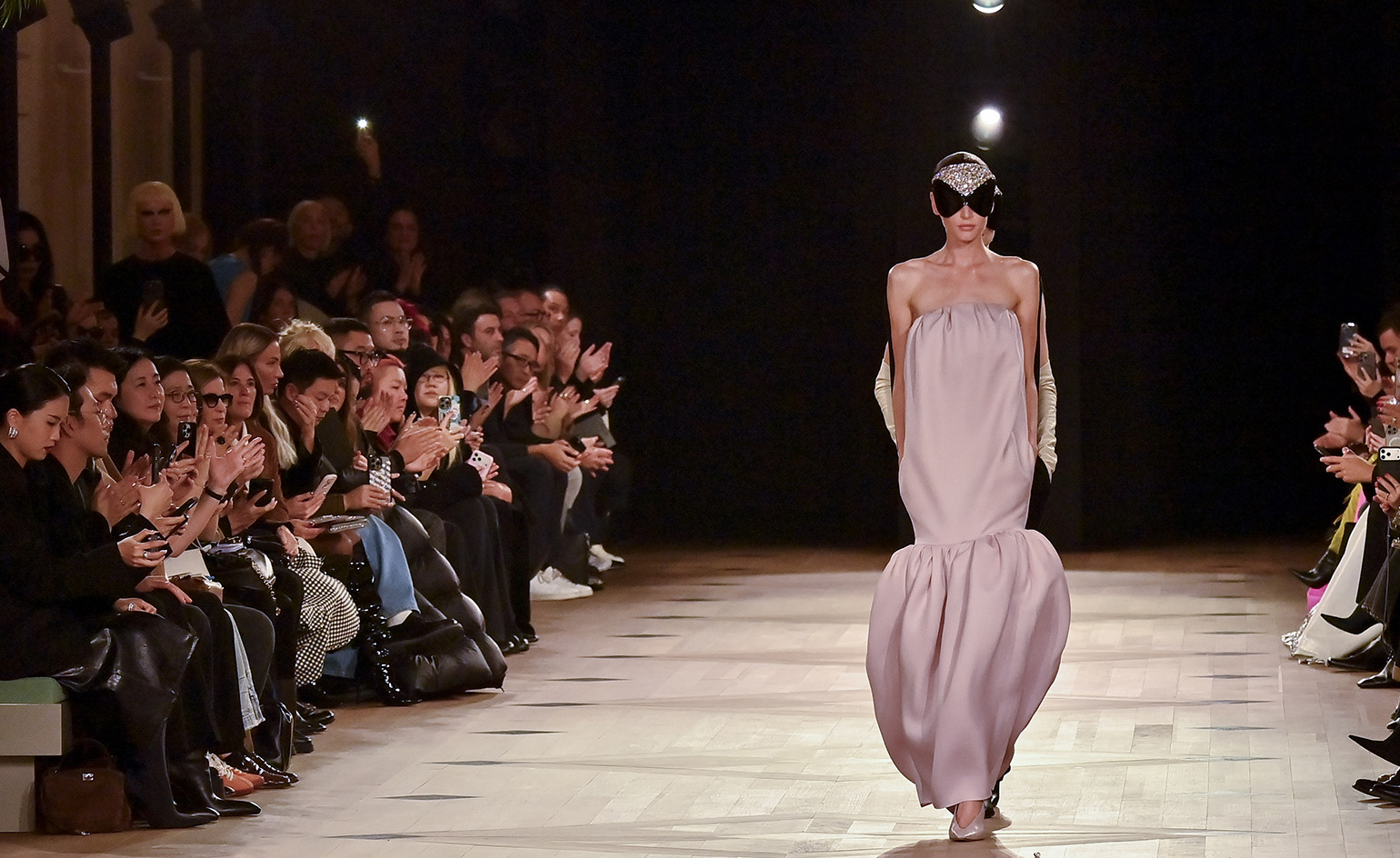 Pierpaolo Piccioli makes Balenciaga debut ‘from a place of love and connection’
Pierpaolo Piccioli makes Balenciaga debut ‘from a place of love and connection’Attended by Anne Hathaway and Meghan Markle, the ex-Valentino designer’s first runway display for Balenciaga took place within Kering’s Paris headquarters
-
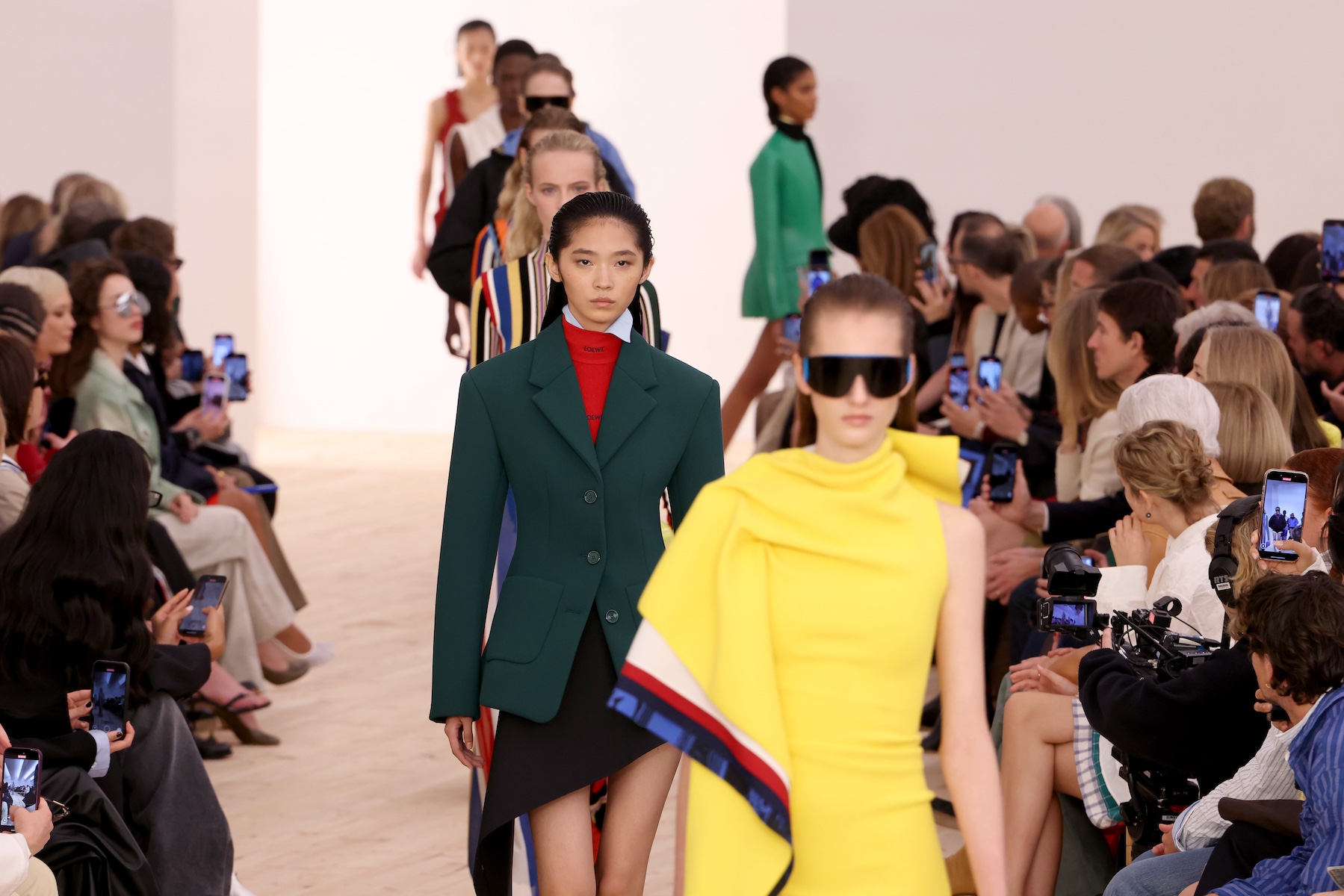 Jack McCollough and Lazaro Hernandez make a bold start at Loewe, inspired by Ellsworth Kelly’s ‘elemental colours’
Jack McCollough and Lazaro Hernandez make a bold start at Loewe, inspired by Ellsworth Kelly’s ‘elemental colours’The former Proenza Schouler designers presented their debut collection for Loewe this morning, channelling ‘clarity and colour, sensual physicality, and sunniness’
-
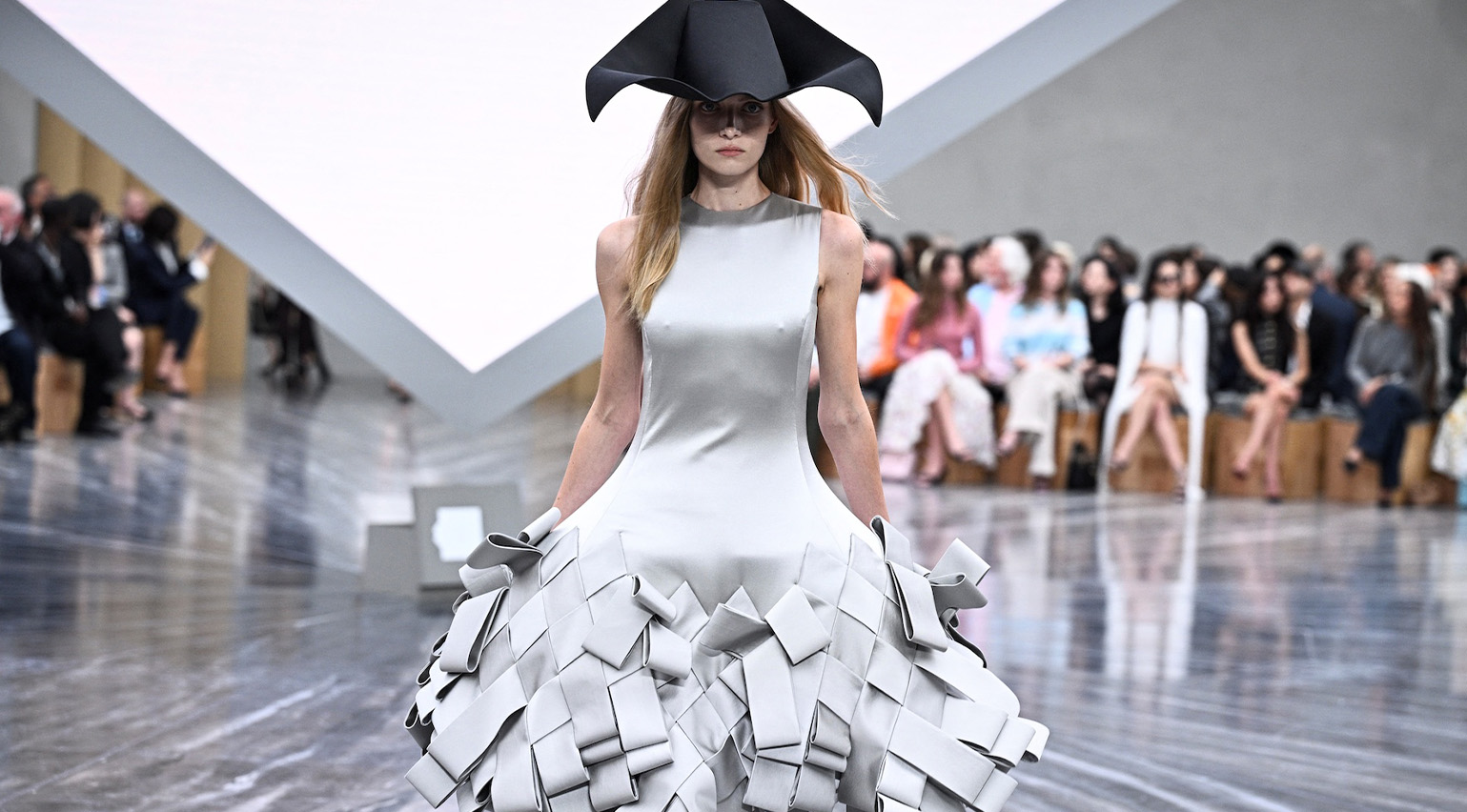 ‘Change is inevitable’: Jonathan Anderson’s first Dior womenswear collection recodes the house’s archive
‘Change is inevitable’: Jonathan Anderson’s first Dior womenswear collection recodes the house’s archiveAn audacious collection from the Northern Irish designer, presented in Paris this afternoon, saw him reconsider the Dior archive in his unwaveringly inventive style
-
 Acne Studios’ cigar salon runway set is decorated with Pacifico Silano’s homoerotic ‘objects of desire’
Acne Studios’ cigar salon runway set is decorated with Pacifico Silano’s homoerotic ‘objects of desire’Brooklyn-based artist Pacifico Silano breaks down his collaboration with Acne Studios, seeing his work – which zooms in on 1970s and 1980s gay erotica – backdrop the brand’s S/S 2026 show today in Paris